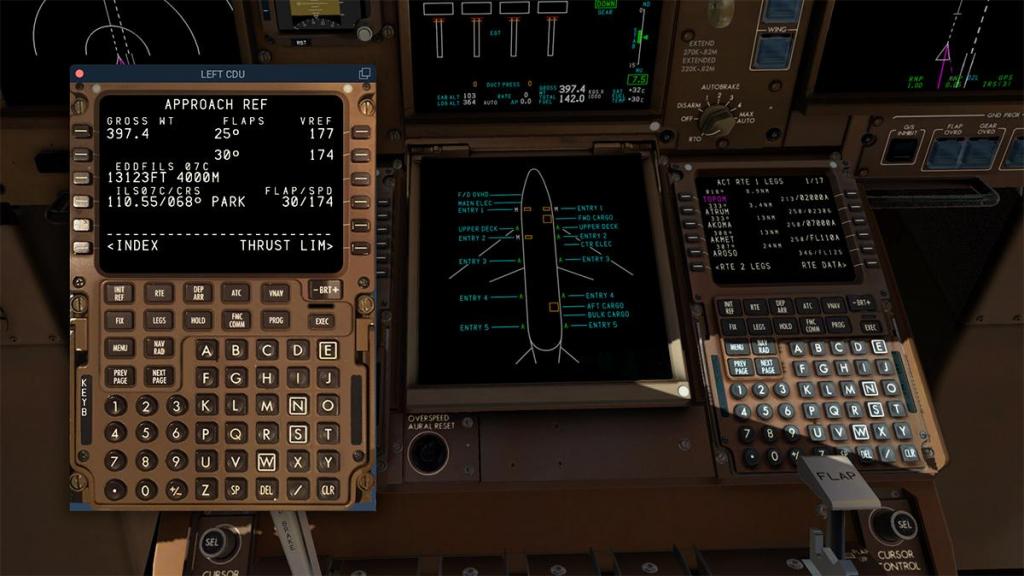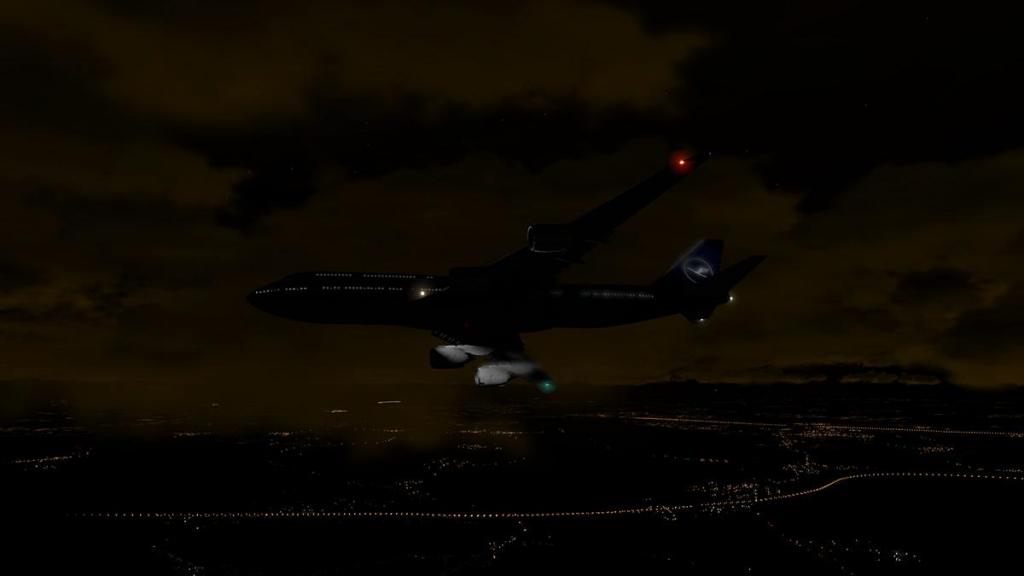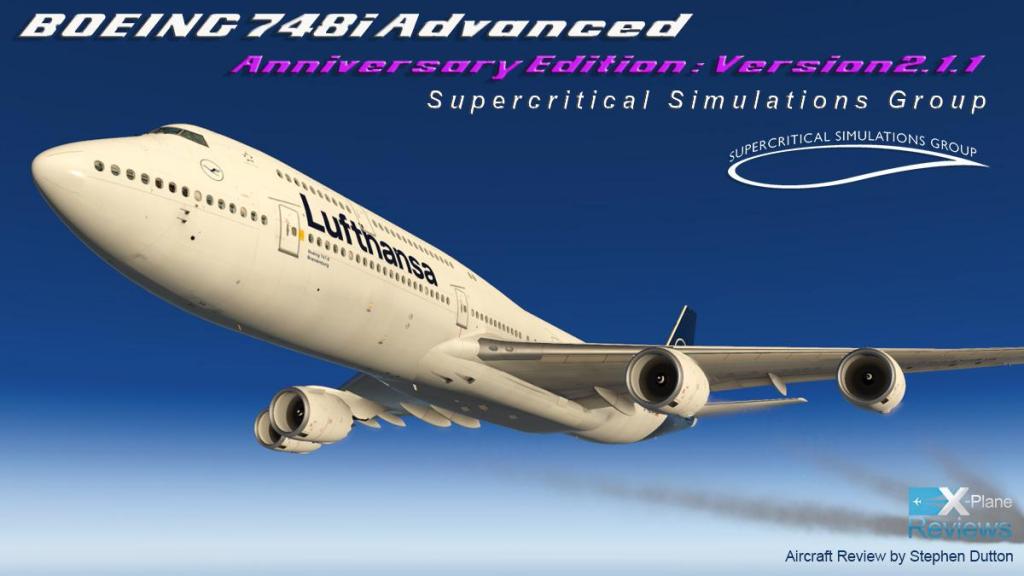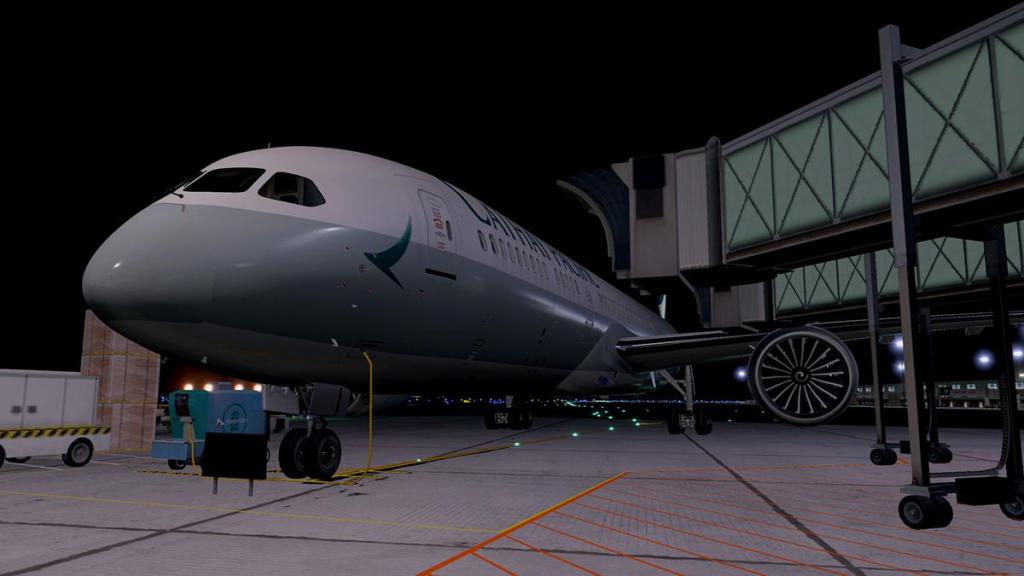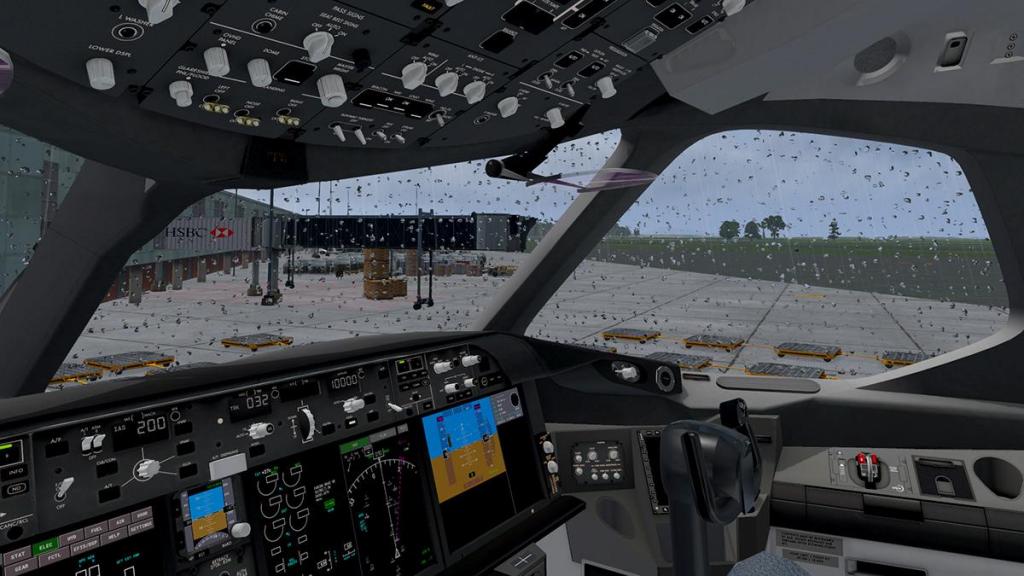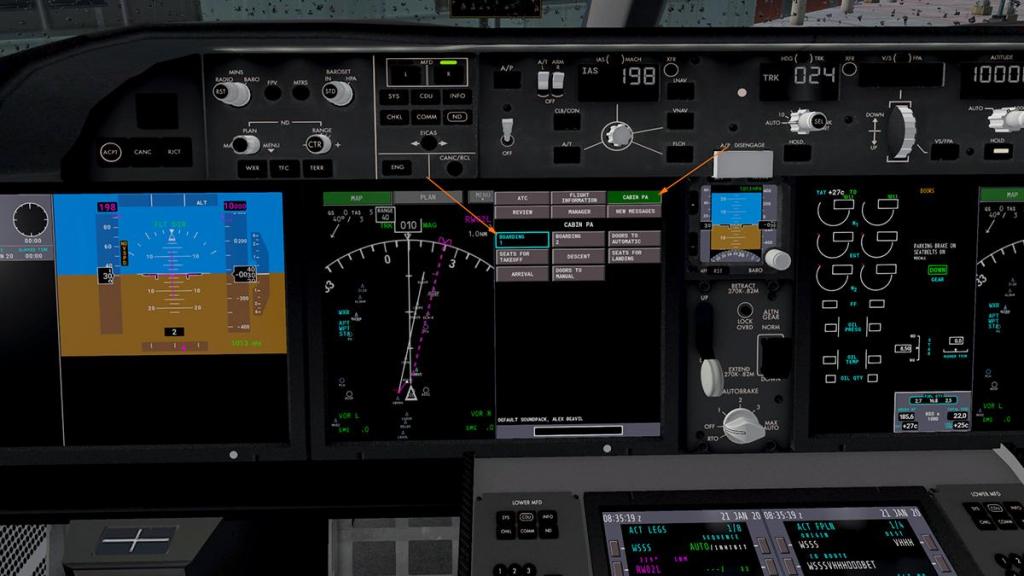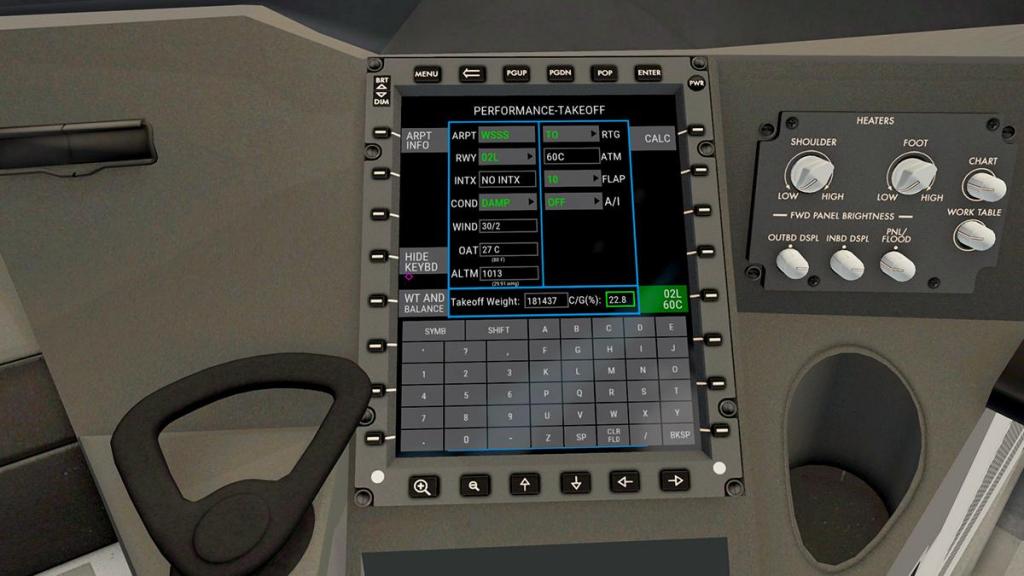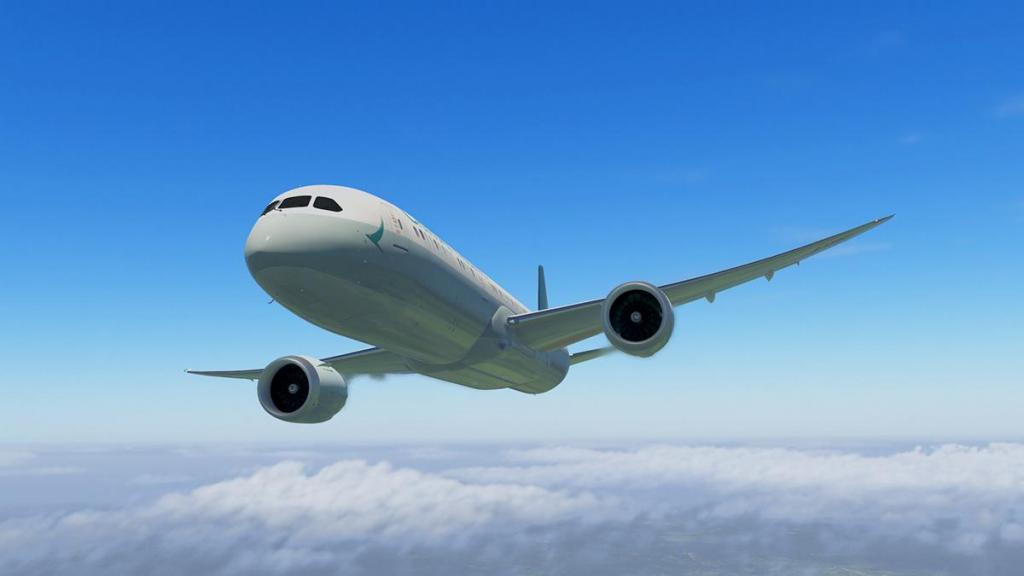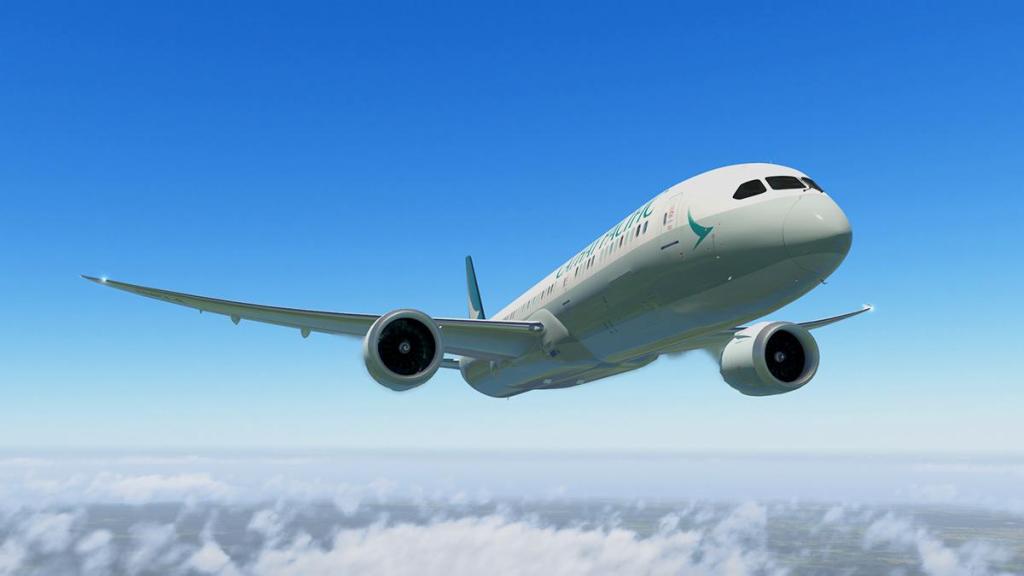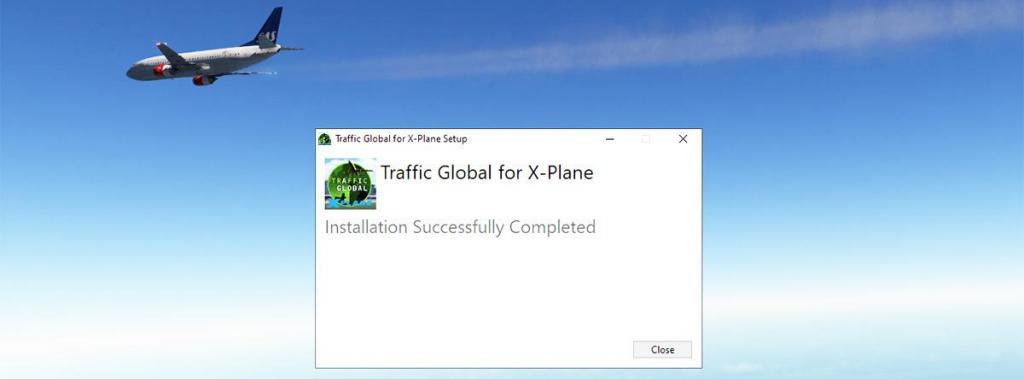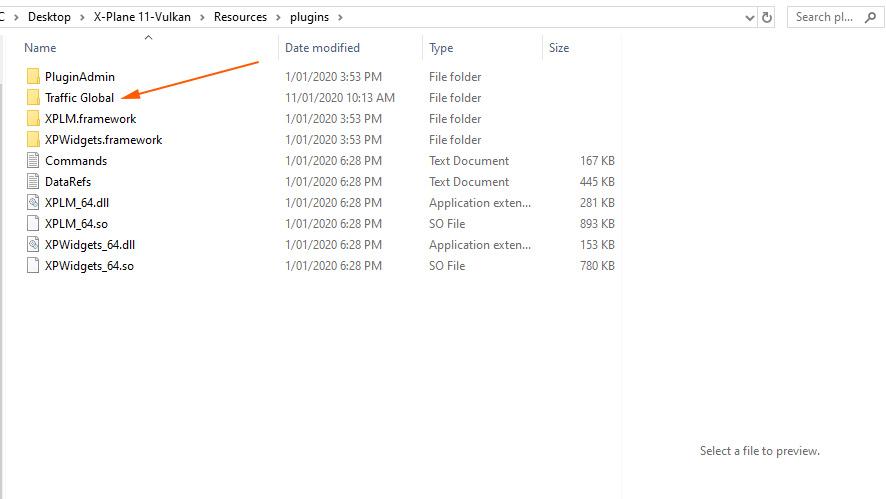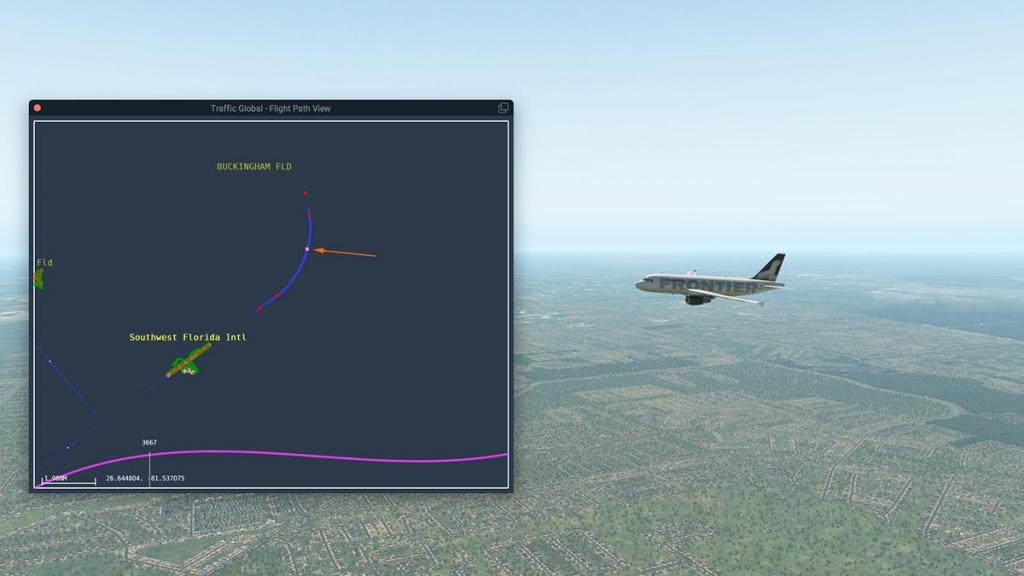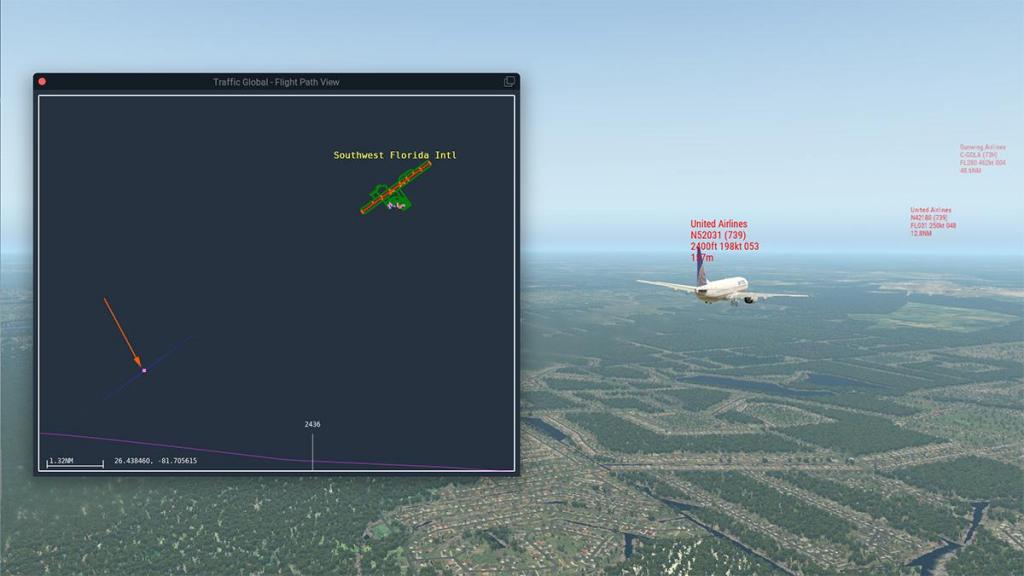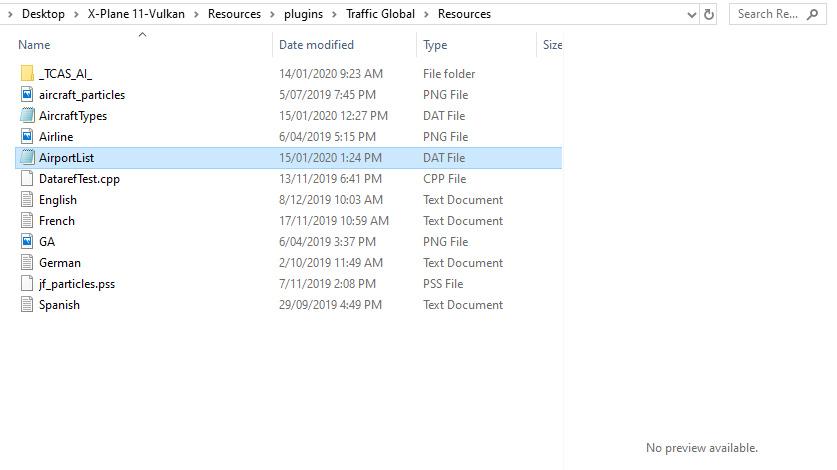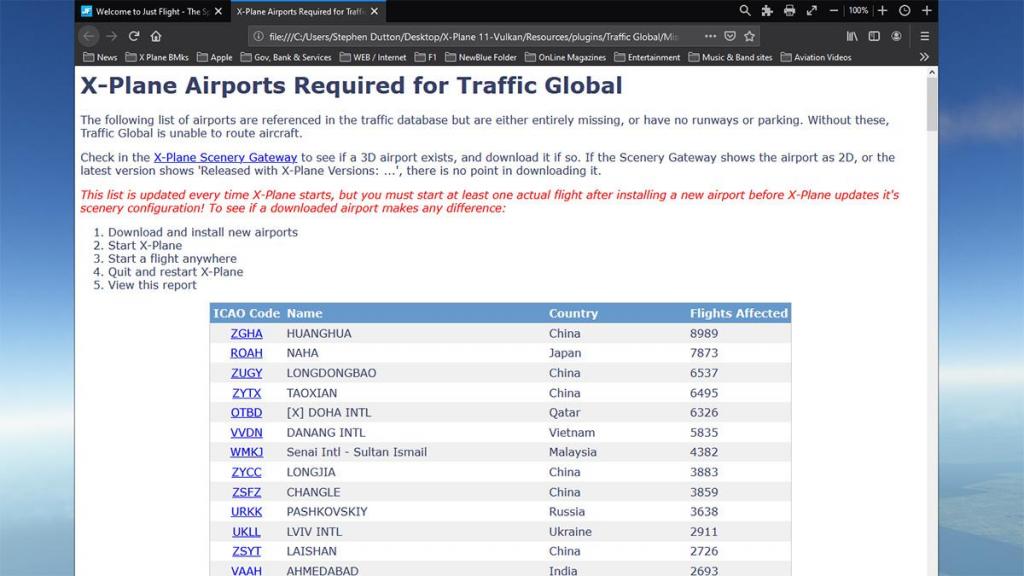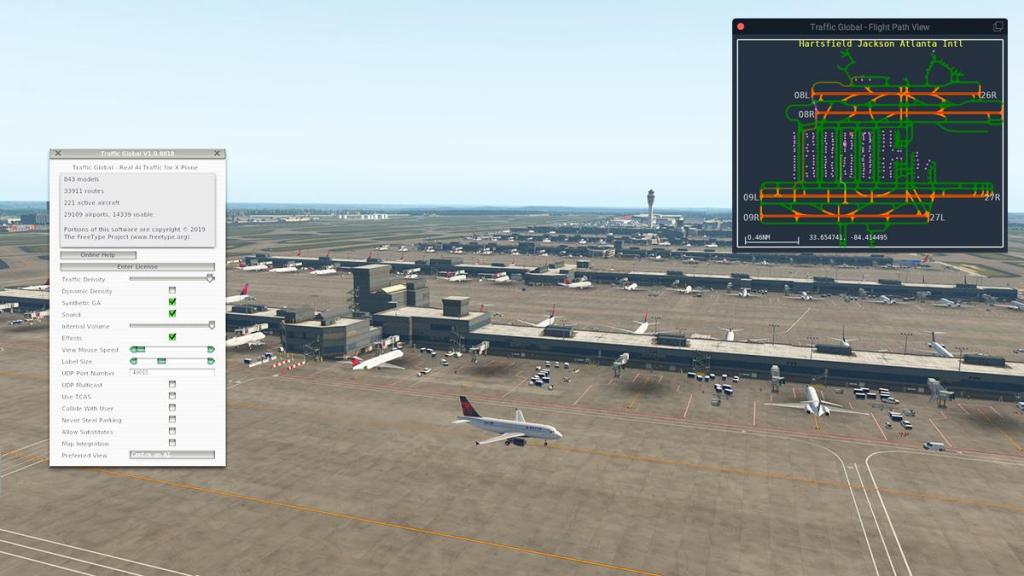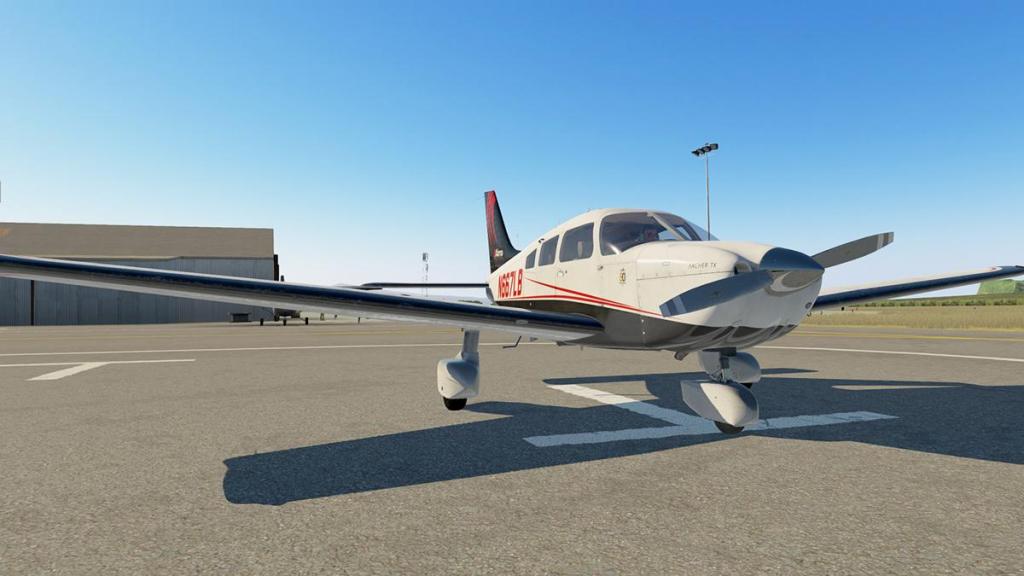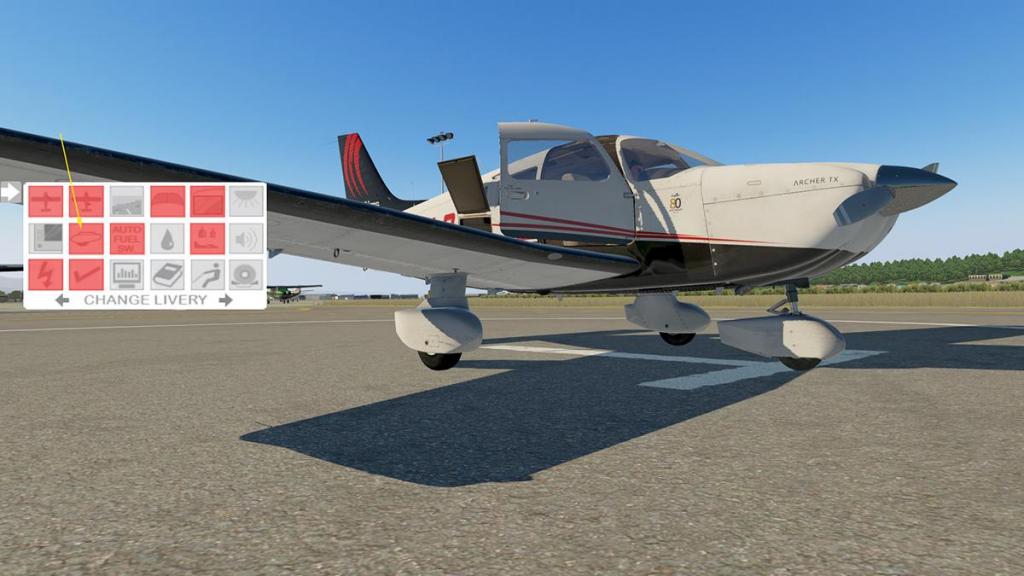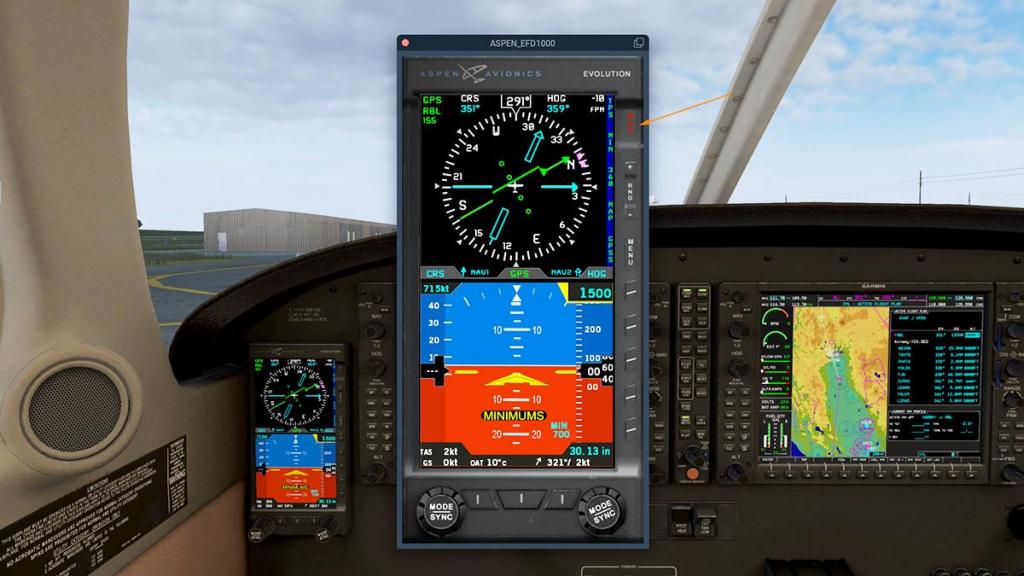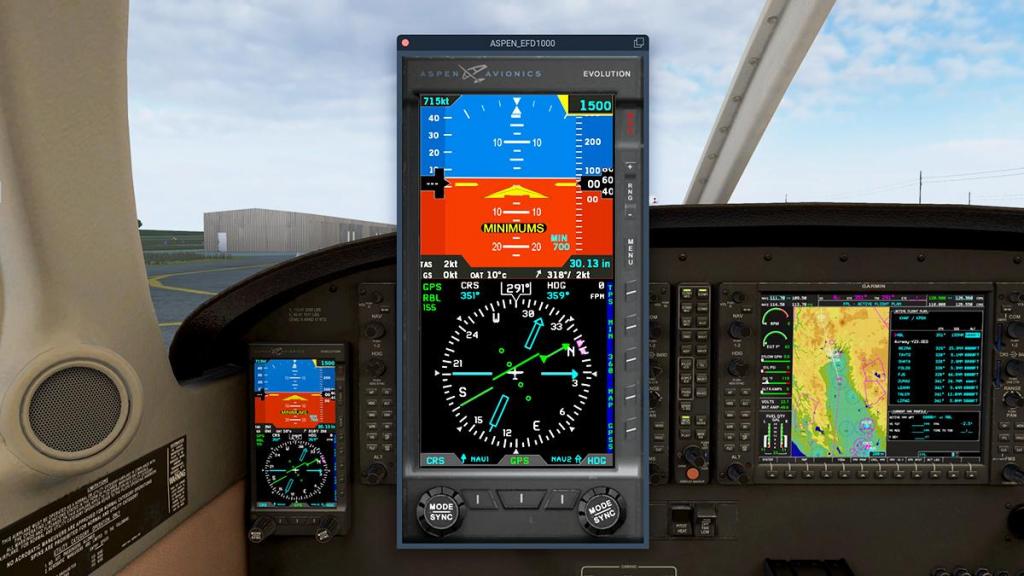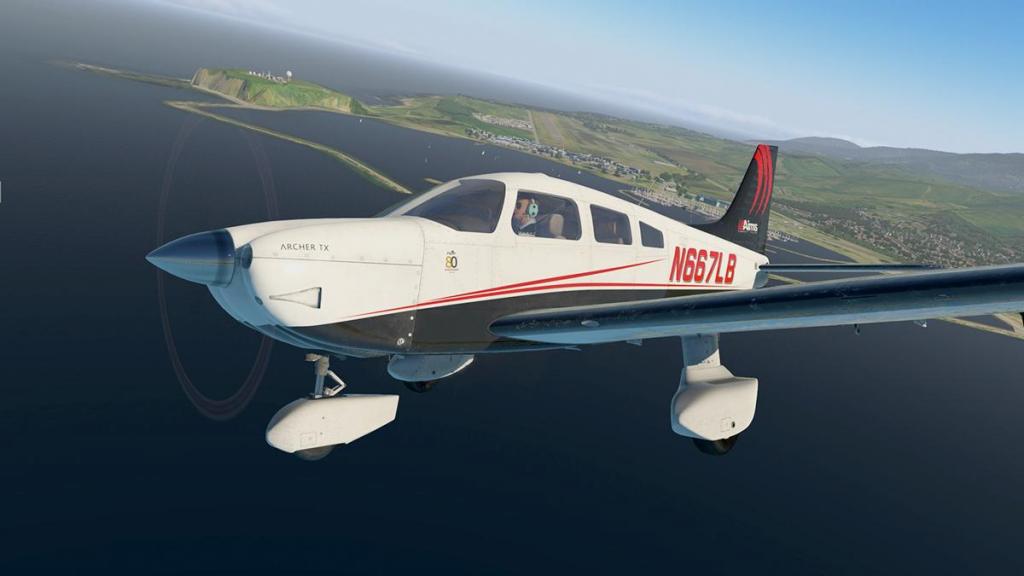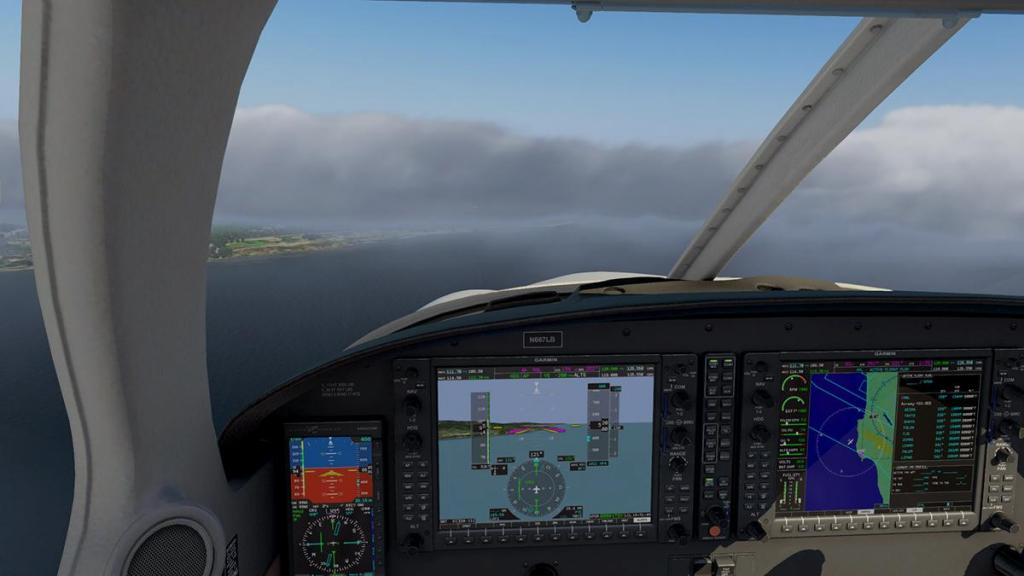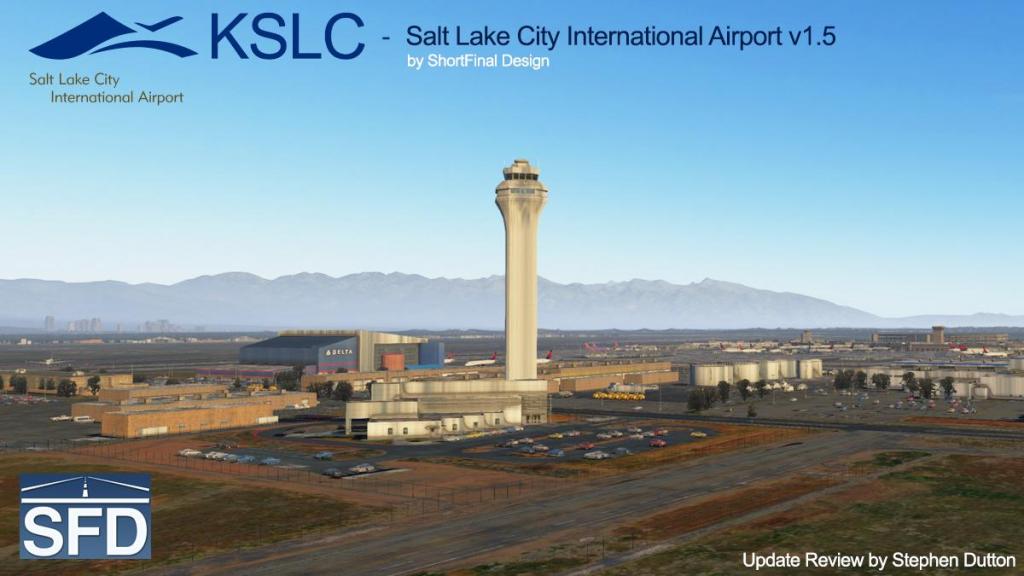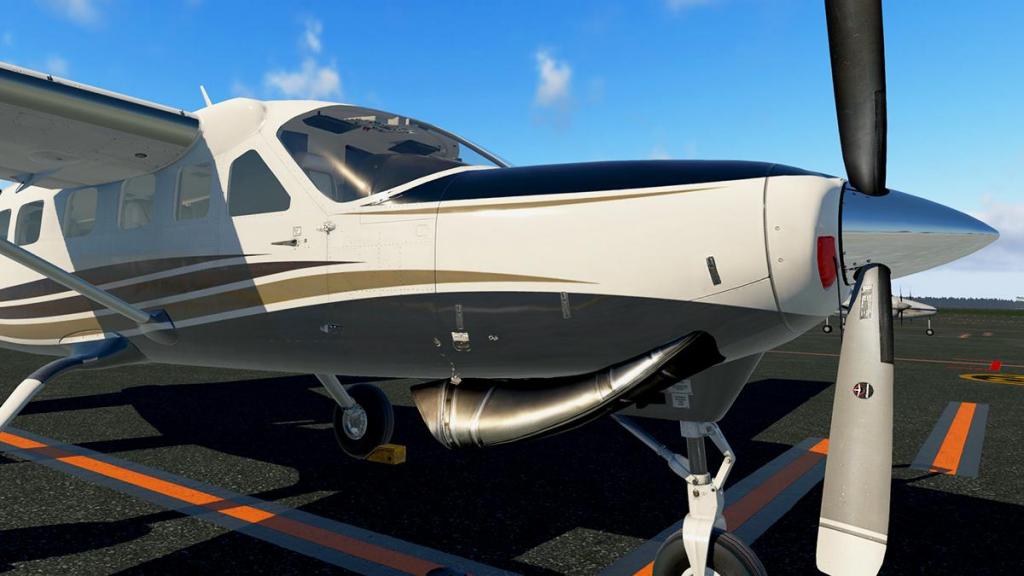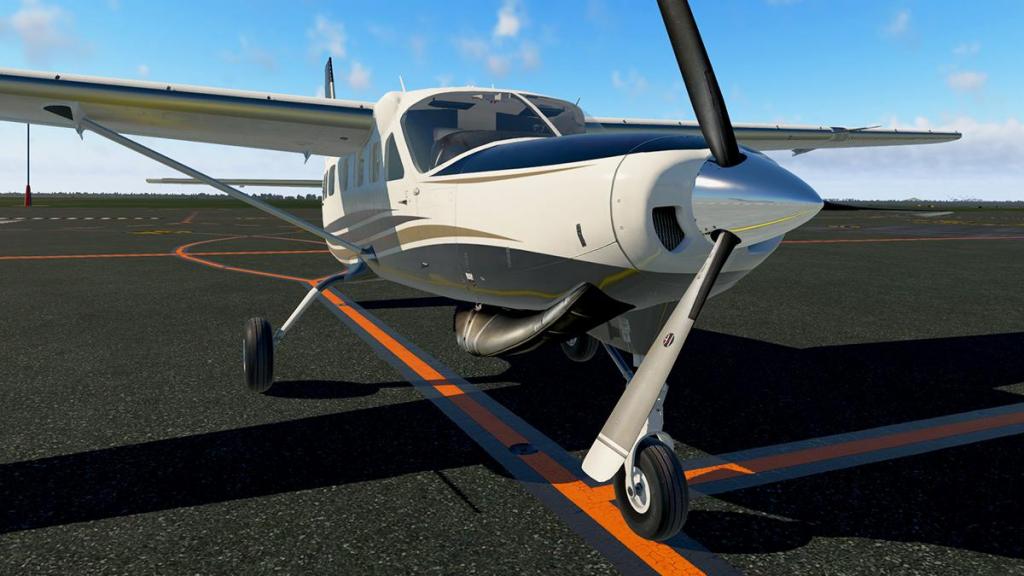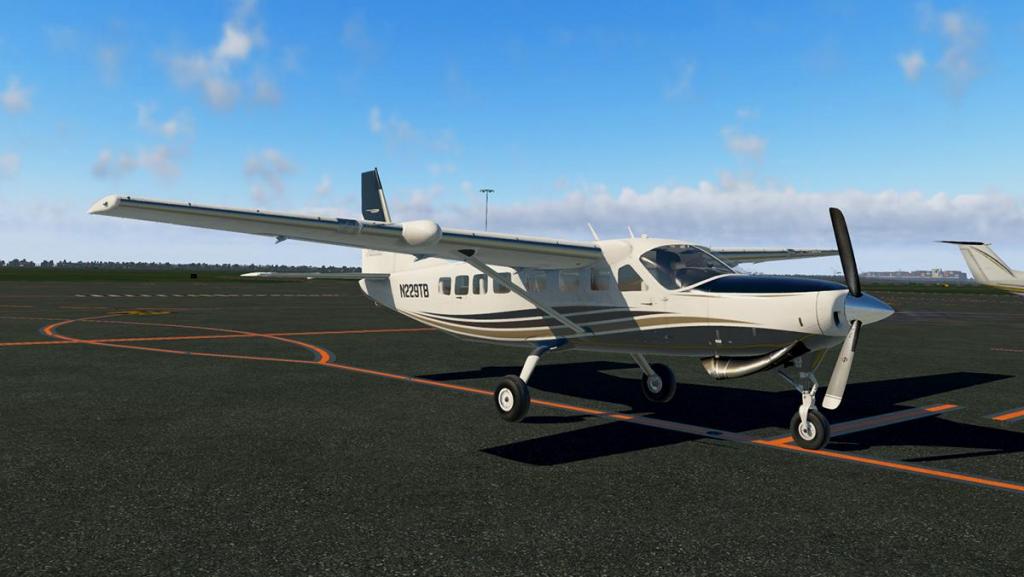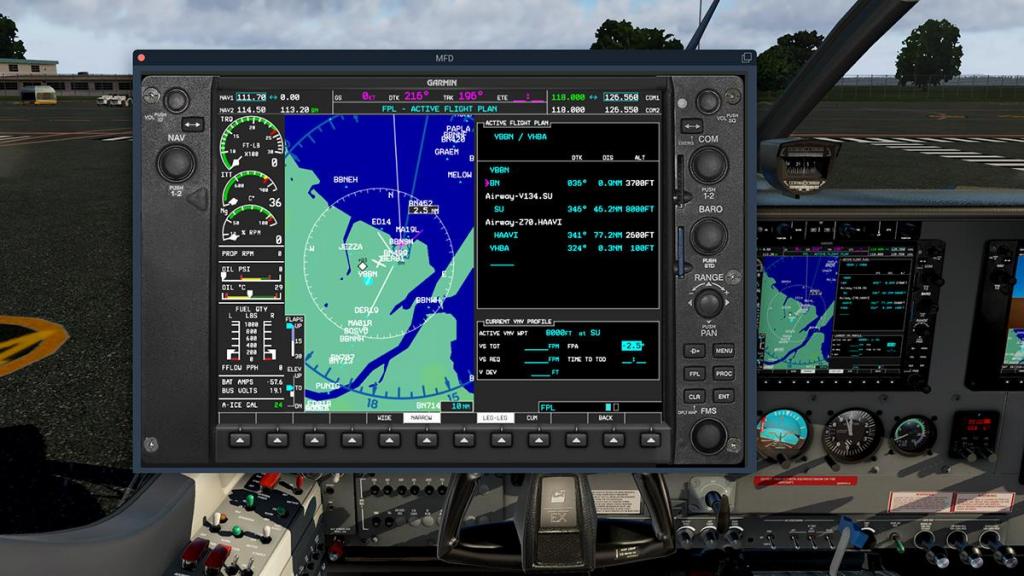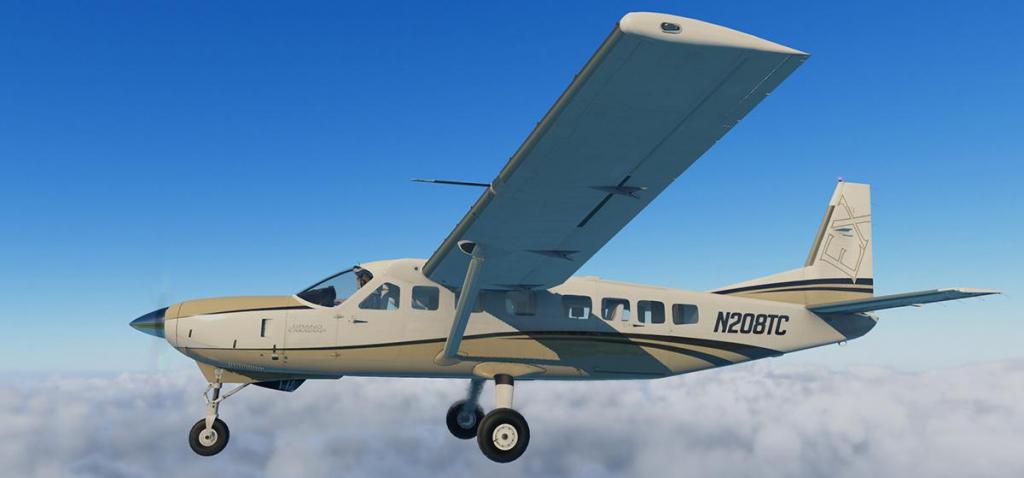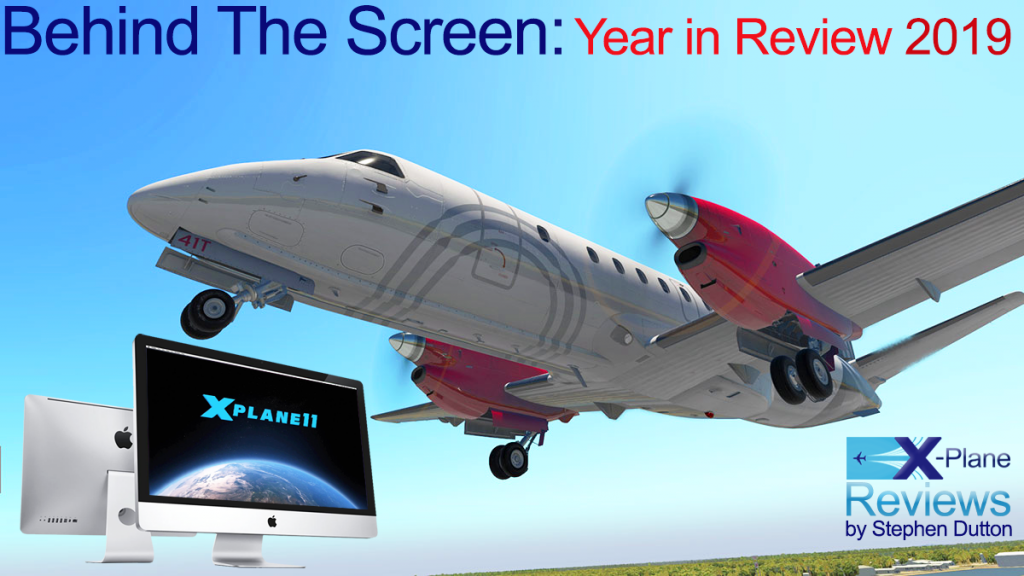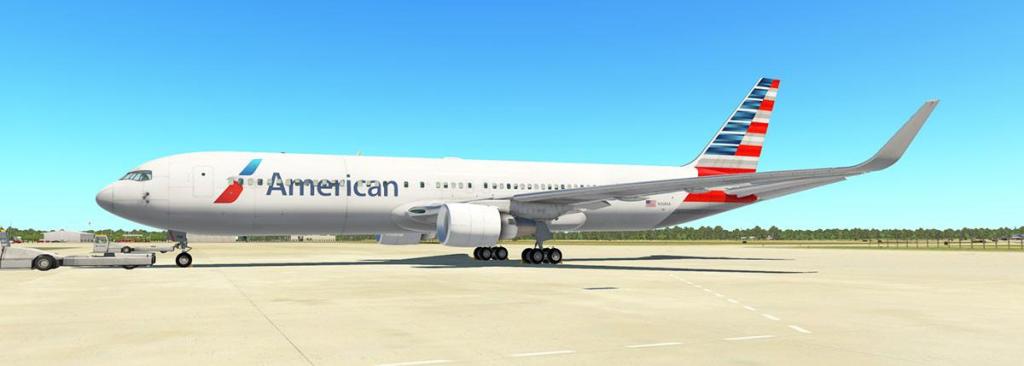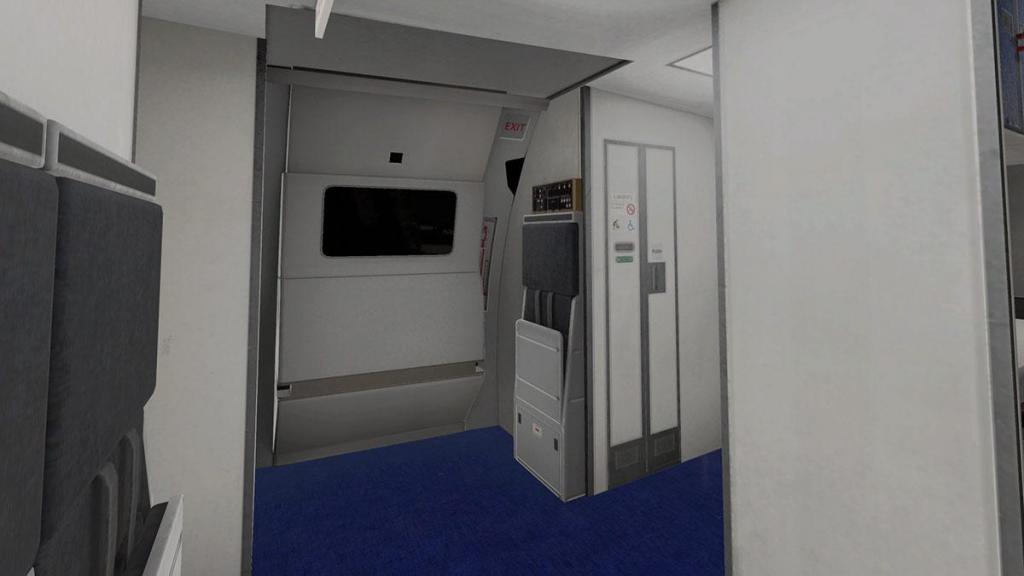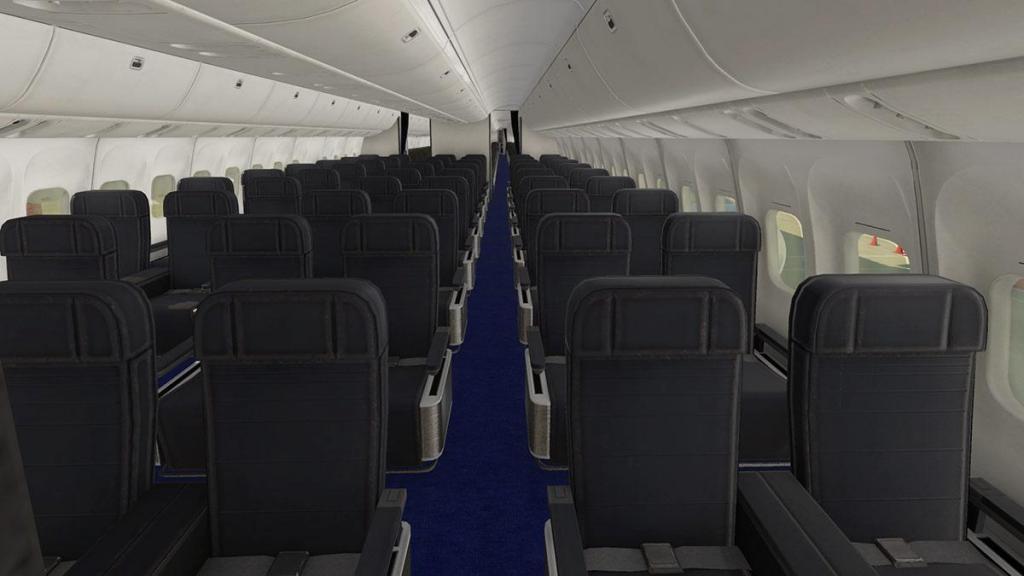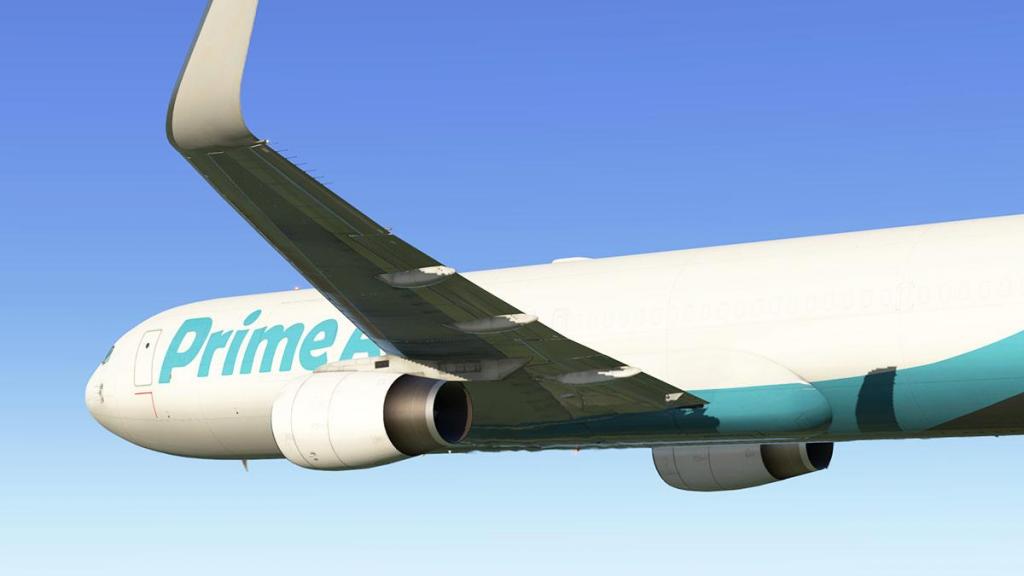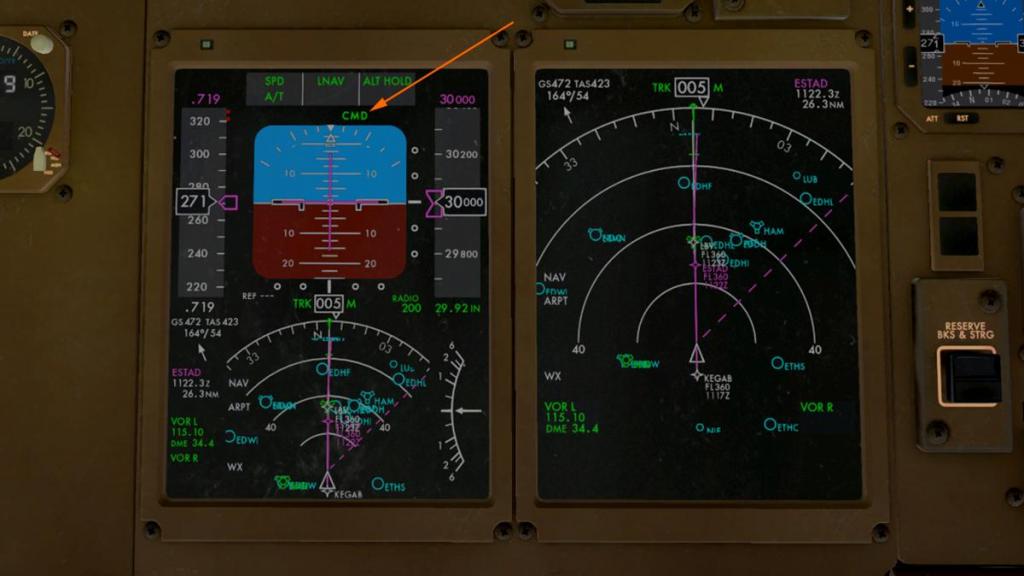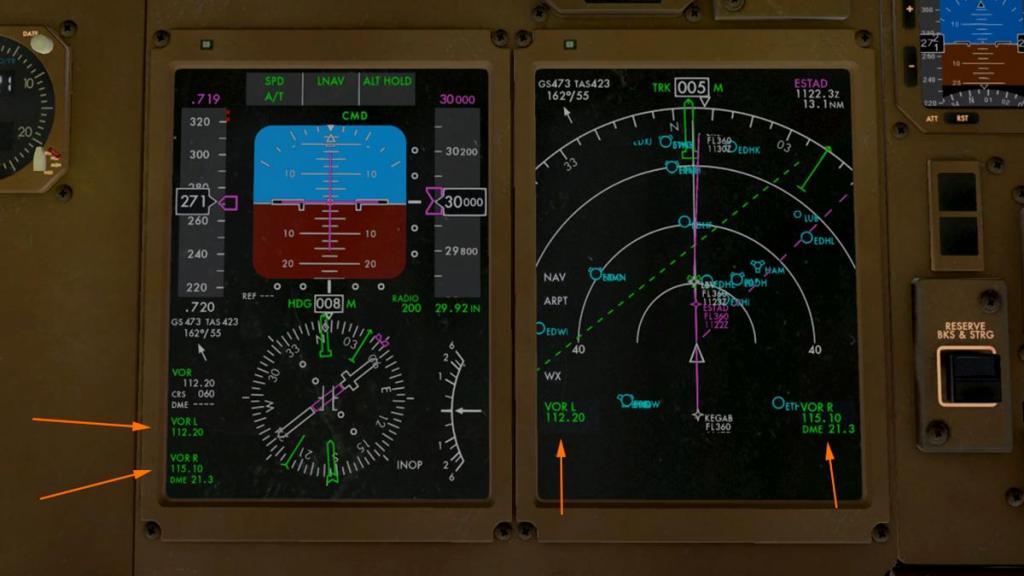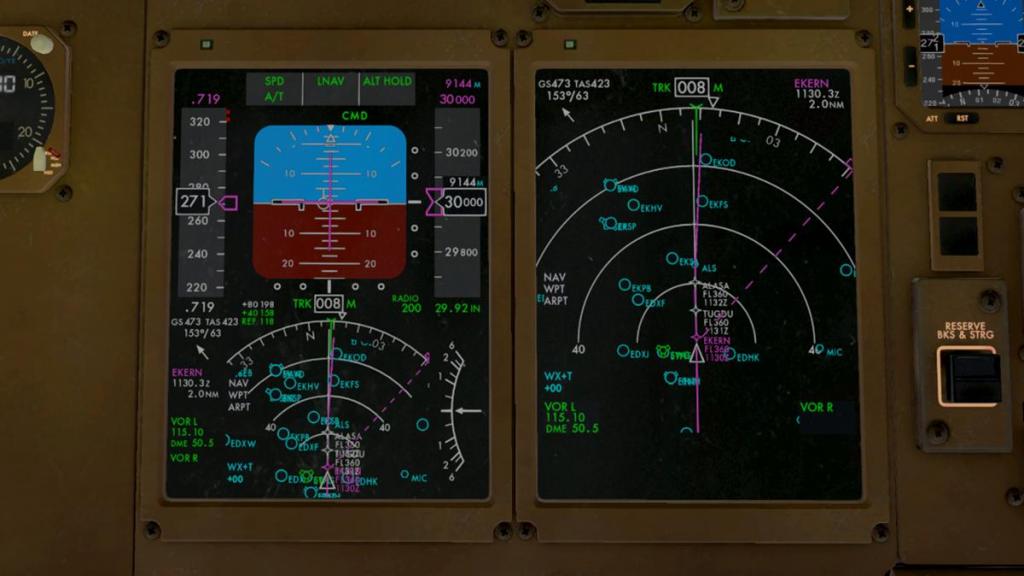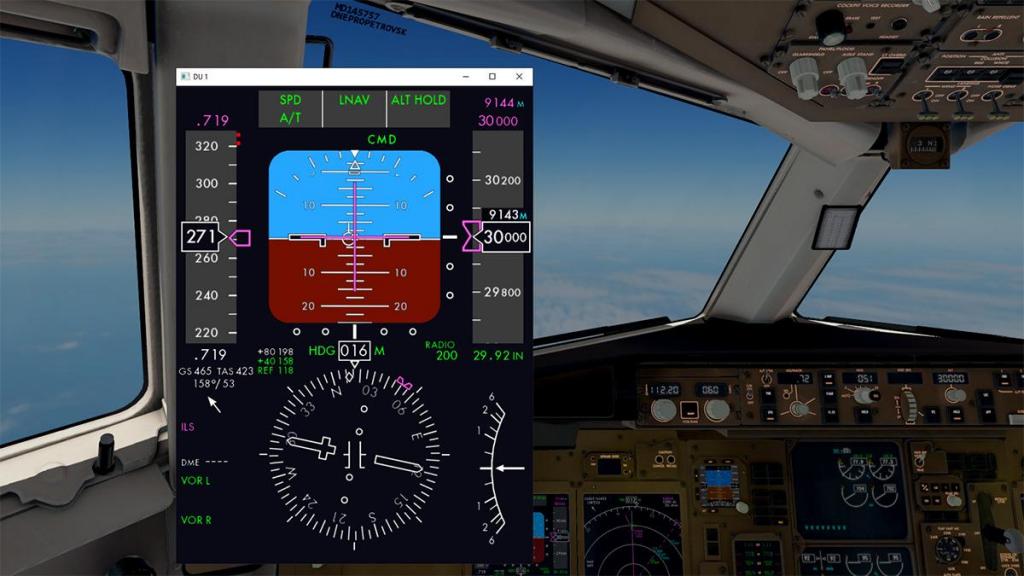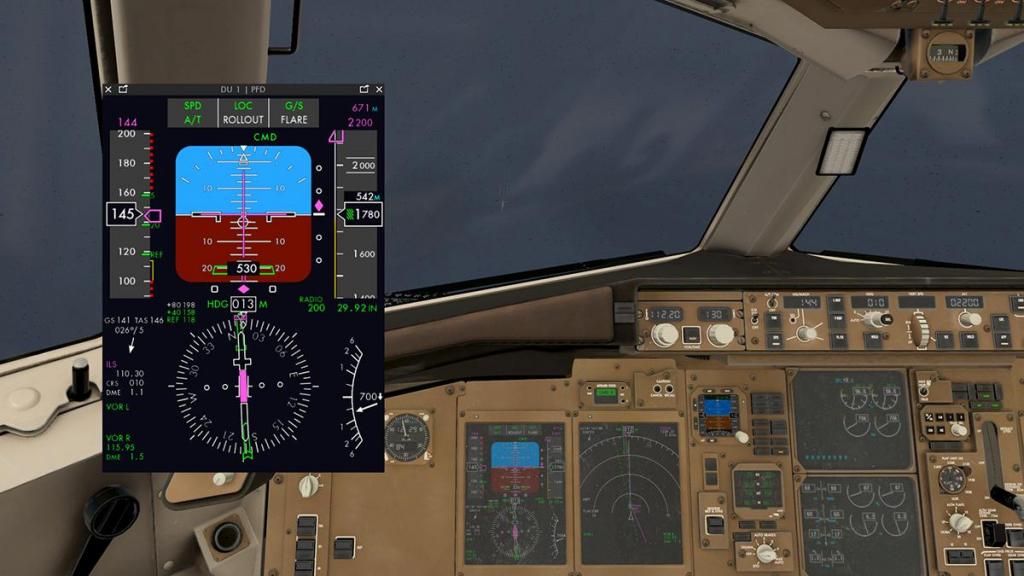-
Posts
2739 -
Joined
-
Last visited
-
Days Won
358
Content Type
Profiles
Forums
Articles
Everything posted by Stephen
-
Aircraft Review : Boeing 747-8 Inter v2 Anniversary Edition by Supercritical Simulations Group There was a discussion early in 2019 that listed all the aircraft that you could fly long haul in X-Plane11. When you added it all up the list was not great, in fact for a leading simulator you could even call it deplorable and that was with just cause. It is not that X-Plane doesn't have long haul heavy aircraft as we do, but the fact is that there are very a few available as the FlightFactor's Boeing 777 series is now very out of date, Peter's Airbus A380 is even older and not what you would call study grade, The FlightFactor A350 is not in the game either with a non-realistic FMC (but that is promised with a fix soon), and you can't count the Magknight B789 Dreamliner in this grade either (but it is getting better with each update)... so just what is left, well the old Boeing 747's and Laminar's default B747-800 and the Supercritical Simulations Group Boeing 748i International. Even when the SSG B748 project was announced and released six years ago I had my doubts, The last installment of the Boeing 747 legacy has not had a good reception into service and has not created many sales, as four engined aircraft are just too inefficient against the current highly evolved large twins. But although the numbers are against such aircraft as the A380 and the B748, we still need their huge carrying capacity. So why did SSG go for the B748 and not the Boeing 747-400 which would have been simulator wise a much more profitable project, we will never know that answer except for the premonition six years ago at the B748 may have been the replacement success the airlines needed, but mostly it was just there and created to try and counter the A380 sales market. Problem was the SSG B748 version took a long time to sort out, but the last "Legacy" v1.9.2 version finally got there as it was a quite nice simulation. However there was also the announcement of the coming a totally new v2 of the Boeing 747-800 series from SSG. The release of the v2 was around early November 2019, but the release was a disaster, one look at the aircraft and it felt very under developed and didn't deliver or was even close to the step upgrade that everyone expected... I liked the systems and the detail, but a lot of the aircraft felt very underdeveloped. The reactions were swift, or was it just the usual case of not refining before releasing or just releasing an aircraft too soon, maybe, but released in early January 2020 is this updated version two v2.1.1, but what I would call the real release version of the SSG B748 aircraft. So there is a lot now riding on this release and there was only really one way to find out the true depth of the aircraft and that is to fly it in it's designated environment and on a long, long haul or Flight no. LH779 from WSSS - Singapore to EDDF - Frankfurt. We are currently at FL340 (34,000ft) at .m84 and just off the coast of India at BUBKO waypoint, with a tik-tok number of 4294 nm to go to FRA. SSG promised with the v2 a completely new design, but on the first look last year it didn't exactly stand out and blew you away. But that has now been rectified in this update, my guess it was the Physically Based Rendering materials were not quite adjusted right and didn't give off the quality sheen SSG were looking for, but that new fuselage and it's extreme detailing now looks sensational and highly detailed. The huge General Electric GEnx--2B67B engines rated at 66,500 lbf (296 kN) are also new and look excellent. You only have to look at the earlier GEnx version to notice the vast differences. Wings are beautifully proportioned, modern and again all new, wing flex is also redone and is highly realistic. So the high quality detailing is everywhere and this SSG is now certainly the best B747 modeled version we have ever had externally in X-Plane. So the design has moved a considerable way forward. This is brilliant of course but it all comes with a heavy cost in your frameweight. The original B748 version was quite if very heavy on your processors, this v2 version is damn right bloody heavy on your framerate, so you will have to make compromises. I am running here a very basic version of X-Plane, this version has very few plugins, and absolutely no additional extras or changes, the only addition to the basic X-Plane download is my usual Custom Scenery Folder and Global Scenery folder, so the framerate is off the wall. Biggest hit is to the graphics, I had the "Texture Quality" set to "Maximum" but the overload when the SSG B748 when loaded was to high at 9246 mb and over my 8K card limit, so I had to accept the "High" setting for the flight to reduce my TQ down to 5944 mb, which is still high in this setup condition, then add in any heavy scenery and you can see the problem. So there is a cost here for all that higher quality and detail. SSG promised also an internal 3d cabin, and that is what you get, but only on the upper deck and not the main deck, and that didn't make the punters happy at all... The upper class hump is nicely done, and it isn't actually a big area and very Concorde like in size (yes I have flown up there), detail is good without being outstanding and feels modeled and no textures, but I do like the curve and the details of the inter-deck stairs, all the lower deck areas are only contained around the doors. Most of the venom of the first v2 release was targeted at the cockpit. I myself thought it also wasn't particularly different from the original, although it has been completely redesigned from scratch... IT IS better, and actually really well done, but in certain lighting conditions the panel and the cockpit can still feel dull, but in the right lighting conditions you can see the textures and semi-gloss of the panels... and very nice they are too... ... so the textures and shine are correct (just a touch more shine would help though) as the detail is quite brilliant, so what is wrong? The clue might be in the Yokes... they feel bland and dull, and mainly because of the detail is in the same colours as the yokes themselves, springs are brown, switches are brown, plates are brown, so it all forms into one big browness. More colour, detail, slight wear here and even a false clipped on nav-chart/flap speeds would break up the modeling blandness... ... anti-reflective instrument displays may be real, but some shine and depth on the glass would breakup that all the same semi-matt feel in the cockpit (aka FlightFacor B757/B767)... so overall it is really good, but these finer details let the visual realism down, but don't get me wrong, this updated v2.1.1 version has already been better refined and it certainly is far, far better than the Nov release, but it still needs that extra ummph to get this cockpit feel finally across the line like we detailed with the yokes. But you are not short of detail, this is a fully operational Boeing 747 as every switch and every button works, it is impressive, and confusing on how much you have to know to operate this aircraft at the same time... Let us go back now to two hours ago at Singapore Changi T2 Gate E8 Part of the promise with the new cabin was also opening external doors, yes the earlier v1 B748i had opening doors but with only one or flip open everything, which wasn't very authentic. Here now you have full door control via a Menu page on the long-winded named Integrated Standby Flight Display (ISFD), and very good it is. Any open doors are also shown on the centre lower Multifunction Display (MFD)... The door internal detail is very good, the cargo door mechanism as a focus is excellent in detail. My only surprise is of the still not available GPU (Ground Power Unit) which a big missing item for me that can also be selected via the GND SERV menu. There is a pushback feature as well, but I use BetterPushBack. Other ISFD Tablet menu items include Fueling and Payload... The Fueling page is excellent and I really like the quick and efficient selection of 100, 10, 1 input system which is very quick and easy.. there is an "SET PREDICTION" option that will set the fuel to the passenger load and weight, but I use SimBrief for a more accurate route fuel number. SSG note the fuel loads in the tanks at a quicker fast speed, but it feels too quick at this flow rate and doesn't feel realistic, maybe a more lengthy realistic loading time for the realists, but also a quick refuel option for the impatient. Payload information is a very similar set up and again excellent for weight input and final load and aircraft weight, 25%,50%,75% and 80% loadings are one button push easy, again inputs on both are quick and efficient. Sound can be adjusted by a sound board, with complete options of High/Low Isolation and Quiet engines, reset to default is also available... Sounds themselves are of a very high grade from Turbine Sound Studios (TSS). Options include Show/Hides of Yokes and Rain Effects (Librain) and there is a Kg/Lbs selection, and time to align for the gyros in Real or Fast selections. A checklist reset is also available on the tablet. So it is a very good if simple (to the good) Menu, but the interface design is a bit average to the high quality of the aircraft, the left interface panel looks all a bit rushed and Windows 95 in that aspect. FMC is very good by FJCC (Javier Cortés) and has a huge depth of detail. First on this v2 is that both the Pilot and First Officers CDU's are now both independent of each other, and both have pop-out's on windows F8 (Pilot) and Alt F8 (FO). You can input directly by pressing the KEYS selection, but note it does freeze the background for movement. I also found the pop-ups would also input the wrong key selection, with sometimes some very disastrous results like when inputting the FLIGHT No. it instead went into the DEST slot (and ruined the flightplan) and the COST INDEX went into the FL/LEVEL slot, so for these odd keys I used the facia direct version which is fine. Overall the FMC depth as noted here is very good, with great detail. You do get a few helpers on the PERF INIT page but otherwise it is all input, and the manual "FCOM" guide is very good as a teacher, but note to load the passengers and cargo and fill the tanks before setting up the FMC PERF pages. There are however still a few Cortés quirks to work around though if you have to edit a route. The FMC can mix itself up and not add in or takeway waypoints with perfection, and this issue only resets itself when you do the completed edit, so that can make it frustrating. If you are used to Javier Cortés FMC's you know how to route edit around the issues, but it would be hard for a novice on these study grade FMC's. There was another issue with the long route FMC flight plans returning an FULL error. As this is a very long haul I went over the 20 assigned pages and hit the issue, It was supposed to have been addressed in an earlier update, but it still blocked me and that is not good for an aircraft on primary long haul flying. My only choice was to reedit the flight plan to takeout multiple AIRWAY waypoints and make them DIRECT to get under the 20 page limit. Added features to the FMC now also include Route 2 functionality and the Diversion function. TERR function on the PFD (Primary Flight Display) is excellent and both PFD's are independently adjustable... ... over the six years of development the systems have had a lot of attention, the depth is is very deep and the warning system is a highlight of what is going on in detail. Fuel system with different pumps and tanks along with FUEL TANK/ENG logic is excellent, but remember the B747 is still a part manual aircraft, so in flight pump buttons and overrides have to be used. Air conditioning systems and logic is also highly evolved as is the electrical systems and on this v2 the IRS alignment process is now also available to use. The excellent FCOM manual covers all aspects of the systems and your interaction with them, and it is quite a lengthy read, but worthwhile to understand the full extent of system detail you have in the aircraft. Departure from SIN was excellent, Pushback was via BetterPushBack and note the APU exhaust effects from the tail. Engine startup is semi-automatic, with no separate bleeds shutoff like the older series B747's, Taxi feel is great, but watch your huge size. Once clear of WSSS 20R, it was a full loop around (AROSO 2A) to connect to SID REDUK route departure. One note was that the B748i at this 397,400 kg Gross weight and a route distance of 5707 nm it took a lot of skill to get the aircraft to it's first set FL340 (34,000ft) level, the aircraft needs careful timing of the Vertical Speed (V/S) and forward speed to climb up and abet slowly and it took a fair amount of time to do so, this is not a B738 is this modern Jumbo, but the feel and thought required took me back to the old days of fly cargo around the world in the old 747-200 Cargo series, and that aircraft was a serious challenge at max weight and a half to get the aircraft just off the runway, so that Boeing 747 heavy, heavy feel is perfect here. Once past India and into Pakistan the terminator line is getting more and more closer, we are at .m87 and FL380 (38,000ft) after burning off the takeoff weight of fuel, so we are now very fast and high... and night flying is here. Being comfortable at night is a big deal in long haul flying, because you spend a lot of time going from over many one time zones to the other. The lighting is very good but not perfect in the cockpit, I remember it being better on the v1. It all works but the details are not right. The STORM/DOME doesn't feel right and the two MAP lights on each side adjust, but the actual lights above you don't shine... and the rear cockpit light doesn't work either, so it all feels like a not finished WIP. Important though is that I did find that perfect lighting solution (above right) that keeps the cockpit lighting low and a panel to match, for landing the instrument/cockpit lighting setting here was perfect. The Upper class cabin's lighting is however not great... ... it looks like what it probably is, non-textured modeling and it doesn't look good at all, this is not a place to spend hours flying over half the world, externally it is worse again? The double-decker lighting is far too bright, and the main deck lighting of which I suppose is to match the brighter upper deck, but it all feel's like it is ten simulation years out of date... crossing the heavens at night the B748 looks more like a cruise ship than an aircraft? Tail logo lighting however is very good. Flying is impressive in the drivers seat and here are few notes. When the fuel tanks get low they pump up more fuel up from the reserve tanks, if switched off the system asks for the OVERD switches to be turned on, and when pumping you get these fuel flow direction arrows pumping away, seriously impressive... I always was also impressed by the bank adjustment from the switch to the route guide on the MAP/NAV display, adjust your bank and the line computes the new trajectory to match, it is all very good... .... MAP/NAV information can be data overload, but it is impressive here and certainly as good as any FlightFactor system, POS shows the nearest VOR, and DATA shows waypoint info. On approach to Frankfurt the V/S altitude target is a must have tool and here it is very good, Messages like this FMC VFL APPROACH mode are also very authentic... ... OVRD pump warnings are not what you want on finals, but they are noting the low fuel in the reserve tanks. External aircraft lighting is very good, the red strobes flash nicely off the engines and so do the strobes on the outer pods, wing lighting is also very good as is all the main landing lights... Finals and we coming in for a perfect controlled landing at Frankfurt FRA 07C, but on the ground I am not too sure about the forward central FG taxi light as it is very weak, but the side runway turn off lights are fine. THIS B748i is a VERY BIG aircraft to taxi around busy airports,and it is a tight fit to get all that the heft into the A23 Gate, so you have to judge and steer well to manoeuvre the aircraft correctly and then align it into position, and now back under apron lighting this Boeing really shines. Liveries There are currently six liveries in very high quality detail: SSG House, Air China, Air Force One, Boeing House, Korean Air and Lufthansa _________________________________ Summary In a review you can only show images and not every detail of a complete flight, but what really is the biggest consideration from simulation. It is to deliver that perfect gate to gate flight, and that is what you aim for, work for and determinedly keep wanting in every aspect of flying in a simulator, flying long haul is the hardest of all, but it is also the most rewarding... as more can go wrong or something can also easily ruin a great flight. But to achieve that ultimate simulated goal is not easy, as your computer has to be powerful enough (certainly in this case), and the simulator has to behave itself and the biggest factor of all is that the aircraft you are flying also works well, no bugs, no crashes, no bad programing and when you think how horribly complex this Boeing 748i is then and in that everything works perfectly then what is presented to you is some sort of god given miracle. The original v1 of SSG's B748i has had six years of development, the Legacy version showed all that refinement and the possibility of what the v2 could deliver. On release it stumbled, but I knew at the time how good the systems were in this aircraft, but this updated version now certainly fulfills out that earlier promise. The SSG v2 B748i is not perfect as I have pointed out in this review, mostly the missing main deck, the lighting and a lot of texture detail, but in every other respect this is a very proficient aircraft, the B748i flew nine hours perfectly from Gate to Gate and delivered an astounding simulation, Study grade, yes absolutely in that class as the systems have a huge depth. It also challenged my skills to deliver the aircraft to altitude but it also followed the SimBrief numbers perfectly, and right down to the perfect performance numbers (okay I used an extra 1kg of fuel for the long taxi and that heavy climb) but the numbers don't lie, the SSG Boeing 747-8 Inter now certainly delivers and currently it is the best long haul aircraft in the X-Plane simulator, that is now tested and proved within this review and with the B748 Freighter version coming very soon then that will be my long haul simulations wrapped up for a fair while ______________________________________ Yes! the Boeing 747-8 Inter v2 Anniversary Edition By Supercritical Simulations Group is available from the X-Plane.Org Store here : Boeing 747- Inter Anniversary Edition Price is US$65.00 Features: Officially licensed by the Boeing Corporation. The entire external 3D model for v2 has been redone, including the following: All new fuselage closely modeled on the real one with added details Each door can be opened individually and is more detailed dded animations and details (almost all parts that can open/move on the aircraft are modeled). New external details such as a satellite antenna and tail camera New cut passenger windows instead of textures New vertical and horizontal stabilizers with added details New nacelles and engines with more details and new animations Reworked and more detailed landing gear/gear doors with additional animation Improved and more detailed leading and trailing edge flaps and added flap mechanisms Upper deck interior with seats/galleys and stairs to lower deck New wing flex and nacelle animations The textures for the entire aircraft have been redone to match the new model, along with decals for certain detailed areas, right down to most of the external placards, working closely with our technical advisors to ensure all the main details are present and that we have gotten them right. COCKPIT The entire cockpit 3D model has been largely redone and completely retextured. New overhead panel and buttons/switches New forward panel and buttons/switches New pedestal and buttons/switches/handles New miscellaneous panel and buttons/switches Side panels and window frames completely redone New cockpit seats Various added details SYSTEMS/FMC Almost all switches function properly and independently IRS alignment process implemented More realistic fuel system with different pumps and tanks along with FUEL TANK / ENG logic Realistic AUTOSTART and RUNNING indicators on secondary engine displays Improved and more realistic air conditioning system and logic Better track representation on ND Clock and chronometer on ND working like on the real aircraft More realistic baro pressure logic (STD, preselected, transition altitude) Captain and First Officer FMCs are now independent FMC FIX page added FMC Route 2 function added FMC Diversion function added Librain rain effects (currently not working on Macs) Skuncraft Updater Now with Skunkcraft updater. No need to download anything for updates, the plane will automatically be updated Requirements: X-Plane 11 Windows , Mac or Linux 4GB MB VRAM Minimum - 8GB+ VRAM Recommended Current and Review Version : 2.1.1 - (January 22nd 2020) Owners of the 747 v1 will see a discounted price once logged in into their account. No Coupon required. NOTE: Framerate requires a decent graphic card, minimum of 8gb is RECOMMENDED, so I would also recommend a power machine as standard. Installation : Download is 1.13gb which is unzipped and is inserted in your Heavy Aircraft folder as: 1.40gb Key authorisation is required. Note: Curently the WebFMC Pro is not working with the new dual FMC units, a fix is beening done and will be published soon. Documentation : includes SSG 747-8 V2.1_Change Log.txt SSGCUSTOMLIST.TXT SSG License Agreement.txt librain license.txt SSG 747-8 V2.1 Quick Start Guide.pdf SSG 747-8 V2.1 FCOM.pdf ______________________________________________________________________ Aircraft Review by Stephen Dutton 30th January 2020 Copyright©2020: X-Plane Reviews (Disclaimer. All images and text in this review are the work and property of X-PlaneReviews, no sharing or copy of the content is allowed without consent from the author as per copyright conditions) Review System Specifications: Computer System: Windows - Intel Core i7 6700K CPU 4.00GHz / 64bit - 16 Gb single 1067 Mhz DDR4 2133 - ASUS GeForce GTX 1080 8Gb - Samsung Evo 512gb SSD Software: - Windows 10 - X-Plane 11.20 Addons: Saitek x56 Rhino Pro system Joystick and Throttle : Sound - Bose Soundlink Mini Plugins: Environment Engine by xEnviro v1.07 US$69.90 : Traffic GLobal Plugin - US$52.99 : BetterPushBack - Free Scenery or Aircraft - EDDF - Airport Frankfurt XP11 by Aerosoft (X-Plane.OrgStore) - US$32.99 - WSSS - Singapore Changi 2.12 by TOD (X-Plane.Org) - Free
-
Quick Impression : KTLH - Tallahassee International Airport by Rim&Co A bit of history first. Rim&Co came screaming on to the X-Plane scene a few years ago with AYE - Ayres Rock - Connellan Airport that was a very good scenery debut, with an excellent rendition of Ayres Rock (Uluru) and the nearby Olgas (Kata Tjuṯa) and the actual scenery of YAYE was also very well executed. But the scenery suffered with an overload of objects (in outback Australia?) that was a foreboding of what was to come next, but overall for AYE it was an excellent scenery. Rim&Co's next scenery releases was SAWH - Ushuaia Malvinas Airport, but that release was followed by a quick "cease and desist" notice to a developer as they had stolen pro objects and doctored them to their own use, in the aftermath the two earlier sceneries were then also quickly pulled from sale from stores. So Rim&Co are back and with two sceneries in succession in first KPIT - Pittsburgh International Airport and now this secondary release of KTLH - Tallahassee International Airport (I will get around to reviewing Pittsburgh). So the question remains, have Rim&Co done enough here at Tallahassee to win back our support and more importantly our trust. Tallahassee International Airport IATA: TLH - ICAO: KTLH - FAA LID: TLH 09/27 - 8,000ft (2,438m) - Asphalt 18/36 - 7,000ft (2,134m) - Asphalt Elevation AMSL - 81 ft / 25 m Tallahassee is dead central X-Plane.Org territory, it is the central base for all your X-Plane needs, so in your needs if you want to go there virtually then a good scenery on arrival would make the ride worthwhile. On first viewing the scenery looks actually top grade, it is well intergrated into the surrounding mesh with lovely field Orthophoto textures, but the nasty joins are thankfully covered by the trees and the tree line is still of a slightly different colour, but overall it is nothing to see or worry about. TLH layout covers 2,485 acres (1,006 ha) and is L shaped or corner shaped which ever way you want to look at it, with the shorter 18/36 runway positioned north and the 09/27 runway eastwest. Although the airport is noted as an International airport, it really isn't but only a regional facility. The International moniker is because the the city is Florida's state capital, however, international passengers are allowed to exit the airport via Tallahassee International due to the facility's "service port" for the use of U.S. Customs. Runway 09 (27) is being lengthened and the construction is well highlighted in the scenery... note the seven wind turbines on the right Terminal The current terminal was opened on December 3, 1989, but the buildings looks far older and tired, an upgrade at TLH is currently in progress. Overall the terminal is not very large in size, but has eight active airbidges. The airbridges are all SAM powered and the open/remote stands have (SAM) VDGS or marsallers. Terminal design is very Rim&Co in a design so you feel more than what you see, but the detail is very, very good and this is very well designed and produced scenery. Landside is excellent with well cluttered carparks, trees and fauna and very good signage, only kink is the entrance airport logos are reversed. Apron clutter is excellent, but not local branded, and a few of the vans are animated to give movement to the airport and one van takes a trip all around the taxiways... and it travels around very, very slowly, so watch out for it? Rim&Co have always done in the past some questionable object placement and they don't disappoint here? Two vans block the taxi route to stands A7 and A4, but one is animated, a Gulfstream jet is also positioned at gate B2, but it doesn't look right standing in that set non-stand position. Ground Textures The runway and ground textures are excellent here at TLH. Runway detail and textures are nicely varied and the concrete detail on the taxiways are also very good as well with really nice transitions to old and newer asphalt which is done really well... .... grass is all 3d and bountiful, and all textures are PBR (Pyhsically Based Rendering) active (reflections, wet) in the right weather conditions Tallahassee City are wanting to expand the cargo facilities at TLH, and they are quite good for a regional airport already. The Cargo ramp is well done and quite large with four parking stands. FedEx cargo building is nicely done. There is significant amount of General Aviation, Private jet parking and services available at KTLH, and they are segregated into three areas in South, Central and North. South Apron could be noted as the original partition section of Tallahassee Airport... ... The Million Air FBO terminal, Aviation Centre and the William B. Martin Hangars are all based here (the William B. Martin is not to be confused with the Ivan Munroe Terminal that is the official Tallahassee terminal name). Central Apron is dominated by one large hangar for "Flightline Group Inc" North Apron covers the more local GA area, with open and covered parking, and wide open and numerous apron parking areas. There is a huge amount of clutter and detail set out in here, and it certainly does a great job of filling out the scenery... but the question starts to rise up on how much of all these objects and buildings are actually authentic, and even then also relate to the actual Tallahassee Airport scenery? "Austin's Bar & Grill" doesn't exist (I checked), "OzGas" Fuel is based in Australian and New Zealand... there are NYFD fire trucks, NYP Police cars and enough 76 petroleum stations (four) and one entrance sign (below left) is used three times (twice with the signs reversed)?, oh and another BP service station as well... did I mention the hundreds of Range Rover sports, there are less of these high rollers in Los Angeles than at Tallahassee Airport?... it all starts to feel a bit questionable on the authenticity question? Across RWY 09/27 is the Control Tower, well done but the tower view is "sorta" set but the viewpoint is still set too high in the air? Lighting Lighting is in the "not bad" zone. Again outwardly TLH looks very good at night.. ... but a few airbridge gates in B1 and B4 are in complete darkness? The terminal is an odd selection of lit and areas of darkness... .... a lot of the terminal like the entrance and landside is dark with no lit windows, and the external lighting which is the only lighting covering over the dark sided buildings, which is a cheap and time way of cutting development, the areas that have been completed show great window lighting, so it all comes down to what could have been, more that what it actually is. South, Central and North apron lighting is not bad but there are some dark areas, and even some of the apron lighting facing is away from the actual apron areas? Overall in context of the whole scenery the lighting is not bad, but could have been far better. Feature list is very good, with a lot of dynamic X-Plane11 features provided. Buildings: Realistic rendition and 3D-recreation of most airport buildings, vehicles, clutter and other infrastructure, served with nice textures for day and night Ground: Detailed ground textures with dynamic PBR properties, 4K asphalt/ concrete textures Lighting: Accurate and vivid lighting for night-flying operations Vegetation: Thousands of hand-placed 3D-trees Accurate Airport Layout Gangways: SAM usage including jetways and safe-docks for most gates Traffic: Ground traffic files included WT3 and TG: There are no ground routes available for WorldTraffic3 but a generation did create the required routes, but with absolutely no traffic action. Traffic Global was far better in creating a realistic traffic feel at KTLH but even that was very infrequent (most arrival flights are after 11pm?), and the better TG traffic is what is shown here in this review. First Impressions On a first viewing then Tallahassee KTLH looks brilliant, and a great place to use as an excellent regional airport (KATL - Atlanta is only 260 mi north), the airport comes with a nice layout, intergration and excellent ground details. Modeling is very good but not exceptional and you get PBR effects and SAM active airbridges and stands. So from that viewpoint the scenery is highly worth of it's four stars. It is in the closer details and the question of authenticity is where you going to have to take some liberty, over clutter, non-related clutter, buildings and other items are all questionable if they are to be a replication of an original Tallahassee International Airport and the lighting is also a bit underdone, but accept these odd Rim&Co quirks and overall the scenery is very good. Four out of Five stars ☀️☀️☀️☀️⭐ KTLH - Tallahassee International Airport by Rim&Co is now available from the X-Plane.OrgStore here: KTLH - Tallahassee International Airport Price is US$15.99 Requirements are: Windows, Mac or Linux 4 GB VRAM Minimum - 8GB+ VRAM recommended Download Size: 1.1 GB Current and Impression version : 1.0 (January 25th 2020) ________________________________________ Quick Impression by Stephen Dutton 27th January 2020 Copyright©2012: X-Plane Reviews (Disclaimer. All images and text in this preview are the work and property of X-PlaneReviews, no sharing or copy of the content is allowed without consent from the author as per copyright conditions)
-
Quick Impression : EGCN - Doncaster/Sheffield by FlyX Simulations Think of Doncaster UK and you think of Jeremy Clarkson, not known outside of the UK, but inside our fair country he is close to a naughty national treasure. But they didn't name the local South Yorkshire airport after him, no they choose "Robin Hood" even though the infamous robber is associated with Nottingham 50 miles to the south, and even the airport's official name is now Doncaster/Sheffield Airport minus the Robin Hood. The airport itself is the old RAF Finningley of when it was used as a base for Cold War nuclear-armed Vulcan bombers until the military airport was decommissioned in 1995, and hence the very long 10,000ft runway 02/20. A former Nuclear bomber an Avro Vulcan XH558 (G-VLCN) The Spirit Of Great Britain is now based at the airport waiting for a museum to be created for the aircraft to go on permanent display. This EGCN scenery is created by a new developer in the name of FlyX, so without much further ado, let us look at EGCN-Doncaster. Doncaster Sheffield Airport IATA: DSA - ICAO: EGCN 02/20 - 2,893m (9,491ft) Asphalt Elevation AMSL 56 ft /17 m First impressions are very favorable, the airport looks good, with good intergration into the surrounding Yorkshire countryside, the texture joins are not perfect, but obviously the developer has tried very hard to make a scenery to fit in as best as it can be, and in that aspect they have been very successful. Terminal I am not a big fan of this sort of modeling style, it looks and is... well modeled, but not very real, real if you know what I mean.... .... but close up it is very good with great textures and design. The wavy metal roof is exceptional and very good, with Air-Con detailing well done in the roof's centre section. As is the external concrete wall panels, again great detail... if there is an issue it could be the glass, but the Doncaster/Sheffield logo looks more computer modeled than real and it is really blue and not white. There is internal detail as well and again that roof detail is excellent internally. Runway Textures Again initially the ground textures look shiny and smooth, but the detailed asphalt textures are in there and are very good, the concrete taxiway textures are also excellent as are all the textures on the large apron. Notably they are all PBR wet and reflective, so overall they are excellent. Clutter and detail Carpark detailing and clutter is excellent, with full carparks, associated fauna and lots of vehicle placement which is also very good.... .... airport service clutter is also very good with a holding yard and plenty of detail on the apron, branding is not local however but "Laminar". Airport signage is all mostly TUIfly Airline branded with a few WIZZ adverts, but it is well done. The Ramada Encore chain hotel is well represented as are all the required (mostly ex-military) administration and airport maintenance buildings. RAF Finningley Five massive Cold War hangars are all that is left of RAF Finningley, but there are all well represented here. No.3 Hangar is presently occupied by 2Excel Aviation providing design, production and maintenance services. Defence company BAE Systems was in No.3 Hangar at the airport that is now occupied by 2Excel, before they moved on to Humberside Airport. Other companies that operate within the hangars include Bespoke Training Systems Limited, a Cessna Citation service center, and Anglo European Express (Doncaster) Ltd (onsite regulated agents for air freight and cargo operations). The Cessna servicing is represented by some static Cessna aircraft, and a lone Piper Cub... but a modeled Vulcan would have been a nice addition to represent the XH558 The Spirit Of Great Britain. The old RAF control tower and radar are both positioned across the field. Radar is animated and looks great. 3D Grass is set out and fills in all over the scenery and fulfills its purpose with making the textures look realistic from the ground level. Lighting Lighting is okay-ish... layout and runway/taxiway lighting and apron lighting is very good.... .... but again that terminal building just doesn't look authentic in the dark, especially with the glass and looks completely see through. Considering how great it looks in the daylight, then the carparks all feel under done in the dark. Building lighting is average, and all the same colour and tone, and would the Cold War hangars have the same window lighting as a modern hotel... I don't think so. Feature list is very good, with a lot of dynamic X-Plane11 features provided. Ultra high-resolution PBR textures for all buildings and ground textures Highly detailed Terminal Interior Highly detailed, 3D Custom buildings Up to date apron layout 3D grass WT3 and TG: There are no ground routes available for WorldTraffic3, and a generation did create the routes, but with absolutely no traffic action. Traffic Global was far better in creating a realistic traffic feel at EGCN, and that is what is shown here in this review. First Impressions For a brand new developer to X-Plane then this rendition of EGCN - Doncaster is a brilliant debut and FlyX should be applauded for the work done here, because the detail, ground textures and clutter and the use of X-Plane's active features are really well done and it is available at a great value price, so EGCN should have been easily a four or even five star quality rating... But the use of a certain style of modeling, makes not only the terminal but many of the buildings not have any of that realism feel but just a model instead, the glass? maybe but it just doesn't feel as authentic as it should do and is the central piece to the scenery, and close up it does have really great detail, lighting is in the same category in being mostly all the same design. So everything is right here, but having that right look and realism feel where it counts visually makes it all a bit hit and miss, a bit like Jeremy Clarkson really Three out of Five stars ☀️☀️☀️⭐⭐ EGCN - Doncaster/Sheffield by FlyX is now available from the X-Plane.OrgStore here: EGCN - Doncaster Sheffield Price is US$17.99 Requirements are: X-Plane 11 Windows, Mac or Linux 4 GB VRAM Minimum - 8GB+ VRAM Recommended Download Size: 366 MB Current and Impression version : 1.0 (January 21st 2020) ________________________________________ Quick Impression by Stephen Dutton 24th January 2020 Copyright©2012: X-Plane Reviews (Disclaimer. All images and text in this preview are the work and property of X-PlaneReviews, no sharing or copy of the content is allowed without consent from the author as per copyright conditions)
-
Aircraft Update : Boeing 787-9 Aviator v1.4.1 by Magknight Magknight has updated the Boeing 787-9 Dreamliner to version v1.4.1 which is the version they displayed at the Cosford UK SimShow back in October 2019, but now this is the official public release of that update. Before we get into the new version then let us make a note. The X-PlaneReviews site comments were inundated with pleas around the Christmas-New Year period that the new (discord) version didn't work or didn't load correctly. 90% of these installation issues will go back mostly the Java programming language application. Now even myself installed the wrong recommended Java module that messed up a lot of other applications and most notably the X-Updater, so I had to throw that Java out again, so my point is that if I get it wrong then most of you out there can as well. Magknight does provide a Java-Installer that does the install correctly, it works so use it and the app selects and installs the correct Java version (J8 update 212 (64bit)) and everything now works as it should with no other application conflicts, problems fixed. The Cosford SimShow showed off the main feature coming in v1.4, which was a completely new redone and remodeled (and realistic) fuselage, although the nose still looks slightly funny? But don't get me wrong, this is a big step forward, with far more detail and finally real cabin windows... but there still a slight too clean look and not enough of the full realism effect in my book, but that aspect runs right through all of Magknight's work. A major point is to made is that ALL the original liveries with the new fuselage now don't work, you will now need to find all new liveries noted as 1.4+ to use on this updated version, that will certainly keep the painters happy for months. The new Paintkit is here: Paintkit 1.4.0 RV8 The GEnx 1B ("General Electric Next-generation") engines have also been totally remodeled and changed from the Trent 1000 and again they look far better, and mostly on those huge 111.1 in (282 cm) fan diameter blades, but the fan blades could be a bit more worn realistic and carbon detailed. But the exhaust outlets are well done. With the new fuselage comes also an internal cabin... .... it is however quite basic with just an all economy seating and that is with not much love or thought put into the seat design either. There are no first or Premium Economy sections and it makes the Dreamliner look very long and full inside, I'm not crazy about the rear seat graphic either, the logo is okay, but the on screen controls are noticeably too large. Thankfully the galleys are very good and come with enough food carts to feed the hungry... ... odd though is the big empty space mid-deck that you could hold a ballroom dancing competition in, as we know space is at a premium on any aircraft? The windows and surrounds are very good, not perfect, perfect... but better than I expected and some glass is tinted (dimmed) and some are clear. All eight doors now open, including the front cargo door, but I couldn't get the rear cargo door to operate?, never the less it is great to finally have opening doors on the aircraft and it also banishes that blank empty rear tube forever. Doors and hatches are opened via the SYS menu - DOOR. They are set to A-Auto (green) of which you then have select M-Manual (white) to open them, the cargo door outline is not shown? unless you can find the space and then select it? then the white manual selection appears and it opens and the display shows any door or hatch that is open in orange. To close is the reverse, but only in using the right mouse click selection (how will Mac users do this?) then you close the door to M, then you make it A to seal. Cabin Lighting With the new cabin comes also internal lighting, and very good it all is. There is a rainbow roof effect on the forward cabin, then blue on the mid-deck and rear cabins. Window strip lighting is also very good as well with great sign and amenity illumination detailing. Galleys again looks sensational with a great modern lighting feel... .... views within the aircraft give off that real night mode feel, so you can certainly do overnight routes and feel the usual night flying atmosphere and not get bored of being in the aircraft for hours. External lighting shows off the better fuselage and creates better external realism, as does the now realistic looking illuminated cabin. Librain The Skiselkov Librain effect is now also used on the B789, it is layered on the cockpit windows and the cabin windows and it is a great addition, but the effects on both the cockpit and cabin windows are also a bit odd? move your movement and the effects don't feel connected to the windows but are set out at a distance, as currently they also don't move or even change size, more odd is the EFB (Electronic Flight Bag) "Settings" selection to put "Rain Effects" on the windows, but it doubles up on the rain effects, in my case this mabe caused by the x-Enviro plugin, but Librain it still doesn't work correctly like it does on other aircraft? Odd also is any view out of the cabin windows, it is when say when the airbridge is in a viewed through the window position it is actually viewed in a different place to reality? EICAS - MFD You can now switch around the MFD (Multi-Functional Displays) displays including the EICAS (Engine-Indicating and Crew-alerting System), but that can cause the pedestal MFD to lose a screen, you can reset this via the selection panel above the input keyboards for either side. You can also select the same MFD option via a selection panel above the EICAS switch for options on the right MFD, with the same for the First Officer. SYS covers Systems and other selections include the main screen in STAT, ELEC, HYD, FUEL, DOOR and EFIS/DSP which is mostly blank. The CDU selection will give you the FMC? (my guess it is for the NAV/RAD - Radio selection) COMM will give you an information selection panel... .... only one selection on the COMM actually works and that is a new feature for CABIN PA. selection is brilliantly easy, but you can't hear anything in the cockpit (the PA announcements can heard in the cabin, but again they are quite a low volume, and that is with the engines off?) I can't see or find any adjustment either?, so the feature is currently pretty useless even if it works brilliantly? EFB has had a more attention and more settings that now pushes the pages now into two selections with the added rain effects... the settings are now quite comprehensive as are most of the details on the EFB, but there are still quirks... .... on the EFB there is the selection of three EXT power sources, but only the left source works, if you access any other EXT source they blank out? so why display them? The one Powercart that is shown externally and connected up correctly to the aircraft, but why not finish off the job with the required three powercarts and their power sources to the systems. The Performance setting page is still very fiddly, but if you follow the manual you can fill it in, does it actually work is the big question along with the WT and BAL page unless Magknight is waiting for the better FMC system? Anyway they have also put in a credit page to note the developers. Flying the Dreamliner v1.4.1 The Magknight B789 Aviator is still in reality a beta in development aircraft and you accept that fact when you purchase the aircraft in the first place. Currently it is years ahead of what this B789 was when the project was started, but you also have to accept there is still also a long way to go. I can accept in development aircraft systems missing and buttons not working, but what I can't accept is when the basics don't work and this aircraft still currently relies very heavily on Planemaker to do a lot of the lifting work. Wind direction indicators flickers badly as so does your map radius with sharp movements on taxi which are not very realistic. Then set your speed (245knts) ready for the Autothrust (A/T) and it changes (170knts) once you get into the air, the A/T selection is switched off so why does the setting change? so you are diverted from your critical flying phase while you reset it all back again? so settings have a habit of changing for no reason? Both the AutoThrottle and Throttle limiter have had refinements in v1.4 so it should be better. The NAV/MAP panel is basically useless with a setting of 180nm range when it is quite obvious the range is about 20nm? waypoints are impossible to read and so are the flightplan points. The central FMC has had a revamp, but it still relies very heavily on the default X-Plane FMS, worse is that it doesn't work? I tried to add in the correct BETTY 2A arrival route into Chep Lok RWY 07L. But the system couldn't process the waypoints? The original arrival route was BETTY DCT LIMES when it should have gone via GUAVA and SOKOE. Oddly I was able to input the correct route via the WebFMC Pro application that accesses the same FMC as the one on the aircraft, and it all worked with ever input faultless there? Jump to waypoint or DIRECT now also works, which is always a nice feature. I do however like the input system here, it is a nice set-up but only for the left pilot's side, you can't for instance add in radio frequencies on the right FMC. I had a lot to say about the performance model in the last update review: Boeing 787-9 Dreamliner Aviator’s Edition by Magknight. For the Dreamliner the hop from Singapore to Hong Kong 1487 nm route is nothing for the huge distance capabilities of this very modern aircraft, so SimBrief noted I only needed 20089 kgs for the route... but I still fell short about 120 nm from HNG as I was left with only 2.0 kgs in the tanks (so I had to cheat and add in landing fuel), were as my official landing fuel should have been around 5.3 kgs. By my calculations the performance was actually better on the SIN-HKG route and certainly not as far out as the numbers that were calculated between Hong Kong and Melbourne, but are they still not accurate enough as a simulation is still a question mark? and after another full year of development this item should have been at the top of the to-do list. note the flight-model is noted as "for non-experimental", and my current feeling is that yes the numbers have improved and are certainly closer to the required model... ... updated notes include a second flight on exactly the same SIN-HKG route noted this time only a discrepancy of 0.7 kgs or 4.5 kgs at the gate... so Magknight B789 performance is certainly better and closer to the numbers than you think?... ... so does the X-Plane experimental tickbox have to be on? well I flew the numbers in the non-experimental role, so they should have been better or closer to the real B789 performance figures. Fuel crossfeed now works... but it won't even out any tank in-balance, and the left tank has a habit of consuming far more fuel than the right, but you can now feed both engines off the one tank. So after all these questions you would think I would not like flying the Magknight Boeing 789... well in fact the opposite is true and like I have noted in past update reviews, the annoyance is in that the basic requirements are not being addressed are the PFD and MAP of which are quite average for an aircraft of this calibre and price, but what it really shows is the current shortfalls and how basic the X-Plane NAV/MAP and FMS system now really is ... the actual enjoyment factor is however very high, now even better with a real cabin now sitting behind you. Flying at FL400 (40,000ft) and powering along at m85 is a great feeling, this is a powerful and fast aircraft.... sounds were always good, but now AudiobirdXP have completely redone the FMOD pack (and the new callouts and announcements) and the sounds are excellent, certainly in flight, as I love the feeling of powering along with the cockpit humming away, it is also a comforting feeling, so long, long hauls are not a problem and even a joy in this aircraft. Summary Another update to v1.4.1 in the long development of Magknight's Boeing 787-9 Dreamliner. But this update is a very significant one with the coming of a new fuselage and engines with the new external modeling. Also part of this large update comes an internal cabin with opening doors and hatches, and the Internal cabin lighting is however a highlight. Performance even though still uneven is also greatly improved. Added changes are also new audio sounds including PA announcements and callouts from AudiobirdXP, Rain Effects by Skiselkov of Librain fame. MFD panels are now all switchable and the systems and EFB have all had enhancements, so overall this is a very good update. Various bugs and missing refinements are however still present, with the X-Plane default areas of Planemaker in NAV/MAP and FMS now showing their very dated shortfalls in this development and now certainly require a priority of development in replacing these critical primary flying areas. Overall the development with updates since the transfer to the "Aviator" branding has been very substantial, yes the Magknight Dreamliner has come a very long way and personally unlike at the beginning of the development process, I really, really love flying the aircraft, and more so on long international routes... the bonus now it looks and sounds even better in the air with the new modeling... a very nice to have aircraft. ______________________________________________________________________ Yes! the Boeing 787-900 Aviator Edition Dreamliner v1.4.1 by Magknight is available from the X-Plane.Org Store here : B787-9 Aviator Edition Price is US$44.95 Upgrade cost to the "Aviator Edition" from the original payware release version is US$10, see your X-Plane.OrgStore account for the upgrade. Features General Brand new flight model built for X-Plane 11.30+ Improved wingflex Custom IRS simulation, with quick align Auto-update for the lifetime of X-Plane 11 LED exterior lights Revised font for cockpit textures New yoke model Revised cockpit textures Pause at top of descent and jump to waypoint 3D cabin New: FMOD soundpack by audiobirdXP Fully custom FMOD soundpack for the GENx engines Extensive integration with systems Cockpit switch and button sounds New: 3D cabin and fuselage Ground-up exterior fuselage model including optional tinted windows 3D cabin with optional seating Cabin is optional, configurable in EFB for performance Configuration Most settings saved globally Configurable units for weight, altimeter, minimums saved per-livery Support for metric altitude Optional custom cursor Custom electrical system Designed from the ground up for the 787 Ground power unit Custom anti-ice, simulating the resistance in each mat Liveries Blank livery included by default, other liveries available at https://magknight.org/liveries Liveries from before 1.4.0 will not be compatible due to change of engine and fuselage models Auto-Updater Includes the Skunkcraft Updater for Automatic updates Requirements: X-Plane 11 Fully updated Windows, Mac or Linux 4GB VRAM Minimum - 8GB+ VRAM recommended Current and Review version : 1.4.1 (January 19th 2020) Installation : Download is 920.20mb which is unzipped and is inserted in your Heavy Aircraft folder as a 1.81gb folder Documentation : Manual (partly completed?) v1.4.1 changelog (attached) v1.4.1 1 changetxt.txt ______________________________________________________________________ Review by Stephen Dutton 22nd January 2020 Copyright©2020: X-Plane Reviews (Disclaimer. All images and text in this review are the work and property of X-PlaneReviews, no sharing or copy of the content is allowed without consent from the author as per copyright conditions) Review System Specifications: Computer System: Windows - Intel Core i7 6700K CPU 4.00GHz / 64bit - 16 Gb single 1067 Mhz DDR4 2133 - ASUS GeForce GTX 1080 8Gb - Samsung Evo 1Tb SSD Software: - Windows 10 - X-Plane 11.30b2 (aircraft will only fly in 11.30) Addons: Saitek x56 Rhino Pro system Joystick and Throttle : Sound - Bose Soundlink Mini Plugins: Environment Engine by xEnviro v1.10 US$69.90 : WorldTraffic 3.0 Plugin - US$29.95 : BetterPushBack - Free Scenery or Aircraft - VHHH - Hong Kong Chek Lap Kok International 2.0.0 by TOD (X-Plane.Org) - Free- - WSSS - Singapore Changi 1.2.1 by infinityKILL (X-Plane.Org) - Free
-

Helicopter Review : Bell UH-1 Iroquois "Huey" by Nimbus Simulations
Stephen replied to Stephen's topic in Helicopter Reviews
I have absolutely no idea what you are talking about? I think you mean throttle? -

Plugin Review : Traffic Global by JustFlight
Stephen replied to Stephen's topic in X-Plane Plugins and Simulator Addons
Yes I agree with you on implementing SID/STAR procedures, it is hard to do and yes it would have a (small) framerate hit, but it would make TG a fully compliant Traffic app, I don't agree with the cost of commercial data as WT3 already uses the AFRE and SID/STAR data now and both are using the current data, if that was expensive then WT3 wouldn't be able to use it either, were as TG is almost twice the cost of WT3? Navigraph would be a huge beneficial bonus here, but these are smart guys and they would work to JF's benefits as well -

Plugin Review : Traffic Global by JustFlight
Stephen replied to Stephen's topic in X-Plane Plugins and Simulator Addons
I have also invested a lot of time in WT3, but I don't have a snobbery as you put it towards something new like Traffic Global like I mentioned already TG has created an app that in many areas is far better than WT3 , mostly in efficiency, tools and use, but the basic procedures are important and in this area it doesn't do what is required of a traffic application, if JustFlight refine this area and add in SID/STAR procedures the application would be then highly realistic to fly within, that is the point here, not eye candy but interacting within the application. -

Plugin Review : Traffic Global by JustFlight
Stephen replied to Stephen's topic in X-Plane Plugins and Simulator Addons
If you are not prepared to lose 4 frames then why you would run WT3 anyway as it is a big and complex application, so that limits the users with small graphic cards and weak processors. The other point is that WT3 was basically all we had for a good Traffic App and Traffic Global shows that efficiency and with a low framerate hit can be done better 😊 -
News! - Updated : KATL - Atlanta International UHD v2.1 by Nimbus Simulations Just into the 2020 New Year, then Nimbus Simulations have done an v2.1 version update to their KATL - Atlanta scenery, which to be honest is a bit of a surprise, but any quick update and certainly in scenery is always welcome. So what has changed? Well quite a lot in a small update kind of way. First item is the choice of either the older Orange/Cream facade or the newer Grey/Blue facade (by replacing the textures in the "New Airport" folder) as a lot of users complained about losing the original colours... I will admit I found the Grey/Blue a bit bland after the bright Orange/Cream (noted as Red, but it looks orange to me), but found myself warming to the facade with airport use. The main factor is what colour is correct and by airport images it is the Grey/Blue version, so I will obviously stay with that aspect of the scenery, but the choice is now there if you want it. I made a bit of a ho-ha about the "bad algae swamp" looking mesh textures around the KATL's boundary, as they were quite ugly to the eye on any approach path. So in this updated version Nimbus has made the coloured areas more hidden by using trees to cover the worst and the results are very good in filling out the boundaries into the normal mesh... Yes the textures still clash, and yes there are still some sharp lines between texture meshes, but at least the worst effects have been hidden on your approach paths, so it is a good fix.The custom mesh and also the ground textures have both been improved. Ortho4XP compatibility is still missing, but Nimbus notes that Ortho4XP intergration is in the works, and it is being done being done by a third party developer. 3d Grass has also been added and it is exceptional in covering out the wide empty field areas... .... Nimbus noted the 3d Grass is an option because of a framerate hit, but if there is it is very minute and and the differences off or on are well worth a few extra clicks in the framerate. Final change is that the Runway 27L/9R taxiway signs are now corrected. So a nice update to an already excellent Atlanta scenery, and you also get the choice now of being Grey/Blue or Orange/Cream and so which colour are you? The full X-PlaneReviews v2 KATL - Atlanta review is here: Scenery Upgrade : KATL- Hartsfield–Jackson Atlanta Intl Airport UHD v2 by Nimbus Simulation ______________________________________________________________________ Yes! KATL- Hartsfield–Jackson Atlanta Intl Airport UHD v2.1 by Nimbus Simulationis is now Available from the X-Plane.Org Store here : KATL - Atlanta International UHD v2.1 Price is US$28.95 Customers of KATL v1 can get $10 off this new version: Coupon code can be found in your original invoice. Requirements : X-Plane 11 Windows, Mac or Linux 4 GB VRAM Minimum. 8 GB+ VRAM recommended Download size: 670 Mb Current and Review version : 2.1 (January 16th 2020) KATL v2.1 Changelog details KATL v2.1 changelog.txt __________________________________ (Disclaimer. All images and text in this review are the work and property of X-PlaneReviews, no sharing or copy of the content is allowed without consent from the author as per copyright conditions) News by Stephen Dutton 17th January 2020 Copyright©2020: X-Plane Reviews
-

Plugin Review : Traffic Global by JustFlight
Stephen replied to Stephen's topic in X-Plane Plugins and Simulator Addons
I wasn't completely happy with the "lazy " comment, so that has been changed. But I disagree with you on your other comments. This "Traffic" application is priced at US$50+ and at that price then realistic approach, landing and departure profiles are a necessity, the so called "immersion" factor does just not cut with me as that makes the application a sort of plaything and not a realistic traffic environment. My biggest confusion is that in most areas the application is simply outstanding, but one of the most important and actually the most simplest procedure factors has been overlooked or very poorly implemented. As I noted in the summary "to create a realistic traffic application for any simulator is is a very complex undertaking" so I know how hard it is in creating something of this scale, but again these flight profiles are actually quite simple to implement and should be the heart of a US$50+ product and not just be an after thought. SD -
You actually answered you own question? why would you takeoff with full flap?, I review what I fly, and don't fool around and certainly don't read silly reviews.. I admit the profile is flawed, but I note that in the review... Actually the older Caravan is now quite flawed as it is so old and I note that as well, you may also have the X-Plane "experimental flight model" switched on?
-
Plugin Review : Traffic Global by JustFlight I have flown before X-Plane had any Traffic and ever since it has made it's way into the X-Plane Simulator, and personally it is one of the really big important plugin's you can add for your X-Plane experience. Having empty airports just does not seem realistic, and sitting in line waiting for your takeoff slot is a high moment in your flying realism factor... so yes I am a huge fan of Traffic action. There are currently a few tools to create Traffic in X-Plane. First is the worse with the X-Plane built-in A.I. system which is limited to 21 aircraft and if you use real addons it is also a major drawdown of your computer's processing power, so mostly you avoid it at all costs. Second is the JARDesign X-Life, which builds up and upon on the basic A.I. system and makes it actually usable, but it is still limited to same 21 aircraft limitation, but X-Life does have many clever features and many fans. The big Traffic solution is World Traffic 3 by Classic Jet Simulations, that is the current dominant plugin for your Traffic needs. I will state that personally I am a big fan of WorldTraffic3 and it's system, and any review comments are in that context, however WorldTraffic3 is highly complex, requires a lot of maintenance and can be quite buggy at times. So here is a new entrant into the Traffic realm from JustFlight which an English based company in the form of Traffic Global. Installation The install of Traffic Global is painless. You download a Windows .exe (currently the application is Windows only, but a MAC and LINUX version is promised later in the year) of 1.36gb. Activating the Installer will ask you first to verify the legal requirements, then start the install process... ... if the installer can't find an install address it will ask you for one. Note: I am installing Traffic Global on a completely clean X-Plane11 install (ready for Vulkan) so the X-Plane install is empty of my usual addons and features (except Custom Scenery) and this keeps the WorldTraffic3 Install completely separate on the other X-Plane version). When they install the address is verified and then the installer will process and install the application. When the install is complete, the installer will show you your current install version and any changelog, then complete the install. As an installation process it was excellent... The installer places one folder in the X-Plane/Resources/Plugins folder (208mb) and one in the Aircraft Folder and note the full install size in the aircraft folder is a whopping 9.26gb Any updates requires you to download the complete application again and run the installer through the same process, when done you get an update of again the current version and changelog. I will note that any changes you do (on say adding or changing aircraft files will be lost, so you will need to backup these items) Traffic Global in X-Plane On starting X-Plane you get a "Thank You" note from JustFlight, then you have to register the license to use the application... the license is on the Plugins/Traffic Global/Settings panel and requires your email address and Key number... and that is basically it for the install. You can setup your keyboard settings on how you would like to access Traffic Global via the X-Plane/Keyboard menu, I set mine differently than WT3 of which I used mostly the FKeys, the selection is of course your choice but the default settings also use the FKeys. Traffic Global Menu There are Seven main Menu items: Settings, Radar, Flight Schedule, Flight Path View, Dump Airport List, Show Missing Airports and Show Missing Liveries... two separate items include Help and Create Minidump Settings This menu panel is your main settings panel. Top is the current data of what is running in the application, in: Models, Routes, Active Aircraft and Airports... another area notes what actual airports you can use. The "Traffic Density" slider allow you to adjust the amount of aircraft and schedules you want to run in Traffic Global, obviously you will push the slider for the full density, but I found it produced almost no traffic (a bug?) so the best position was to set the slider just slightly below, the slider could also be a bit temperamental in giving you your full density or not? Dynamic Density: This will see the level of AI traffic that will be continually monitored and, if necessary, reduced if your PC’s processor is not able to maintain all the active traffic.Personally I turned it off, because it constantly changes the schedules and so made the aircraft appear and disappear on the fly. Synthetic GA: General Aviation aircraft don't run to schedules, so won't show up in routing, so this option creates fake GA routes to fill in the skies around you, as I don't see many GA aircraft or in the simulation and it isn't noted in the user manual either, I will note this as a new and coming feature. Sound: if you want the Traffic Global aircraft sounds or not, and the adjustment "Internal Volume" of that sound... Effects: the same as sound but visual effects like aircraft smoke from the engines or tyres on touchdown. View Mouse Speed: You use your mouse for a lot of the viewing and movement (a scroll function is required) in Traffic Global, so you can adjust your mouse speeds to your preferences without disturbing the main computer default settings. Label Size: You get an on screen aircraft data label for information on: Airline, Registration/Aircraft Type, Gate No. and Distance... In the air the Gate No. is replaced by FL (Flight Level) and Speed (Knts). So in the settings menu you can adjust the size of the data on your screen (press "Insert" to hide) and also via insert toggle the data label can be shown as: "All Aircraft’, ‘Only flying aircraft’ and ‘No overlay’. UDP Port Number and UDP Multicast: If you are driving external PCs across a network, you can override the UDP port used for communications, and if you send network data individually to each external display, you can also select to use Multicast instead, which sends only one copy of the data to all the displays. To note that Traffic Global does support networking across multiple computers and information is available to do so. Uses the internal Use TCAS but it is limited to 21 aircraft Collide with User: You can allow the A.I. aircraft to collide with you, but if you do it will crash your aircraft and a restart is required, and the A.I. can be set not to steal an airlines slot, if not the plugin will insert another airline in that position. Same with substitutes, if no aircraft file is available Traffic Global will substitute another one, but that aircraft could be a blank. Map Intergration: first a note that current updates note issues with this feature with Laminar Research's known bugs, but the visual tool of displaying the active aircraft and their callsigns on the X-Plane local map is a brilliant feature... Preferred View: in the Radar, Flight Routes and Departure Board displays, you can click on an aircraft and have the simulator switch to a view that shows that aircraft. This control allows you to choose which view is used by default... the settings are "Centre on AI" or "Follow as AI". Radar The Radar display (default hotkey Ctrl+F9) shows a typical radar scope window, and it is centred on the pilot’s current location. The Radar screen shows all of the nearby active AI aircraft. You can choose whether or not to display aircraft on the ground. This is a very versatile Radar screen unlike the fixed version in WT3. You can have the screen normal size (larger) or scale it down to just the radar scope... .... you can select any aircraft on the scope for details and show the actual aircraft selected, and it's data is available in the side box. Other data noted includes how many aircraft are being tracked and shown. There are three options in the top box: Show Parked A/C (Aircraft), Sticky Hover and Info on Hover. There is also a wide scale of distance on the scope from 150nm to 0nm. At the lowest 0nm distance (Show Parked Aircraft toggle must be on) to see the aircraft that are parked at the gates, and this really shows the depth of scale you can have. If you do have the "Show Parked Aircraft" toggle on then it not only shows the aircraft at your airport, but all the other airports in the selected radius, the problem with that you will get a lot of aircraft sitting on the ground mesh with no actual airport scenery? so use this selection only if you want to focus on your own airport. Sticky hover will hold on the screen the aircraft data, move over the scope and it only flashes on with the mouse hover. Info on "Hover off" will show every aircraft's data on the scope's screen (above). Schedule This pop-up panel show you all your current airline schedules. It gives you your local time and UTC (GMT) times, Day, Airport and active Flights Selections include: All Aircraft, Departures, Arrivals and currently Active flights (can be also be used with the tickbox ALL, DEP and ARR selections). The Schedule panel shows you your ↗︎ Departures and ↙︎ Arrivals and the aircraft symbol denotes an aircraft is sitting at a gate. And the Gate No. is also shown along with the Aircraft Type, Registration and Airline. The window is scalable and you can cycle between nearby airports using the [ and ] hotkeys. Flight Path View This is a visual tool that was used in development of Traffic Global, but has been left in the application for your use, and what a great tool it is. The panel will show you the current airport layout and the position of any active aircraft available and you can also select any aircraft to follow. The panel is scalable to cover the departure and arrival areas and see (choose) any other airports nearby... On a departure (and arrival) the panel will show any departure routes for the selected aircraft, and positioned at the bottom of the panel is the aircraft's altitude profile... ... this altitude profile will change to the full profile of the flight, the only note to make on the full profile is that the altitude number is hidden left until it reaches a certain altitude point in the profile. The same flight path profile is shown for an arrival and any aircraft can be selected to see the arrival altitude data, again the landing altitude profile is shown on the lower section of the panel. The Flight Path View will also show a non-active airport like with EGPN - Dundee by tdg... ... Traffic Global does rely mostly on the X-Plane ATC routes to do what it does, and thankfully over the last few years there has been great strides made in filling out the default "Global Airports" and most of the addon payware scenery with better data. But the point is if the airport does not have the built in ATC routes or they are not configured correctly then Traffic Global will not work or not work perfectly at that airport, mostly this covers older X-Plane10 airports. However I have found that Traffic Global does not completely rely on the ATC routes but on ALL the provided data from the .apt data... overall many airports I thought were not going to work did, so it is a very good application in getting around a lot of these inconsistent issues. Dump Airport List This selection will do a current airport data dump to your resources/plugins/Traffic Global/resources folder. It lists all the data associated with that airport in the DAT format (you can read it via NotePad) . Show Missing Airports and Show Missing Liveries These selections will take you to the files in the HTML format of which items are missing or has been replaced with something similar. The list is updated every time you restart X-Plane with any changes. Help and MiniDump Last two lower Menu selections covers a link to the Q&A help page at JustFlight and a MiniDump of current data to your "Output" folder, the dump is a very similar to the X-Plane log.txt format. Information Overlay One item not situated in the dropdown menu, but is an option is the "Information Overlay" (Shift+I) that puts your current Traffic Global and computer performance data on the top right side of your screen. Views Visual navigation in Traffic Global is very intuitive and exceedingly easy... arrow keys will move the aircraft in the direction you want.... ... and your right click mouse selection will move the aircraft around the centre in the free angle dimension. Other views via hotkeys are Camera centred on an AI aircraft : Ctrl + F2 Camera following an AI aircraft : Ctrl + F7 Camera centred on an AI aircraft, looking at the player : Ctrl + F3 Camera centred on the nearest airport : Ctrl + F6 Camera centred on the nearest airport, looking at an AI aircraft : Ctrl + F5 Select the next airport for airport-to-aircraft camera : Page Up Select the next runway at the current airport for airport-to-aircraft camera Camera centred on the player, looking at an AI aircraft : Shift + Ctrl + Page Up Ctrl + F4 Select the previous airport for airport-to-aircraft camera : Page Down Select the previous runway at the current airport for airport-to-aircraft camera Reset view orientation to default : Shift + Ctrl + Page Down Home Reset stored tower offset : Shift + Home Camera centred on one end of a nearby runway, looking at an AI aircraft : Shift + Ctrl + F5 ____________________________ Aircraft You are not going to be disappointed in the range of aircraft available here. Most common types are well covered, as are most airlines, all the usual suspects in A320,A330,A350,A380,B738,B777,B744,B789 to the regional DHC8, CRJ, MD11, MD80 are all well represented. There is a slight cartoony feel to the aircraft, mostly caused by the grey cockpit and side windows, but otherwise this is a decent effort to create credible liveries with an almost nothing frameweight and on the whole JustFlight have done exceedingly well. To note that already a lot of painters that are changing the liveries to a more realistic style, so those visual cartoon points could be updated better in the future anf JustFlight encourage this aspect. In the dark all the AI look very good, but the painters have done the old LIT trick of putting the light reflections on the front fuselage and it doesn't look realistic in the air with the landing lights switched off and most certainly while sitting at the gate, I don't like that old fashioned idea. Sounds are uniform but overall very good and realistic. Aircraft animations however are a bit basic. Flaps do extend, but the thrust reversers and airbrakes just flick open before touching down, and don't realistically open slowly, then they will suddenly flick closed again and well before the aircraft has slowed or in some cases not even started slowing down at all... a bit of refinement is certainly required here. ____________________________ Impressions of Traffic Global My very first impression when doing an X-Plane11 start was one aircraft sitting at KRSW? I went to KRSW (Florida SouthWest) and this was because I know the airport extremely well and the WT3 traffic patterns there, so yes this is a comparison with WT3 at KRSW, and with only one aircraft at a gate and I wasn't particularly at first impressed? KRSW is quite busy at this time of the day (09:30am)... it required a juggle of the "Traffic Density" slider to suddenly make more and the normal traffic appear, but if I set it at the totally maximum setting then they would disappear again, so I found the slider position just slightly below the maximum setting as the more consistent position. I will note that a restart of X-Plane and the issue never happened again, so I will put it down to a first time install start up glitch. Any startup, airport location or time change has instant changed traffic, there is no "ReSync" required like with WT3, and the frameweight is very, very light, as I usually lose around 4-8 frames depending on the size of the scenery with WT3 in the same conditions, so I was very impressed by that. For a bit of fun speed up X-Plane via the time of day and watch the aircraft move very quickly as in a timeframe film, but be warned it messes up the synchronization and causes AI aircraft collisions and some other very odd behavior. Schedules showed not many early departures (first was 10:50 to Detroit), but with plenty of arrivals starting with a Spirit service from Boston (09:37).. Closer to the arrival time the Spirit A320 is shown arriving but note the time as 09:42 with a 09:55 arrival time at KRSW... so far excellent At the allotted landing time the Spirit is still doing circuits? and odd circuits at that over KRSW, in fact the aircraft will keep on doing circuits until 10:02? nothing wrong with that at busy traffic periods, but there are no other aircraft due to land until 10:28? and the circuits are being flown at an altitude of FL010 or 10,000ft, which is pretty high and so close to the airport... then breaking away from its circular pattern the A320 will do a death dive from 10,000ft to 2300ft within 5nm? ... and the dives were not a one off event either as here is a frontier A320 doing the same steep descent profile? The earlier Spirit then quickly disappeared into the undergrowth? This early landing before the runway aspect has been fixed in the later version, the aircraft now do actually land on the runway, but the roll out (time from the wheels touching the ground to the exit to the taxiway) is very short and again not very realistic. We have to first note there are no SID or STAR approaches in Traffic Global, and that is fine, but very consistent here are long, long circuits and poor landings... here are the holding circuit patterns at KATL- Atlanta which are not at all very realistic... Airport accessibility A point to make is that there are no assigned gates in Traffic Global, so like here at YBBN - Brisbane the Domestic Terminal is full of wide-bodies, and the International Terminal is almost empty, this pattern is at all airports. And the International Terminal didn't get much attention all day either, so the aircraft placements are all mixed up and you can't change that placement aspect either. Obviously if you have set the density slider to maximum you will find it hard to find a parking slot if flying between the large airports. A slight less density setting will not lose you that severe loss of activity, but you then will have a few parking slots to choose from. And a quick look at the "Flight Path View" of the airport and you can see any empty slots to choose from. One area I was impressed with was how well Traffic Global coped with many of the scenery aspects of not having in WT3's case specified ground routes. Traffic Global in taking all of the X-Plane.apt data and recreating an effective ground route operation was very impressive. I checked many poor airport sceneries with no or poor ATC routes and most of them worked, but badly set out ATC routes actually were worse than no ATC routes, but many of the tdg sceneries (no ATC routes) to my surprise actually worked quite well, but poorly implemented ATC routes also caused strange direction changes and our favorite WT3 hate in runway pops in disappearing aircraft. So overall I was very impressed of this important aspect. Procedures But let us now get to the core of the what a Traffic application is supposed to do. Yes it fills out airports with animated aircraft and the traffic flies to destinations and arrives at the designated airport... but there is another angle of which a Traffic application has to excel at, and here is the core of the issues with Traffic Global... personal interaction. Taxi behind a AI aircraft and it will with no warning flicker or simply change direction, and this sudden movement can be quite bad and consistent at taxiway turns, or be more odd at the gate on pushback (switching backwards to forwards position?) and okay I can still live with that and even the fast taxi speed. But the biggest point in realism above all is your arrival profile. For one if you use SID/STARS of which we now routinely want to do for simulator realism, then your Traffic Global flow is not going to follow your same arrival STAR route, TG may do a close parallel arrival, but you won't be able to file into a landing pattern with other traffic around you (your aircraft is programmed to do another and legitimate flightplan), and again the TG arrival aircraft is also oddly flying around you at FL010 or 10,000 ft when it should be in a remote holding pattern or the approach phase. Mostly the approach landing rules are that you arrive at your STAR entry point at the above or designated FL010, but you will immediately depending on the length of your STAR arrival or distance to the destination airport then lower your altitude to either 6,000ft or 5,000ft until then on final approach do your final lowering of your altitude to 3,000ft to 2,000ft to capture the ILS beams... So basically with the circular holding patterns at 10,000ft and then the plummet to 2,500ft by your visual AI aircraft is not going to be a very realistic simulation of you trying to fall in to a realistic traffic arrival pattern is it? and there are a lot of little flight profile quirks like this throughout the application in procedures... so everything is really, really good about Traffic Global except the most important item of flight profiles and departure/arrival procedures. Obviously the use of SID/STAR procedures like you have in WorldTraffic3 would be a major additional feature for Traffic Global and I can accept their absence, but I find it hard to understand how these arrival procedures are so badly and unrealistically are implemented here, or were they just overlooked in the effort to create the correct visual look? So the pros and cons with WorldTraffic 3 and Traffic Global depends on how you want to approach each application. If you want the total ease of use and operations with full active airports then Traffic Global is outstanding, but if you require the correct procedures, airport aircraft placement and realistic aircraft animations then WorldTraffic 3 is far more to your taste and obviously WorldTraffic 3 is more to your taste if you want to adjust minute things like airport flow, taxiway flow and gate selection of which there is limited adjustment available, it is unlike WT3 currently a closed application in these areas. ____________________________ Summary Airport Traffic is a necessary requirement for an active and visually simulating simulation. There are a few applications in X-Plane for traffic with the default A.I., X-Life and of course WorldTraffic3... Traffic Global from JustFlight is a new entrant into the Traffic application realm. First point to make is to create a realistic traffic application for any simulator is is a very complex undertaking, so in any Traffic application there will always be kinks and odd situations, but when they work well they are amazing and highly realistic tools. WorldTraffic3 has been in development for years and has evolved into a very comprehensive visual tool, so this new Traffic Global entrant has not only a big mountain to climb, but to add in any new ideas and elements to the genre. Traffic Global is highly impressive in it's installation, efficiency and great versatile tools, including a Radar Screen, Schedules and Flight Path View and excellent intuitive view interactions. Supplied aircraft and liveries are already a huge library and the application of creating ground routes and parking positions is excellent. Instant on and traffic density choices are also very, very good, the application is a very simple, install and to use tool to fill out quickly your airports and skies with traffic. So on the hardware side the application is certainly very modern and a major step forward in simulation aircraft traffic flows, but on the software procedure side, there is a lot needed to be refined. There are no SID/STAR procedures and very odd arrival (and some departure) procedures are not very realistic at all in a high class simulator environment, speeds and attitudes are wrong in the air and on the ground, and holding patterns are simply laughable. Landing positions are unrealistic and aircraft flickers are constant, aircraft effects except for the sound and particle effects are basic and again not very realistic in operation, in gate movements they are again very questionable and not very realistic, and yes I miss the WT3 pushback truck. It really comes down to that if you want instant and accessible traffic with almost no framerate lag and with the total ease of use the Traffic Global is excellent, but if you want realistic procedures and realistic airport operations plus the option to adjust your preferences then most likely WorldTraffic 3 would be your better option. Personally of the two currently WorldTraffic 3 would still be my preferred option for the procedure realism and operations, but if JustFlight could make the software procedures realistic and add in more realism to the aircraft's effects then the vote would very easily change as the newer more accessible operation and high efficiency of Traffic Global is very, very good.... for the hard core it still would be WorldTraffic 3, but for newcomers and for the users that want simplicity then currently then JustFlight's Traffic Global is a better choice. _____________________________________ Yes! Traffic Global by JustFlight is NOW available from the X-Plane.Org Store here : Traffic Global The application is also available directly from JustFlight Price is US$52.99 Features Hundreds of combinations of airlines and aircraft provided - Traffic Global comes with 65 aircraft types over 860 liveries covering most of the world’s airlines. Over 600,000 flights included by default – the flight database is created from recent commercially sourced flight data and processed using custom tools specifically written for Traffic Global. It has up-to-date flights covering more than 3,000 global airports with complex, multi-point, multi-day flight schedules. High performance – even with hundreds of AI aircraft on screen and more being simulated nearby, simulator performance is barely affected. Traffic Global is highly multi-threaded. AI respond to the sim pilot – as you move around the airport, other traffic will do its best to stop and allow you to pass. Collision with AI is possible but can be disabled. Seamless start-up – there is no need to manually configure a flight plan or wait when you start a new flight or move to a new airport; Traffic Global loads everything in the background and is usually ready to go as soon as your flight starts. Full 3D sound for all aircraft – each AI aircraft has engine and equipment sounds modelled in 3D using the widely supported OpenAL. Volume is controllable independently of X-Plane’s own. Simple installation – no messing around setting up subscriptions, additional files or per-airport custom setups. Traffic Global is ready to run 'out the box'. Compatible with third-party airports – Traffic Global uses the same data for airport definitions as the simulator itself, so third-party airports, both commercial and free, will be used if they are installed. Many new camera types – seven new controllable external views allow you to follow individual AI aircraft, either independently or in association with your own. Three new control windows – a radar display centred on your aircraft, a flight board switchable between all nearby airports, and a flight plan display showing nearby airports, taxiways and flying aircraft are provided. Each has hotkeys and can be detached from the main X-Plane window. Full X-Plane integration – new map layers showing flying or grounded AI aircraft are added to X-Plane and most hotkeys can be re-assigned using the standard X-Plane settings. Networking support included as standard – serious cockpit builders using more than one PC to control their displays get the same traffic across their entire setup. Extendable – new or altered aircraft liveries can easily be added and will be used with no additional configuration. New traffic can be added using freely-available tools; Traffic Global uses the same traffic database format as Prepar3D and Flight Simulator X. Potential for third-party plugin integration – Traffic Global publishes 'datarefs' exposing the locations of all nearby traffic and includes example code for using them. Requirements X-Plane 11 fully updated Windows only Download Size : 1.3 GB 10gb disk space IS required for the full install Current and Review Version: 1.0.8818 (January 12th 2020) Installation and documents: Download for Traffic Global is 1.30gb and the downloaded .exe installer does the full install and expansion of files in the X-Plane/resources/plugins folder plus an aircraft folder is placed in the "Aircraft" X-Plane folder at 9.26gb. Documentation: Full manual provided. Traffic Global XP Manual _______________________________ Review by Stephen Dutton 16th January 2020 Copyright©2020: X-Plane Reviews (Disclaimer. All images and text in this review are the work and property of X-PlaneReviews, no sharing or copy of the content is allowed without consent from the author as per copyright conditions) Review System Specifications: Computer System: Windows - Intel Core i7 6700K CPU 4.00GHz / 64bit - 16 Gb single 1067 Mhz DDR4 2133 - ASUS GeForce GTX 1080 8Gb - Samsung Evo 1Tbgb SSD Software: - Windows 10 - X-Plane 11.41 Addons: Saitek x56 Rhino Pro system Joystick and Throttle : Sound - Bose Soundlink Mini Plugins: None Scenery or Aircraft - KATL - Atlanta International UHD v2 by Nimbus (X-Plane.OrgStore) - $28.95 - KRSW - Southwest Florida International Airport by Aerosoft (X-Plane.OrgStore) - $24.95
-

Aircraft Review : King Air 350 by AirfoilLabs
Stephen replied to Stephen's topic in General Aviation Aircraft Reviews
Thanks, the KingAir 350 is one aircraft I really want to catch up on, the review version was an early release, so I want to see how much it has progressed... paintkit is here: Airfoillabs King Air 350 Paint Kit 1.0 -
Quick Impression : CYYT - St Johns International by JustAsia Newfoundland or St Johns airport in particular has a very rich aviation history. The significance to the airport is solely from it's geographical position of being the most eastern airport on the whole of the North American continent. This unique placement means the airport was in the past and still is a gateway to the Northern Atlantic Ocean. Early pioneering Atlantic flights all mostly transferred though nearby Gander (CYQX) as did early service routes from the United Kingdom and Europe, and as jet aircraft became more in use and ranges got longer they then bypassed over than used these strategic Newfoundland areas, but St John's more eastern position was and is still used as a significant base in World War ll and as a back up for aircraft needing safe haven, and still many an Atlantic crossing or ferry flight will still transfer through CYYT. So if you watched the Ice Pilot's show on the ferry flights of their CL-215 to Turkey was via CYYT is a good example. Overall CYYT is a regional aircraft focused destination. First impression is actually very good, as St Johns is very well intergrated into the surrounding mesh and textures, so that is a very good start. St. John's International Airport IATA: YYT - ICAO: CYYT - WMO: 71801 02/20 - 5,028ft (1,533m) Asphalt concrete 11/29 - 8,502ft (2,591m) Asphalt 16/34 - 7,005ft (2,135m) Asphalt Elevation AMSL 461 ft / 141 m There are two significant runways at CYYT because of their over 5,000ft length, more so is 1/29 - 8,502ft (2,591m) that was a backup landing runway for the Space Shuttle program. Locally CYYT is known as "Torbay" or the T in CYYT and not St Johns, as this avoids confusion with Saint John, New Brunswick which is also in Atlantic Canada. The ground layout is very good, with plenty of detail and with a nice transition from the surrounding photo textures to the airport harder surfaces. Ground textures are excellent in all forms, you have to love the soil edging and the quality textures of the asphalt... ... textures are also HDR dynamic and are reflective and wet in certain lighting and weather conditions, as the HDR feature brings out the texture quality even more, in other words it looks excellent. Grass and plants are 3d and there and there is also wiff a of Canadian prairie as well, well done. The weakness here is the terminal modeling, as it is overall very bland and uninspiring, the bland glass just makes it all worse. The real terminal is quite new as it was totally renovated in 2002, and it had another upgrade in 2016 and yes it is all concrete and glass, but Star-Atlas shows no skill in texturing to bring out the wear or any significant detailing so it all comes across as really bland and boring. And most of the various modeling is the same, buildings are basic, boxy in construction and texture detail also basic. Airbridges are animated, but to the basic "Marginal" version, it works well but doesn't have the dynamics of the SAM. The scenery is saved by those quality ground textures, but also by the excellent clutter... .... the clutter covers everything a northern winter based airport requires, like snowplows, de-ice trucks, airstairs, fuel trucks and everything is also local branded... there are a few static aircraft as well (CL-215 and a Dash8) and you have the option of using static aircraft in the scenery. WT3 ground routes are supplied, but the frequency of services are pretty infrequent regional and YYT is not what you would call busy except early morning. Lighting Runway lighting looks good, but it is actually wrong... it has the blue taxiway edge lighting and not the required white edge lights, also the section on the right of RWY34 to the RWY02 cross is also missing? That is not good at an airport that requires a lot of low visibility landings. Layout signage however is very good. The big surprise (and I love to be surprised) is the night lighting of the terminal is really good. Unlike the flat boring day textures the terminal really comes alive at night with excellent glass night textures, the under terminal service road lighting is very good as well. Night glass has great detail and depth that brings the terminal alive and that is complimented by other good and different variable lighting in all working areas like the aprons, brighter landside lighting and all remote area lighting. Feature list is very good, with a lot of dynamic X-Plane11 features provided. UHD orthor imagery Custom HDR night lighting 2k ground textures and markings (Includes Wet textures) Full World Traffic3 intergration with custom ground routes Static aircraft option Custom animated ground traffic Animated jetways and docking Highly optimised scenery (Light on fps) 3d grass First Impressions JustAsia is another Asian based newcomer to X-Plane, and boy don't we need Asian content, the input is very welcome. After OBBI - Bahrain (very good) and WBKK - Kota Kinabalu, this is JustAsia's first foray into the North American continent. Overall on my first viewing I really liked YYT, as the dynamic ground textures, static aircraft and clutter are excellent (with the option for more static aircraft). The layout and intergration with the surrounding mesh is also very good. Average was the daytime terminal modeling, airport buildings and that depth of texture in building minute detail was missing. Surprise was the same excellent glass night lighting and the general overall lighting (except for runway side linage, which is wrong) is all very good. WT3 ground routes and parking defs for CYYT is provided, and overall far better than I expected and fairly decent scenery for Newfoundland. Three out of Five stars ☀️☀️☀️⭐⭐ CYYT - St Johns International by JustAsia is now available from the X-Plane.OrgStore here: CYYT - St John International Airport Price is US$22.00 Requirements are: X-Plane 11 Windows, Mac or Linux 4GB VRAM Minimum - 8GB VRAM Recommended Download size: 795 MB Current and Impression version : 1.0 (December 23rd 2019) ________________________________________ Quick Impression by Stephen Dutton 13th January 2020 Copyright©2012: X-Plane Reviews (Disclaimer. All images and text in this preview are the work and property of X-PlaneReviews, no sharing or copy of the content is allowed without consent from the author as per copyright conditions)
-
Aircraft Review : PA-28-181 Archer TX/LX XP11 by JustFlight-Thranda I know, I know... who wants another PA-28 from JustFlight, I mean just how many Archers (slash) Arrows can you have before it all gets way, way too much and not to mention that shrinking bank balance... but yes here is another one, and this Archer is the TX/LX version. "I don't need a TX/LX version", well maybe not, but after reading this review you then just might stretch yourself to just one more PA-28, because this version has a few nice and interesting features. To clear up the TX/LX designations then the TX is aimed at the training market and the LX at the private market, but both are essentially the same aircraft. Externally you would be very hard pressed to see any differences, as the TX looks just like your standard JustFlight/Thranda PA-28. Those lovely complex convex and concave curves on the engine inlets are all as good as on all the earlier reviewed Archer lll and so with the same NACA air-ducts. The lower under body fuselage shaping is excellent as well, if fact all the external design and modeling is first rate, but then you do and should expect this quality at this +$40 price... so excellent detailing and PBR highly refined textures are also a given, but it is in the details you get the quality for the price like with the exceptional glass... .... and the correct wing profiles. So externally the Archer TX is all very good but also very similar to all of the other JF/TH PA-28s. Menu The Menu system is the very similar JustFlight's standard box layout and opened via the left screen arrow tab, but there are a few differences on closer inspection. There are eighteen menu tiles to use including: Top row : Open/close cabin door - Open/close baggage door - Toggle G1000 synthetic vision - Toggle window reflections and interior glass dynamic reflections - Toggle dome light if the engine is running, or flashlight when starting cold and dark. Middle Row : Toggle G1000 autopilot - Toggle Wheel Fairings - Toggle automatic fuel selector (switches fuel tanks automatically) - Toggle fuel refill menu window - Open weight and balance window - Toggle sound volumes window Bottom row : Select ‘ready for takeoff’ or ‘cold and dark’ state - Toggle checklist pop-up window - Toggle flight computer pop-up window - Toggle logbook pop-up window - Toggle ground handling pop-up window - Toggle chocks and tie-downs. Bottom menu selections allows you to change the livery Static elements include: Tie-downs, wheel chocks, manual aircraft puller and the pilot disappears. Pop-up windows cover the excellent "weight and balance" window which is very good, with weights for all four passengers and baggage (weight limits are very tight with two or more passengers aboard), fuel can be set here also as can the change from kg - lbs. A full list of weights, CG and a large graph of your settings are also all very helpful into balancing out the aircraft. The "Flight Computer" gives a load of performance data, including the vital FF (Fuel Flow) and Fuel Used. The "Refill Menu window" allows you to set the fuel balance correctly and see your Fuel/Oil pressures, Oil Temperature and current Battery Voltage, there is also features to simulate spark plug fouling and vapour lock. You can toggle the wheel fairings on or off, or slipstream or drag to which either you prefer, I always like the wheels mechanically bare, but long distance flying is helped by the less drag and better fuel consumption of the fairings. The worn and tired checklist is basic, but very good. There a couple more menu items to cover internally, so we will look at those later. Cabin First impressions looking internally is a bit of a shock, as the instrument panel looks a bit empty and even bland with the blank twin G1000 displays, the only additions are the active fuses (circuit breakers) lower right. It has become a bit of a game in what new internal colour scheme you will get with this particular JustFlight PA-28, but this interior is exactly the same as the earlier Archer lll in a dirty salmon lower trim and motif upper design, and there is here only one interior design unlike other PA-28 versions. Seats are nice and leather crumpled, with sheepskin covers that cover the two front seats that are really well done and feel realistic. Straps are laid out to hold down any luggage and I am warming to the motif pattern design... fine detail like the window surrounds are also really well done, and right down to fine chrome screw covers. Trim wheel and Flap selector is per all PA-28s in being low down and tight between the seats, and the fuel selector is on the left lower side. Instrument Panel Facing the instrument panel I suddenly noticed tucked tightly to the left side of the panel facia was a very nice Aspen 1000 Evolution EFD, "in a where did that come from?" but still a very nice addition to the G1000 avionics package. All the switchgear is on the roof brow panel per any PA-28 with LtoR: Start, Batt Master, Fuel Pump, Magentos 1 and 2, Landing Lights, Nav Light, Strobe Lights, Standby Battery Switch and finally the Avionics power switch... a note that the "Standby" battery switch is really the "Main" power battery switch and why it has a guard around it. both Yokes can be hidden separately, but they and the panel are boring after the very light lighter (brighter) creamy colours in the Archer lll. Turn on the battery power and with the three displays illuminated it now looks quite impressive... ... turn off the avionics power or have a circuit breaker fail and the system will revert only to the left side PFD (Primary Flight Display) with a "get you home" status, with the MAP and engine performance panels switching from the central MFD (Multi-Functional Display) over to the single PFD. All three displays pop-out on windows, but it is very crowded screen when all three are in use, so any combination of two pop-outs is the best solution. A couple of menu choices can be done with the G1000 system. One is that you can have the choice of having the G1000 autopilot panel visible on both the PFD and the MFD (arrowed) this switches the aircraft from the TX (trainer) to the LX version. .... second menu option is to use the "G1000 synthetic vision" or the forward view on the PFD Aspen EFD 1000 Evolution The Aspen EFD (Evolution Flight Display) is set up in here as a backup instrument, but you can use it as a primary one. You can reverse the positions of the both the PFD and EHSI if you need the ROSE function more than the main primary functions. And note there is no Whiskey Compass in the aircraft. Other functions allow you hide the speed-tapes and the minimum settings, but the MENU, 360 and GPSS functions don't work. The vFlyteAir EDF1000 in the PA140C was a more in-depth EFD version than what you have in the Archer TX as these functions were active. The layout and functions however are the same: Top section is your speed and height in the PFD (Primary Flight Display) and Artificial Horizon with a built in pitch and rate of turn indicator that also comes with both airspeed and altitude tapes. In the middle section is your TAS/GS speeds, OAT (Outside Air Temperature), Wind direction/speed and Baro. In the lower section is the Navigation Display with 360°/ARC heading, Left tuning dial (knob) is for CRS (Course) and IAS (Speed). Right tuning dial (knob) is for HDG Heading, Target Altitude, Baro Pressure adjustment. The colour setting system is in use here with Blue which is set and Magenta is for adjusting, the selection is changed by pressing the in centre of the selection/tuning knobs. Garmin G1000 system is default Laminar Research, the G1000 manual is not supplied in the documents but you can get it here: User Manuals G1000 features noted by JustFlight include a built-in Mode-C transponder and a timer function. In the air You feel all the weight of the gross 1148kg when you taxi, but that is not a bad thing. Overall the Archer TX is a nice aircraft to move around the taxiways and byways, easily adjusting the speed to your choice. Any adjustments on the G1000 PFD will be reflected on the Aspen EFD1000, which is a good thing because with the missing menu option on the EFD you can't change the baro pressure from hPin to HPA. I really like the excellent blinds that will drop down from their hidden forward position and they are highly effective in what they do. Considering the age of this TX/LX (current) version the engine is the very old Lycoming O-360 series producing 180hp, Top speed is still only 154 KIAS with a cruise speed of 125 KIAS, so you are not going to go anywhere fast, but still an improvement over the snail slow 128 KTAS to 108 KTAS of the Archer lll, which is the basis of the TX/LX Clean you can bite the air around 95 knts, and when airborne you have nothing but total feel and control, you could say the Archer feels a bit lazy, but I will put that down to the almost current high almost gross weight, but smooth it is and the machine is very easily controllable and I was already trimming out the pitch a barely 700ft off the runway, and to the adjustments the aircraft responded nicely to the trim changes and yes I was impressed. Climb rate and even feel is almost exactly the same as the Archer lll of 667fpm, so the 500fpm is still the main target, but the TX feels more balanced as I did a nice wide climbing arc away from KHAF (Half-Moon Bay)... ... because of the angle of the bank I found myself flying via the EFD 1000 instrument and not the larger G1000 PFD, it was a more focused unit and the natural thing to do, and I found myself in other various modes of the flight doing the same thing of using the EFD. So smooth and nice to fly are the PA-28 in this TX/LX form, and yes I will admit the feel and touch and available power is all very similar to the Archer lll, but with the far more modern instrumentation and tools at your disposal... ... but don't get me wrong, it was a nice place up here, and a really lovely aircraft to be in. A test of the "synthetic vision" feature is that it works, but personally I would not fly an aircraft like this, but in heavy cloud it would be invaluable, it is just another tool, but it works very well. I headed into a 14 knt headwind which soon turned into a 20 knt headwind and that sort of ruined my idea of flying to Portland, max range for the TX/LX is 484 nm and just over the 442 nm was what I needed to get to Portland, but with a 20 knt headwind? well that makes things a bit tricky, so I decided to turn back to KHAF. The current detail of the default G1000 is very good, not perfect and certainly not a total authentic reproduction of Garmin's twin display system, but still very good for simulation... but as I note frequently with the Laminar G1000 you need to study the manual and use the G1000 system a lot to get all the full details and the features it provides. Lighting The TX/LX nightlighting is very good. In the TX/LX all the lovely Archer lll illuminated top row switch-gear is gone, as it is now all black switches. But it does look nice and modern... two adjustable overhead blue lights give a nice cosy glow over all the switch-gear and the forward cabin, and yes it is and feels excellent... ... an extra three knobs control the Switch, Panel and Avionics lighting. The panel lighting is not just for the text, but also a slight effective lighting of the panel itself. The Avionics is for all the three displays, and yes you can lower or raise the brightness of all three EFD and G1000 displays. All these combinations can give you an excellent lighting feel to suit any of your moods, very good. Also good is the single overhead door light for the cabin, which is again highly effective. Externally you only have three switches, twin leading edge landing lights (no taxi light), Navigation but only each wing (no beacon) and wing white (rear) position lights, the strobes are very good, but a bit over bright. I love the Aspen EFD for setting things up like the course degree for RWY 11 at KHAF. Finding 20 knts of wind against you is slow, but 20 knts on your back means returning to KHAF is a breeze (pun intended). I was already eyeballing the Golden Gate bridge, so it was time to descend. Sounds are exactly the same as the Archer lll in being very good, FMOD and highly dynamic, but not say the best in this class, There is a custom-coded electrical system with functional circuit breakers for the avionics power circuit and secondary power system as well. The circuit breaker logic is linked to X-Plane's internal failure logic, so if the plane is set to fail a certain electrical component after a certain number of hours, the circuit breaker for that element will pop out. Arriving at KHAF RWY 12 and I can's see anything for the low cloud, even at 600ft, and another drop to 400ft doesn't help either, so I switch on the "synthetic vision"... ... the feature really helps actually. There is no detail of the runway, but I can see the coastline clearly. But I see the coastline, but not much else... my guess on the angle to the runway I think is pretty spot on, but the visual G1000 does help as well... .... but does the visual G1000 detect the actual runway? at this point i'm not actually sure, but suddenly I break cloud and I am slightly to the right of RWY 12. Once over RWY12 I can see why the runway was not visible earlier, the projection position on the G1000 is far further behind your actual flying position? The actual start of the runway is still being shown on the G1000 (arrowed), were as I am obviously over the threshold, and down on the runway the runway makings outside the aircraft (arrow right image) are still to be plainly seen forward in the display? the other way around might help, but in this aspect you will be well over the runway before actually seeing it, so this explains why I could pick out the runway further out... ... I hope the G1000 visual feature can be refined on this, because it is actually very good. Overall the TX/LX is a great aircraft with modern instruments. Liveries The Archer TX/LX has one blank and six liveries. Six American, One German, One British and one New Zealand. All are of high quality and actually very well done in design. ______________________ Summary The Piper Archer TX/LX is the current version in production (restarted in 1991 as New Piper) and is the modern equivalent of the original Piper Cherokee. This aircraft is the descendant of the Archer lll, but with the more modern avionics of the Garmin G1000 twin display suite, and an added bonus is the installation of the Aspen EFD1000 Evolution as a backup instrument. The JustFlight/Thranda version of the Archer TX/LX is in reality the JF Archer lll with the new instrumentation. Externally they are identical, even the cabin trim is the exact same design, but the differences are really cockpit forward with the above switch-gear being more modern and the Aspen/G1000 three panel display taking over from the old analog dials version. All the full Archer lll feature list is in here including dynamic FMOD sound, pop-out circuit breakers, comprehensive menus including weight and balance manager, fan and vent systems and various performance and realism effects... and the G1000 synthetic vision feature. As noted that in reality this is an Archer lll with modern avionics, so the choice is either the original analog Archer lll or this G1000/EFD1000 TX/LX package as the rest of the aircraft is exactly the same. I do think a more modern newer cabin trim detail would have made the aircraft a bit more divergent from the Arrow lll and the synthetic vision feature needs more alignment to the actual aircraft's position, but I still like it. Otherwise the TX/LX is another if not more to the current addition of the already large group of JustFlight PA-28 Cherokee based aircraft, and overall I really like it, but more for that Aspen EFD feature than the G1000, but that is nice feature to have as well. There is a deal that if you already own the Archer lll or another PA-28 from JustFlight then you can get US$20 off this Glass cockpit Archer... so is this another PA-28 to add to the collection, well yes certainly, and if just for the modern avionics alone. _______________________________ The PA-28-181 Archer TX/LX XP11 by JustFlight and Thranda is NOW available! from the X-Plane.Org Store here : PA-28-181 Archer TX/LX XP Priced at US$41.99 Special Features Model Accurately modeled PA-28-181 Archer TX/LX, built using real-world aircraft plans and comprehensive photography of the real aircraft Numerous animations including multi-animation passenger door that, when open, responds to G-forces and air resistance, baggage door, cockpit window and sun visors Ground equipment including chocks and tie-downs HD textures are used to produce the highest possible texture clarity PBR (Physically Based Rendering) materials with real-time environment reflections for superb quality and realism Detailed normal mapping for down-to-the-rivet precision of aircraft features Cockpit Fully functional G1000 PFD and MFD, and EFD 1000 Optional GFC 700 autopilot controls Realistic aircraft and engine systems indications A truly 3D virtual cockpit right down to accurately modelled seat belts and screw heads - every instrument is constructed fully in 3D with smooth animations Cockpit textures feature wear and tear based on reference photos taken in the real aircraft to produce an authentic environment Interactive engine start checklist that responds to user inputs and sim variables Interactive checklists for every stage of flight Aircraft configuration system that will allow you to choose between 'cold & dark' or 'ready for take-off' (if aircraft is stationary on the ground) Interactive logbook panel for logging your flight details (X-Plane native) Flight computer panel with useful information such as fuel burn, endurance, speed and wind speed/direction GoodWay compatible Option to activate flashlight from within pop-up window, to aid in those pitch-black cold and dark starts at night Option to remove window and instrument reflection effects Animated toe brakes Functional throttle quadrant tensioning system Radio knob animations routed through plugin logic, for optimum movement fidelity and sound synchronisation Aircraft systems Custom-coded fuel system, including the option of automatic fuel tank switching for use on those long distance cross-country flights (this option is remembered for future flights) Custom-coded electrical system with functional circuit breakers, avionics power circuit and secondary power system. Circuit breaker logic is linked to X-Plane's internal failure logic, so if the plane is set to fail a certain electrical component after a certain number of hours, the circuit breaker for that element will pop out. Realistic landing gear with slow/fast tyre rotation animation (blurry when rotating fast), precise shock absorber animation and wheel chocks and tie-downs Dedicated interactive engine pop-up window displaying values such as fuel tank weights and imbalance, fuel pressure, oil pressure, oil temperature, battery charge (with quick charge option), and information about spark plug fouling and vapour lock condition Simulated vapour lock condition, with warning pop-up and suggested actions Simulated spark plug fouling condition, with indication of percentage of fouling Lighting system includes separate lighting control for gauges (via rheostat) Simulated fan and vent system with realistic blower sounds (linked to circuit breaker logic and electrical system for realism) Custom external light logic with custom strobe light pattern and custom light halos for added realism Liveries The Archer TX is supplied with six liveries: G-IBEA (UK), N752ND (USA), N280HG (USA), N667LB (USA), D-EKKP (Germany), ZK-LJX (New Zealand) Other features Realistic and accurate flight dynamics based on real-world performance and handling data, and input from PA28 pilots Authentic sound set, generated using X-Plane's state-of-the-art FMOD sound system Custom sounds for switches, doors, warnings and more, featuring accurate location placement of sounds in the stereo spectrum, 3D audio effects, atmospheric effects, adaptive Doppler, exterior sounds spill in when window or door(s) are opened, different sound characteristics depending on viewing angle etc. Comprehensive manual with panel guide and performance data PSD Paint Kit included so you can create your own paint schemes Dedicated pop-up window for sound mixing, allowing for individual adjustment of the volume of exterior sounds, in-cockpit sounds and various effects Custom weight and balance manager window Requirements X-Plane 11 Windows, Mac or Linux 4GB VRAM Minimum - 8GB+ VRAM Recommended Current and Review version: 1.0 (December 16th 2019) PS: Owners of any the PA28-181 Archer III by JustFlight can purchase this new Archer III with a $20 discount . Find your coupon code under your Arrow invoice at the store (doesn't apply to other P28-181s or Arrows from other designers) Download Size: 1.1 GB Installation and documents: Download for the PA-28-181 Archer TX/LX is 1.19gb and the unzipped file deposited in the aircraft "General Aviation" X-Plane folder at 1.22gb. Documentation: There are two manuals provided. The ODM is full of performance graphs and data and the X-Plane Manual is a full detailed manual of the aircraft's systems and layouts, a good if basic tutorial is also included and a paintkit Archer TX-LX ODM manual.pdf Archer TX-LX manual.pdf Paint Kit.zip _______________________________ Review by Stephen Dutton 10th January 2020 Copyright©2020: X-Plane Reviews (Disclaimer. All images and text in this review are the work and property of X-PlaneReviews, no sharing or copy of the content is allowed without consent from the author as per copyright conditions) Review System Specifications: Computer System: Windows - Intel Core i7 6700K CPU 4.00GHz / 64bit - 16 Gb single 1067 Mhz DDR4 2133 - ASUS GeForce GTX 1080 8Gb - Samsung Evo 1Tbgb SSD Software: - Windows 10 - X-Plane 11.40 Addons: Saitek x56 Rhino Pro system Joystick and Throttle : Sound - Bose Soundlink Mini Plugins: Environment Engine by xEnviro v1.13 US$69.90 Scenery or Aircraft - KHAF - Half Moon Bay by Rising Dawn Studios (X-Plane.OrgStore) - US$19.00
-
Scenery Update : KSLC - Salt Lake City International v1.5 by ShortFinal Design In April 2017 mister6x made the jump from freeware to payware with this rendition of KSLC - Salt Lake City International and also at the same time a change to the formal name of ShortFinal Design. As a debut scenery then KSLC - Salt Lake City International was a sensational release in every respect including the sub-$25 price. But in two and a half years a lot can change in the X-Plane simulator and so also has ShortFinal design. Significant was the release last year of Short Final design's EDDM - Munich which was a masterpiece (and won our best airport scenery of the year 2019), it wasn't so much the high detail, but also in the way that ShortFinal had mastered the X-Plane11 dynamic features and the same airport was also the first third party to apply in a scenery the SAM - Scenery Animation Manager to great effect. The problem was EDDM - Munich rendered every other Short Final scenery to be a little dated so an update for SLC is now required, and here it is. Overall the airport in this v1.5 you will find it's layout is virtually unchanged which is a good thing There was not a lot of the first release of Short Final's KSLC scenery to moan about, as it was all a very high quality airport, but the one area that didn't quite work was that the scenery didn't fit in to the landscape very well. There are several reasons, but the main reason is that the default mesh and textures around Salt Lake are not of what you would call high quality... fair enough. But Short Final also created many blank areas around the airport that didn't help in blending it in with the background that worked either. With this v1.5 release a lot of those blank green areas have been adjusted, but a few blank areas are still there on the north and south approaches, at SLC airport itself these blank areas are part of the salt lake (white pools of salt) and are still noticeable... .... but however one of the biggest eyesores has been addressed. The area behind the General Aviation area that connects out to the city autogen has had a photo texture fill and it works very well in reducing the isolation factor of the airport from the city and in the actual texture mesh. It is a flat ground texture with no 3d buildings, but thankfully it all works very well. So the biggest issue I had with the scenery has been addressed, I do note I am using Short Final's excellent SFD Global texture package, and that also goes a long way in replacing the original poor mesh textures of the Salt Lake area. SAM - Scenery Animation Manager The first release of Short Final's KSLC had a variation of "Marginal's" autogate and docking guidance plugin. But now the docking system has been changed to the more adaptable Stairport SAM - Scenery Animation Manager like with Short Final's EDDM, and very good it is as well... ... you get a marshaller guiding you into the bay, then the menu connection to the aircraft. I thought this would have taken away the excellent featured Docking Guidance System (DGS) at KSLC, but no... it is still here and it has been adapted over to the SAM system. The Traffic Light system is so well done and great to use, beautifully reproduced here it shows a real attention to detail... ..... bay airport information boards are still very good as well and they show current local time, air pressure (inHg) and current air temperature (ºC). PBR Dynamics Like again the dynamic Munich you now have the PBR (Physically Based Rendering) on the ground and with the building textures at SLC... ... you could call them reflections, but the process is a bit more involved than that to bring out the materials and texture feel and realism. Glass was already reflective, but now add in the terminal design with the refined PBR materials and the the WOW factor kicks in. It is the sheer realism of everything that now brings the airport alive. The process is used also the refine the textures with down-scaled normal maps so that they now are more efficient as well, so you get the best of both worlds of not only dynamic realism, but a higher framerate in scenery use as well... I think it is known as a WIN-WIN. Beautiful light spill has been added to the navigation taxiway signage, this is another use of PBR to it's maximum effect. Short Final's v1.5 has also been dynamically adjusted to use SAM seasons and the TerraMAXX concept, I use the xEnviro seasonal adjustment for the same effect, and it is exceptional... Summer and Winter versions are also available. Short Final were always the leader in excellent clutter, and SLC is one of the best and the MisterX Library is required. Everything is here, Ice deployment trucks, graders, snowploughs and all the airport service vehicles are all locally branded, not only to airlines (plural) but SLC branding as well, all the quality vehicles have also been retextured for PBR. Also included is the Salt Lake City Skyline which is untouched but still very effective. As noted the main terminal and ground layouts remains unchanged, but it didn't need any adjustment or changes anyway, but you do get the more slightly darker PBR textures on the buildings and the ground and you could call it "nitty gritty", and it does certainly enhance the overall SLC scenery to a more and higher realism. ________________________________ Summary Only released two and a halve years ago, ShortFinal's (aka mister6x) statement scenery in KSLC - Salt Lake City International was at the time the best in many areas, but ShortFinal topped themselves with the extraordinary EDDM - Munich last year 2019 and so now SLC also gets the same dynamic and feature based tools and treatment as the German airport. The focus in this v1.5 update is on the dynamics and the application of PBR or Physically Based Rendering on all the textures. This makes the ground and buildings reflective but also dynamic to sunlight and environmental lighting conditions. Add in season effects and taxiway spill lighting and you have a very effective and highly realistic scenery. Other areas have had attention including new clutter PBR textures, and the replacement of the older Marginal autogate and docking guidance plugin with the more versitile Stairport SAM - Scenery Animation Manager that is also featured with it's seasonal effects, TerraMAXX and X-Enviro season effects now also work as well. Touchup of the surrounding blank mesh has been replaced by photo textures, but there are still a few blank areas, but overall KSLC blends in the landscape far better than with the original release. ShortFinal has a reputation as one of the very best scenery developers in X-Plane. They deliver quality scenery, all the latest features and dynamics at a huge value price, and you can't really can't pass a great deal like that up... SLC is a must have! _____________________________ The KSLC - Salt Lake City International v1.5 by ShortFinal Design is NOW available! from the X-Plane.Org Store here : KSLC-Salt Lake City International Your Price: US$24.95 Scenery Features: Accurate rendition of KSLC Highly accurate scenery for KSLC – Salt Lake City International Airport and parts of Salt Lake City Accurate models for all terminals, hangars, and other buildings Terminals with 3D interiors High-Resolution Airport Buildings and vehicles with PBR materials Baked Ambient Occlusion Custom high resolution ground textures High resolution photo scenery (15cm/px) Animated and populated Airport Animated airport vehicles (GroundTraffic) Animated jetways and custom DGS unique to KSLC using the Scenery Animation Manager (SAM) plugin Randomly placed static aircraft, can be easily toggled off in the X-Plane settings Weather support Summer and winter version Weather effects on the ground for rain and snow Requirements : X-Plane 11 (fully updated. not compatible with XP10) Windows, Mac or Linux 4 GB VRAM Minimum. 8 GB+ VRAM Recommended Download size: 1.2 GB Current version and Review version: 1.5 (January 2nd 2020) Installation and documents: MisterX Library can be installed to get a larger selection of static aircraft. Stairport SAM v2.02 animation plugin is required for this scenery: https://forums.x-plane.org/index.php?/files/file/49066-sam-scenery-animation-manager/ SFD Global is recommended Documents : Manual supplied but no charts v1.5 Update Log txt KSLC v1.5 Log.txt _____________________________________________________________________________________ Review by Stephen Dutton 8th January 2020 Copyright©2020: X-PlaneReviews (Disclaimer. All images and text in this review are the work and property of X-PlaneReviews, no sharing or copy of the content is allowed without consent from the author as per copyright conditions) Review System Specifications: Computer System: Windows - Intel Core i7 6700K CPU 4.00GHz / 64bit - 16 Gb single 1067 Mhz DDR4 2133 - GeForce GTX 980/SSE2 - Samsung Evo 512gb SSD Software: - Windows 10 - X-Plane 11b15 and also used in X-Plane v10.52 Addons: Saitek x52 Pro system Joystick and Throttle : Sound - Bose Soundlink Mini Plugins: Environment Engine by xEnviro US$69.90 : JARDesign Ground Handling Deluxe GHD plugin : SFD Global - Global Textures : WT3 - WorldTraffic 3.0 Plugin - US$29.95 : SAM Plugin - Free Scenery or Aircraft - Boeing 737-800 - (Xplane Default) by Laminar Research
-
Aircraft Review : Cessna 208 Grand Caravan EX XP11 by Carenado When Carenado first appeared in releasing aircraft for the X-Plane simulator, we were obviously very excited. Because for the first time X-Plane had access to not only one of the very top tier of FSX developers, but also their experience, quality and features of which where at the time a huge step forward for the simulator. Those first few releases however were from Carenado's back catalogue, and although good (compared to what we had at the time) they were still a little dated with their heavy (older) graphic textures. It was however in Mid-2012 that things really changed with Carenado releasing the C208B Caravan. Not only was the C208B a sensational aircraft, multi-usable but also it was a more modern version of currently released aircraft. The results of course speak for themselves as the Caravan was a sales success and not only cemented Carenado as an X-Plane developer per excellence, but also provided the way in sales for Carenado to see the results of creating aircraft for the X-Plane platform was actually a profitable exercise, the rest as they say has been one of the greatest success on both the developer and user sides in the simulator's history with a current number of around 53 aircraft in being released for the platform. Carenado followed the initial release of the Caravan with an add-on to create a "Super Cargomaster" version, but in the FSX catalogue there was also an "Executive" version, but that layout was never over the years released for X-Plane, why is one of the biggest mysteries, because if you already had one of the most successful aircraft releases, then why not follow them on with more (profitable) versions? Part of the long deferral could be put down to Carenado not having a decent G1000 avionics package of which FSX had, but X-Plane at the time didn't. A project to create a G1000 avionics system system resulted in a poorly written and framerate crushing package that was neither very good or even usable. But when Laminar Research released their own X-Plane default G1000 package for X-Plane11 then the chances of releasing the "Executive" variant was always going to be resurrected, and finally here it is. Cessna 208 Grand Caravan EX XP11 Outwardly you would be very hard pressed to find any difference between the latest updated Caravan HD XP11 series, certainly externally. The excellent hi-res textures, incredible glass (shape, reflections) metal detailing (note that amazing exhaust and nose spinner) and every quality detail is still all here and they are excellent. Menus Carenado provides you with their usual three tabbed menus on the left lower screen that can be scrollable hidden. A ) is for the pop-up window of a Garmin G3X Hybrid Autopilot which can be scaled for size. C ) Is the standard Carenado ten preselected Views, Field of View and Volume panel. And O ) is the Options panel. Options include the usual Window and Instrument reflections. The Static elements provided here are still quite basic with only two cones, wheel chocks and front flag pitots, engine inlet covers and tail support. Doors opening include rear passenger door and separate front nose baggage door, and there is also the choice of changing the liveries without going to the main X-Plane menu. The original Caravan had the lower "Cargo Pod" and it featured "Opening Doors", but the EX version also has the extra feature of a Liquid Ice (storage) Protection Tank. I usually fly clean, or without the extra drag (which is well modeled) of the bulky cargo pod, but many will like it. The now familiar twin highly realistic pilots do also disappear when you activate the static elements. As noted frequently now, I find this old fashioned Carenado menu very restricting, it is still an all or nothing approach, and when parking I need the chocks, but not the engine or pitot covers, and a more separate selection with a "Weight and Balance" feature are now the normal rather than these old fashioned basic element sets. The cabin layout was always going to be the main differential from the utility Caravan of which I really like. Two forward, four seats in a club layout and a tight right jump-seat at the rear gives you a seven passenger seating layout... ... all in leather and wood trim of course, it is all very well done, but feels slightly dated in the texture detail, Carenado have done better, so these chairs must have come from the FSX version. Twin-tables are nicely animated, but the small video screens are inert and blank. You do feel for the poor soul in the tight jumpseat, it looks uncomfortable, and the panel makes it look like a confession box. Cockpit At first glance it looks the same as usual from the front chairs I have spent countless hours flying the C208B... but obviously it is a very different avionics layout. The Garmin G1000 avionics pack in the standard two left and right PFD (Primary Flight Display) and the single central MFD (Multi-Functional Display). The white panel background is gone to replaced by a boring grey, I loved the white modern panel look, but there you go. There is a nice Garmin logo detail on power up... .... and the only significant panel changes are the lower backup instruments to cover Airspeed, Artificial Horizon and Altimeter, a torque dial FT-LB. the instrument and cockpit/cabin lighting knobs has been moved from the left panel to the lower centre panel (the older lighting knobs didn't actually work very well either) All the G1000 panels pop-out as windows (resizing can be fiddly), but you can go as small or large as you wish... the larger size display is very good for setting up your route.... .... but I found the knobs (manipulators) on the pop-out didn't work, so the adjustments still had to be done with the knobs on the main panel display (arrowed). This is the standard default G1000 system with Standard speed and altitude ribbons with built in vertical speed are really good with the rate of turn indicator and all set within the huge Artificial Horizon with built in FD (Flight Director) pointers, as are the radio and autopilot settings in the top banner. Insert (MAP) is switchable and with a good range, but I rarely us it. All lower keys access ALERTS, NRST, TMR/REF (Timer) and of course the Wind strength and direction with comes with three settings, and the same three switchable DME/GPS/VOR1/2 backgrounds with all their points shown are on the heading rose dial. I earlier found these menu driven systems quite confusing, but is now far more used to them, but however at times you can still get lost in overriding key settings. Central MFD has a left side system panel that covers: Engine readout Torque, ITT (Interstage Turbine Temperature ), Prop RPM, Oil Pressure and Temp, Fuel quantity is for both tanks, RPMFuel Flow PPH (pounds per hour), Electrical Bus Volts and Battery amps. A-Ice supply in GAL and the Flap and Elevator position is noted on the right. System switch will give you more data to cover including: Fuel Calculations to show Fuel Flow GPH, GAL USED, GAL REM (Remain) and can be reset, and lower is a full set of Electrical Gen Amps, Alt Amps, Battery amps and Bus Volts. The flightplan view can also be switched from WIDE to NARROW to your preferences There is a lot of depth presented here in these avionic tools, but you will need to read the supplied Laminar Research G1000 manual that comes with the package to get the full total use out of these avionics. The Radio panel is as usual selections set between the displays on the left, but the usual G1000 autopilot panel is missing. The Executive has however a separate Garmin G3X Autopilot panel center top of the MFD. Flying the Executive Starting the Caravan with its PT6A-42 (uprated from to 675shp to 867shp in the Executive) is still an event, you press the start switch and watch the ITT pressures build until the starter kicks in with a whine. Full Customised 180º FMOD sounds are as brilliant as they ever were, with depth and detail that you expect from the Caravan. I am fully tanked to the brim, with a full 285.40 kgs per tank with a total 570 kgs and a 3874kgs in full fuel load and gross weight (Max weight is only 3995kg) so I am heavy for the flight from Brisbane (YBBN) to Hervey Bay (YHBA) a distance of 138nm. Alert box or the Central Annunciator System (CAS) will tell you what items are normal or need attention, but without a panel manual from Carenado, it is hard to work out which switch is which... I never did find the De-Ice switch or the Alt switch (which was I think correctly set) but the CAS alerts continued? These annoyances were on the original Caravan as well, so we just sort of got used to them, internally it very similar to taxi. I set the flaps to 15º because of the heavy fuel and passenger weight, but the setting allowed the Ex Caravan to pitch itself into the air at only around 70knts, so from then on I never set a flap setting for take off and it felt more realistic at around 110knts... .... Obviously I retracted the flaps as soon as I had a level flying aircraft, but I was surprised on how much pitch (get the damn nose down!) trim I needed to control the aircraft in a level flight. The Ex Caravan has been flown and assessed by real Caravan pilots, but it feels basically the same aircraft as the original version to me in feel and operations but you do have more power available and it is noticeable, and it also confers to the current X-Plane11 dynamics.... maximum climb rate is set at 1,330 fpm (405 mpm) The Caravan however has always been a spectacular, feely aircraft to fly... that is why we love it so much. You can hide the yokes, but as they are set very low on the panel there is no need to vanish them unless you want access to the lighting panel. Menu driven interfaces can be messy things with wrong branches to nowhere and sometimes resetting flightplans is a messy operation, certainly when you need the pop-out and only the panel adjustment version works... the text is too small to read, so you use a combination of both the pop-out and the panel knobs to reset a route, but it is hard work to do while flying the aircraft... ... then to activate the flightplan was even more palaver, with getting the route activated, OBS set and correct CDI aligned, it should work first time, but the messy approach can make it hard to activate your route... I recommend to know your way around the menu maze and the G1000 procedures to do an action before you do some serious flying, once the procedures are noted (through the maze) it does get easier with use. The Garmin G3X Hybrid Autopilot is with the top row of buttons in normal view hidden from your finger operation (you can push them not so realistically through the glareshield) so the pop-out panel is usually required... .... it is a hybid panel because on the real G3X there are no course knobs on each end of the panel, but I would rather have the course adjustment than realism, and a few quirks on the pop-out are for one the bank (limit) button doesn't show if it is on or off, so the only way to check is to use it and see if the bank angle changes, another annoyance is the VS (Vertical Speed) roll works only on large increments (around 150 ft) in adjustment, so the arrows (50ft) adjustment on the panel version is a better tool to adjust your VS angle. So overall you always focus on the panel versions of any adjustments than the pop-out panels for the finer movements. The Caravan always had that cab-forward in the windscreen position, and one position I really like... ... the executive lounge in the cabin, it is a very nice place to be, the windows are large for great external viewing of which the Caravan excels. Sounds as noted are very good, but there are again a few quirks... adjusting the external (very loud) and internal (too low) sounds with the sound menu has no effect? and internally in the cabin some areas (mostly to the left side) the sounds disappear. Settle in and it is very nice place to fly up here in the Executive, you can go as high as 25,000 ft (7,620 m) (oxygen remember), a maximum cruise speed 195 ktas (361 km/h) and a range of 964 nm (1,785 km). There is a significant difference in performance if you have the cargo pod attached, and Carenado provide a full set of performance tables to cover the differences. Approaching Hervey Bay (HBA) it was getting into the latter part of the day, the feeling and aircraft were wonderful. Note the excellent "Narrow" view Flightplan setting. Coming into YHBA on RWY 11 in the late day is a tricky business, as the low summer sun is directly in your eyes! Flaps are two stage in 15º and 30º, and they come in with quite a kick unless you get the speed right (yes you will still float). 80knts (even a bit less) for 15º and 68knts for 30º, today I want a slow approach because of the bright sunlight to find the runway as there are no aids at HBA. You could use the animated blinds, but I found them too dark and they blacked out too much of the approach? So you just have to remember your instincts, plus I know HBA quite well. Finally I get an angle on YHBA's RWY 11... final approach speed is around 63knts to 60knts depending if you want to flare or descend, stall is 55knts. I find I use a lot of rudder movement on approaches, but otherwise just use a slight flare and your down... .... you still have to sort of thrust up the power and get a bit of a run to make the steering turn for you, if not the aircraft won't turn around... .... and you need to keep that power while turning until you are facing the other direction, then lose it again as quickly, it becomes a learned trick. The Caravan in analog or G1000 avionics is still a great aircraft, all you want to do is refill with fuel, and just return to your original departure airport again. Lighting The Executive's lighting is average, basically it just on or off even with six adjusters There are two adjusters for the text and line highlights and one for the backup instruments, but the actual G1000 displays are just bright and fixed... There is some nice centre console and side console lighting, but the pilot and co-pilot dome lighting is full on or dark, even when using an adjuster knob? Rear cabin is the same with five spot lights on each seat.. again on or off, gone are the days of flexible animated moveable spot lighting and individual light switches... and missing on an Executive interior as well? External is fine with the basics. Twin taxi and landing lights in the end leading edge are LED, strobe (not halogen), navigation and tail beacon... ... there is however twin down service lights under the forward inner wing, which look great at night (arrowed). The Executive also comes with the excellent Librain (rain) plugin for realistic rain effects, really good here and it works on both the cockpit and cabin windows. Liveries One blank and five liveries are all American registered, and all workman like, they are all not particularly exciting either, you don't get say the exciting GoTropical livery like you had with the original Caravan version. __________________________ Summary The release of the Cessna C208B Caravan cemented and gave Carenado a platform for success in the X-Plane simulator. It was a brilliant and a high quality aircraft for it's time in mid-2012, it was followed by a Super CargoMaster variant that only added in to the flexibility and experience of flying a very unique utility aircraft. Carenado also released later an Executive version, but only for FSX as that platform only had access to the G1000 avionics suite. So with the release of Laminar Research's default G1000 system, Carenado has finally after six years released the Executive aircraft for X-Plane, with the same seven seater club seat arrangement and that G1000 avionics suite. Over the years the original Caravan has had some significant upgrades, not only for the different X-Plane versions, but also for the updated X-Plane dynamics and features, it is very good, as it usually is by Carenado, but the years have not been totally kind to the aircraft either and as updated as it is, it now has a few gremlins and quirks that have crept in. This release of the "Executive" version haven't so much updated the aircraft either, it is really the original Executive with the latest X-Plane updates and in X-Plane11 performance, so yes it is very good, certainly with the default Laminar Research G1000 system, but those gripes are still there, but the Executive version also brings along some of it's own... the manipulators on the pop-out panels don't work, and the internal lighting is a backward step with no adjustment, limited liveries, manual and average menus. Note the G1000 needs some study and practice before use to get the very best out of the system, as a lot of the great features are hidden behind menus. Don't get me wrong as the Caravan C208B in any variant is an excellent simulation and well worth the purchase. Carenado deliver great quality, high detailed modeling and with this version the higher performance with a great value price, you won't certainly be disappointed with any Caravan purchase and in context it is a brilliant aircraft to fly. Still a highly recommended purchase. _____________________________________________________________________________________ The Cessna 208 Grand Caravan EX XP11 by Carenado is NOW available! at the X-Plane.OrgStore and directly from Carenado C208B Grand Caravan EX G1000 Price is US$34.95 Notes: For WINDOWS users: Please ensure that you have all the Microsoft Visual C++ Redistributables downloaded and installed (click here) Features More powerful engine of 867HP G1000 GPS cockpit Special Features Full interior and exterior PBR 3D interior and exterior with MANY details Rain effect support* (dynamic drops movements with Librain ) Options of cargo pod and liquid ice protection tank Customized FMOD sounds Customized X-Plane default G1000 Customized CAS system Default G1000 autopilot Features Full VR compatible Specially designed engine dynamics for X-Plane 11 Flight physics optimized for X-Plane 11 standards Physically Based Rendering materials and textures throughout PBR materials authored with industry-standard software used by the film and gaming industries Realistic behavior compared to the real airplane. Realistic weight and balance. Tested by several pilots for maximum accuracy Included in the package: 5 HD liveries + 1 HD blank texture C208B EX G1000 Normal Procedures PDF. Emergency Procedures PDF C208B EX G1000 Performance tables PDF. C208B EX G1000 Reference PDF Recommended Settings X-PLANE 11 PDF Requirements: X-Plane 11 (fully updated) Windows, Mac or Linux 4Gb VRAM Minimum - 8Gb+ VRAM Recommended Current and Review version : 1.1 (Dec 26th 2019) Download Size: 360 Mb Installation and documents: Download for theCessna 208 Grand Caravan EX XP11 is 360.20mg and the unzipped 447.20mb file is deposited in the "General Aviation" X-Plane folder with this aircraft version X-Plane11 only. Documents C208 Grand Caravan EX Normal Procedures.pdf C208 Grand Caravan EX Emergency Procedures.pdf Recommended settings XP11.pdf C208 Grand Caravan EX Performance Tables.pdf X-Plane G1000 Manual.pdf Carenado Copyright.pdf ______________________________________________________________________ Review by Stephen Dutton 7th January 2020 Copyright©2020: X-Plane Reviews (Disclaimer. All images and text in this review are the work and property of X-PlaneReviews, no sharing or copy of the content is allowed without consent from the author as per copyright conditions) Review System Specifications: Computer System: Windows - Intel Core i7 6700K CPU 4.00GHz / 64bit - 16 Gb single 1067 Mhz DDR4 2133 - ASUS GeForce GTX 1080 8Gb - Samsung Evo 1Tbgb SSD Software: - Windows 10 - X-Plane 11.40 Addons: Saitek x56 Rhino Pro system Joystick and Throttle : Sound - Bose Soundlink Mini Plugins: Environment Engine by xEnviro v1.13 US$69.90 : WorldTraffic 3.0 Plugin - US$29.95 Scenery or Aircraft YBBN - Brisbane International by tdg (X-Plane.Org) - Free - ysfsim's WT3 ground routes for YBBN are here YHBA - Hervey Bay - VOZ by Barry Roberts (X-Plane.Org) - Free
-

News! - In Development : Boeing 748i v2 By SSG
Stephen replied to Stephen's topic in News! The latest developments in X-Plane
If you are expecting SSG B748 v2 to be freeware then the answer is no, for X-Plane10 the answer is no again, the aircraft is available here at the X-Plane.OrgStore: B747-8 Inter Anniversary Edition -

Aircraft Release Review : Hawker 4000 by RW Designs
Stephen replied to Stephen's topic in General Aviation Aircraft Reviews
This is an aircraft that has not to date had any updates, if you don't update in X-Plane you fall behind very quickly, but on release it was very good. -
Behind the Screen : Year in Review 2019 In many ways simulation in 2019 was transmogrified from one situation to another. In early 2018 Laminar Research's X-Plane11 was seen as the saviour of simulation, as Microsoft's long winded, long dead and bankrupt "Flight Simulator" series finally died at the hands of another saviour in Dovetail Games in the form of Flight Sim World (FSW) but was still based on the original code based in Flight Simulator X... so finally FS was dead... dead and gone, buried on May 15, 2018. So they finally came to X-Plane, the users and dragging their feet also the developer's, some didn't want to come like PMDG, Quality Wings and Majestic... but for many then survival was the key and many actually realised that X-Plane was a pretty good simulator for their money. But most Ex-FS brought in tired old product and hoping we would want to buy a decade or older add-ons, and then complained loudly when nobody actually bought their crap... I wonder why. For Laminar Research the X-Plane sales went through the roof, everyone got a new Tesla and not just the boss and the focus went on the development of the next big thing in new API's Vulkan and Metal for X-Plane. For as starting 2019 then X-Plane was the finally the prominent simulator in simulation, and to be fair Laminar deserved the coveted title, they had been innovative, worked hard and delivered some excellent ideas and product to make X-Plane a very good simulator, a few areas were notable in ATC and weather which are still quite average but in most areas it delivers a very realistic aviation simulation. Moving to the end of the year you couldn't believe the changes that have taken place within that same 12 month period. The crucial date is June 9 at the Electronic Entertainment Expo in Los Angeles in that the French Asobo Studio game company announced the new coming Flight Simulator 2020 or FS2020, the beast had again risen from the dead... and with a huge investment again from Microsoft, and if you look at the trailers it makes X-Plane look dated and clunky, even if the new simulator stole most of the X-Plane ideas along the way. Laminar literally laughed off FS2020 at the last Q&A of the year, and that went down like a lead balloon to the point that the video was pulled off line very quickly. So from being the leader of the pack and huge numbers coming into the simulator then the tide suddenly went out again as they all pledged allegiance to the brave new world, in just the last few weeks four Ex-FS developers have already quit X-Plane to go back and find the golden riches again in FS2020 and more will soon follow, in fact the slow flow will turn into a torrent as the FS2020 release date comes near. This was the simulation story of the year 2019, and right at the end of the decade of the teen's. Laminar Research From Laminar Research's perspective it was all on about just one thing in converting those API's. So from a users perspective it was one of the most quietest development years in the simulator. You started off the 2019 development year in the beta of X-Plane v11.30, it was a long one of seven betas and the usual RC's and mostly focused on the Particles editor, ATC voices, Oxygen and De-Icing systems and a rebuild shader system with a load of autopilot options as part of the package. Overall it was a great beta, but in reality that was it for the year except for a few crumbs that came out of the FlightSimExpo in June. One final beta v11.40 release was a solo effort by Austin to update the X-Plane flow dynamics, it was so boring X-PlaneReviews didn't even bother to cover it, but in reality it was an important part of the hidden forces that makes your simulator so realistic so you shouldn't discount it, missing the whole year was the expected new ATC, and weather updates, instead Laminar seems to want to lavish more attention on to their mobile global airports app than the desktop version. But that was hiding all the work and the resources going into Vulkan/Metal. A progress report was shown at the summer FlightSimExpo and again at the UK Cosford Expo, and as exciting as it all was, we just all fell asleep again as the numbers were noted as just very good, but not exactly life transforming. A moment was that Laminar was very quiet around their usual annual surprise thanksgiving date, in well nothing happened this year was very unsual, and it is still all very quiet to date, and after the Q&A debacle they had seemingly left the building completely... Merry Christmas for 2019 from Laminar. Aircraft From a user perspective it was actually a very good year, but it also came with a very few of the really big releases. No new releases from FlightFactor, FlyJSim, Rotate, Dreamfoil and even JARDesign. In most cases it was updates and upgrades to existing aircraft, with many finally filling out their project status. FlightFactor finally got their A320 Ultimate to v1.0 status and overall it is now a sensational deep simulation, and update to the "FPDS" or "Flat Panel Display System" for the Boeing 757/767 series was however a nice compromise, but nothing in a new A350 or Boeing 777 that is really required, both are said to be in development. The ToliSS A319 went official Airbus and is again all round a sensational simulation, the surprise announcement is that ToLiSS is releasing a A321 early into 2020, was one of the big exciting announcements of the year. FlyJSim was working on their new Q400 "Q4XP" and moved the older now tired version to Legacy status, the B727/738 got the "Rainman" packs but that was about it. Rotate and the MD11 was another no show, three years now and it goes on. Dreamfoil went AWOL then recently came back to development, so a lot of helicopter releases and upgrades were put on hold, and no news on the Embraer 120 in development, means we hope it is still in development. JARDesign once a front runner in airbus designs is in a quandary. With such highly developed A320/A319/A321 now out there, it is the JAR A330 that is now the frontline aircraft from JAR and the various updates are bringing this aircraft forward, the promised A340 is still a WIP. SSG - Supercritical Simulations Group put their v1 Boeing 748 also into legacy, and released their brand new v2 Boeing 748 Inter late October to a lamentable lack of enthusiasm and criticism. It was far better, but the cockpit was almost exactly the same as before and there was a noticeable lack of beta development... annoying as well, because the systems and their detail were all very good. X-Craft's were really the only notable developer to get out a full new series of aircraft in 2019 with the release of the ERJ Series with five E135/E140 series of different variants, the aircraft was also a serious step up in design with only the hybrid FMC still being a missing step to it all being a full quality simulation. Different developing methods also appeared this year, or "how to make a lot of cash from a half developed project" Colimata and his Concorde, MagKnight and the B787 Dreamliner were the leaders in the cash crowdfunding before you buy brigade, at least they delivered as the Concorde has now gone v1.0 and the Dreamliner has also went v1.4.0 with an updated fuselage/cabin and more systems, so the incoming cash is spurring great development, however the extra cash grab for the "Aviator" edition was a very fine line for the devoted, it split the crowdfunding, holding your hand out idea maybe too far... time will tell if these tactics will wash in the future, likewise FlightFactor's canny ways in getting more cash for their addon extras, are all testing the proven model of paying for addons. One event was the MilViz crowdfunding episode (or gun to your head) "pay me US$27,000 dollars and I will do an ATR for you!" was a disaster from the start, but the $8,000 rake showed the idea had actual promise, at the end of the year MilViz was gone, back to his safe haven of FS2020, which actually was a shame and again mostly towards the developer as his (with vFlyteAir) DHC-3T Turbo Otter was simply sensational, sadly I think the real loser here is MilViz, as more of the same as the DHC-3T would have cemented a reputation of a great developer for the simulator, deep down though I think he will be back. If anything 2019 was the year of the "Regional" aircraft, as noted the X-Crafts E135/140 Series were a big regional flying filler, but it was Carenado that released the very best in this genre this year. Their incredible Saab 340 XP11 was and is one of the most compelling releases for a long time, the follow on Fokker 50 XP11 was just as good. But the recent announcement that Carenado has split with Thranda Design is one to seriously mull over. Thranda with Danial Klaue is the builder of Carenado's huge status in X-Plane and one of the great partnerships ever in the simulator, so this announcement has huge repercussions for both entities, I have found and have noted frequently that certain elements of Carenado are now feeling very dated, in many areas like dynamics and quality they are well ahead of the pack, but in others with Menus, Options and Weight&Balance features they are also now way behind (Weight&Balance is available on all Carenado aircraft as an afterthought, through the "manifest.json"). In general aviation the showboat just rolled on, it was a bumper year again in this category with almost every developer house putting out some sensational aircraft, but with a lot focused on the installing of the Laminar Research G1000 avionics system in their aircraft, so you got a lot of G1000 based aircraft. JustFlight although expensive had some great aircraft and the every expanding PA-28 universe, so yes we start off the year with a... PA-28 in the Archer lll variant, then the lovely Duchess Model 76 and finally the PA-38 Tomahawk trainer, and towards the end the year a... another PA28 in the Archer TX/LX but in G1000 avionic guise. We are back to Carenado with a smorgasbord of GA releases, but mostly many were disguised as XP11 upgrades, brilliant they were. First off the rank was the Cessna 172SP SkyHawk XP11 and I adored this aircraft with G1000 avionics, it was brilliant simulation. The PA-31T Cheyenne ll was a grunt of a machine, again really good, and at the end of the year the CT206H - StationAir in both G1000 and Analog versions. But most Carenado releases this year were private jets with the 390 Premier 1A XP11 and the excellent Falcon 50EX that both carried over the same quality and detail as their exceptional Cessna Citation ll S550 from late 2018. VFlyteAir joined the level of masters this year. All their releases were exceptional with the Cherokee PA140C Original, then the amazing Cherokee PA140C Modern with an Aspen E1000 Evolution avionics suite, vFlyteAir also spread some magic out on the already noted DHC-3T Turbo Otter and topped out the year with the amazing tiddler trainer Cessna 150 Commuter... so overall a brilliant year for vFlyteAir. Aerobask by definition had a quiet year with only an upgrade to their Diamond DA62 XP11 mid-year, however that all masks their development of the official version of the Dassault Aviation Falcon 8X, of which is a change of genre and aircraft type for the development house, but one to get really excited about in 2020. AirFoilLabs released their over featured King Air 350, no doubt a brilliant aircraft, but when is too much too much that it gets in the way of the flying and ease of use, very buggy early on, I have yet to revisit to see the aircraft to see the progress. Every year has it's oddballs, but the Spectr-Aero SP-30 by Mad Flight took out the trophy on oddness. The SP-30 was a very interesting and exceedingly deep and a highly realistic simulation that made this all a very unique aircraft, I simply loved it, but the developers odd interpretation of some features made it all maddeningly very hard to access the aircraft. And update fixed most of the most maddening of idiosyncrasies but not all of them, but an aircraft to savour and understand to get the best out of this exceptional machine. Most users passed over the Aerostar 601P by Avia 71, which was a huge shame because it is a brilliant aircraft with a load of great features, I loved it... you should as well. VskyLabs brought out a huge cannon of experimental aircraft that defines oddness with a new design or a new model every few months, but the way these aircraft are released and updated (basically on the fly) makes it all very hard to follow and lot of the releases and versions got lost in the confusion, however VskyLabs have a serious devoted following and the aircraft designs are very clever and experimental. In military we had a few gems. The Supermarine Spitfire Mk IXc by FlyingIron was a great homage to the famous WW2 fighter, a more modern British aircraft in the McDonnell Douglas Harrier AV-8B by X-Trident (it is a British developed aircraft not America even in the translation) was the training curve of the year, yes you sorted the hover out at the end, but the great machine but required a lot of patience. FlyingIron also did the interesting Grob G109B/Vigilant T1 motor-glider, again an interesting machine. Helicopters were again in a few minority, but at least in 2019 there was a few signs of life. Biggest release of the year was the exceptional Bell UH-1 Iroquois "Huey" by Nimbus Simulations, a very good reproduction for the veterans, because they mostly created it and refined the UH-1. An update covered the AB512 (again very nice) but Dreamfoil as note went AWOL all year so any updates from his large cannon went missing, as did the non-appearance of the Hughes MD500D. Other choppers that I love became mostly now obsolete with the dated AS350, the Virtavia Sea King breaking my heart, and the BK-177 now hopelessly grounded and seriously out of date. VskyLab's did however do three great very light helicopters in the Cicaré-8, Guimbal Cabri G2 and the Revolution Mini-500 Overall it was a very quiet 2019 release year with most of the big development studios not releasing new aircraft. Scenery X-Plane scenery output this year was huge, massive in context to the past and the quality was through the roof as well. Releases are coming almost weekly, so you had to pick and choose the best of the best to suit your simulation needs. The Laminar default Global Airport package is now enormous with at last count at 11,661 of 3d sceneries. Many are exceedingly good, but personally I still use set payware work for realism. Overall scenery had a bit of everything from landscapes to cityscapes, monuments to the quality airports. Quality was the word this year in many airports embracing the high dynamics of PBR to give you rainy/wet runways, reflective glass and even reflective buildings with high object counts. The biggest advance came from Stairport sceneries with their amazing SAM - Scenery Animation Manager (yes SAM should be in the plugin section, but it is in the scenery it made it's biggest impression) and the plugin was adopted with virtuoso by most scenery developers and has dynamically changed your airport experience and best SAM implementation of the plugin was Misterx6's EDDM. Another plugin by Misterx6 that effected scenery was his amazing SFD Global, that introduced local autogen and better textures by just popping the folders into your custom scenery folder... brilliant. Both plugins totally changed the scenery landscape in 2019 for the better. In landscapes then Frank Dainese and Fabio Bellini had a huge impact with their amazing mountain range sceneries and you got three areas all in one year... with the latest Mont Blanc Group joining Eiger Park 3D, and then the earlier Cerro Torre 3D "Los Glaciares". Map2XPlane also gave us the sensational Faroe Islands in the same scenic visualization experience, which very quickly became my personal favorite. Expat flightSim developers FlyTampa brought X-Plane a swath of Greek sceneries with LGTS - Thessaloniki, LGAV - Athens, LGIR - Heraklion and all were sensational. The Greek theme continued with LGSR - Santorini Greece by Logo Projects with some of the best nightlighting I have seen in X-Plane. European airports were in big demand with newcomers Vidan design with their excellent EKYT - Aalborg XP and EKBI Billund XP that covers Denmark's second and third largest airports, both are excellent. JustSim had a load of new and upgraded sceneries, the new was the excellent LMML - Malta International but most of their main sceneries got major dynamic upgrades including ELLX Luxembourg V2, LEBL - Barcelona XP11 and EDDL - Düsseldorf International v2. Aerosoft were very busy (or their partners were). Berlin-Brandenburg XP was a great release, but still half a dead airport. the release of LSZH - Zurich v2 saw the introduction of the SAM plugin, the airport upgrade was good as well. LIMC - Milano Malpensa XP was very welcome as was the upgraded LIRF - Roma-Fiumicino, but neither is what you would call high quality sceneries. Aerosoft released some serious clunkers as well with the very dated LIME - Bergamo and simply awful remodeled EGCC - Manchester. Drzewiecki Design had a huge year but were more were more content in 2019 in doing airport upgrades than city vistas, the only city vista was an Upgrade to Miami City XP which was ho-hum and a bit pathetic. Their upgrade to UBBB Baku and City XP was far better and an vastly underused scenery and UUEE Sheremetyevo Airport XP is a sensational upgrade to their Moscow City vista. Nimbus was busy (besides doing the Heuy) with a new KORD - Chicago O'Hare v3 and the sensational upgrade to ATL- Hartsfield–Jackson Atlanta Intl Airport v2, both are quality sceneries to use. Mexico got a huge look-in with the brilliant MMMX - Mexico City by DreamFlight Studios, but the MMUM - Cancún International Airport by FSimstudios on close inspection was a bit of a disappointment, but still usable. China finally got a look in with the new ZBAD - Beijing Daxing International by Star-Atlas, but the surrounding infrastructure in China does still not make a scenery work well in X-Plane, but it is a start. A best new entry is LPPR - Porto Airport Portugal by Area77 Simulations and Skyline's KCVG - Cincinnati International and KCMH - John Glenn Columbus International were nice additions (note, I never got around to a review of KCVG, because of early ground texture issues, but will do a review in the new year). With mister6x ShortFinal commited to his SDG global project for most of the year, he still created a masterpiece with EDDM - Munich, an upgraded Salt KSLC - Lake City is also due before the end of the year. Pilot+Plus did his definitive new EGGD - Bristol and an old X-Plane developer in TruScenery came back into the family fold. Orbix released the their TrueEarth Series for the UK (North, Central and South) and Northern California and Oregon. Cardiff, Southampton, Leeds Bradford, East Midlands, London City and Edinburgh all were major releases, but you will need serious storage (and a bank account to match) to use them, but make no doubt that Orbix has delivered a lot of scenery content for X-Plane in 2019 and are soaking up also a lot of serious developer talent in the same context. So scenery was a huge market this 2019 year, the biggest ever, obviously the question is will it continue for X-Plane in 2020 with the FS2020 now attracting back the developers and the content suppliers. Plugins The plugin market in 2019 was very vibrant, with some major releases to cover the missing aspects of what Laminar Research are not developing. In the weather wars xEnviro brought out a significant version in v1.10. This release added volume rendered clouds which is the Holy Grail of cloud formations, but the release was not refined, slow and slightly buggy, so v1.11 flowed very quickly. One great feature of v1.10 was snow coverage which is excellent, but there was a lot of features is this version. v1.12 and also v1.13 also quickly followed, which was very unusual for xEnviro, but steep progress for the second half of the year with v1.14 due early 202, finally sees major progress to the app being made. Yes I am still a big fan of this complex component, but it does test you sometimes, however it does really deliver where it counts. The sudden change in updates by xEnviro were no doubt caused by the release of Active Sky XP (ASXP) from the FS developers Hi-Fi. Active Sky however has not come in and dominated the market, mainly because it still uses the default visual cloud rendering system, yes it adjusts the default bitmaps and shaders, but is still not a complete environmental engine per-se like xEnviro, however both engines will be looking to the new API's for quicker forward progress.. again 2020 will be an interesting year in this context. Skymaxx Pro merged with FS Global Real Weather to create another environmental leader in weather and that project is still currently ongoing, and so currently SkyMaxx and ASXP are locked into similar parallel war, but soon a three way race will be on with xEnviro, ASXP and SkyMaxx all after your weather dollars. As for the freeloaders there was a trillion new packaged versions of shaders and cloud adjustments, but overall they were mostly all the same with the same average results. Traffic has also had a major change in 2019 with new competition. The traffic plugin for X-Plane is dominated by WorldTraffic3 by Classic Jet Simulations, but this year Just Flight have released their own traffic plugin called Traffic Global, so the war begins here as well. But Traffic Global has a mountain to climb to match WT3, it has currently 7, 900 versions of A.I. aircraft in all up to date current form to real world air traffic data, and that for Traffic Global is a lot to catch up on... WT3 is still currently wrapped up in a long, long beta phase currently 3.2 0b7, but the new features including enroute traffic is very good, personally I haven't yet tried Traffic Global so expect a comparison review early in 2020. Stairport's SAM and mister6x's ShortFinal Global have already been mentioned here in this review, but both were very significant. Another two plugins that were highly valuable and highly useful was WebFMC Pro by Green Arc Studios and Navigraph's subscription Charts v7.0, this brilliant addition can cross reference both X-Plane (aircraft placement on maps), SimBrief and show all SID and STAR arrivals on the charts, a totally invaluable tool. The librain (Rain) application by skiselkov was picked up by every developer, and it is a clever application, not every one managed to get the effcts perfect (even the pro's) but it was an exceptional addition to your weather bound flying. The Github downloading page however may be fine for the coders, but confused everyone else of which was the correct download of the app. I really liked X-ATC-Chatter by Stick and Rudder Studios, but ultimately it didn't work for the job it needed to do, mostly in Europe with the different dailects all mashed into one large area (you got Russian's on London ATC?), but the plugin has huge promise if dissected into the correct ATC zones, America or Australia worked better and showed you how good this application could really be. VATSIM finally got Audio in "Audio For VATSIM" (AFV) that gives you a high fidelity radio simulation encompassing Very High Frequency (VHF) and High Frequency (HF) communications, and it all came with realistic audio effects. The AFV is a brand new voice system, that was built from the ground up with the aims of improving the clarity and intelligibility of VATSIM voice communications. Audio for VATSIM also removed the concept of ‘Voice Rooms’ where a controller hosts a specific channel on a specific server which all pilots tuned to their frequency automatically connected to the online community. ___________________________________________ 2019 marked the anniversary of X-PlaneReviews 6th year in producing content for the X-Plane simulator, and it was a huge year even a third larger in content than the year before and X-PlaneReviews pased the 1500 milestone of published reviews and 500 posts coming in the last year and a half alone, that shows the sheer amount of quality add-ons that was added to the simulator, and that is again a huge growth year and again everything came higher levels of quality and dynamic simulation. The 2019 year was not without it's hiccups either for X-PlaneReviews... in March we had a software update that rendered all the sites images out of proportion, and we had to shut down for a week to find a fix, still a lot of reviews from that event have not been manually re-edited, but we redo as many as possible on the fly. A personal situation in having to move house took me away from the computer as well, and at the busiest time of the year for releases, then a another personal situation for a family matter took us off line again at the start of December... it was just one of those years, and I don't think no one went into 2019, will come out the same at the end of it, but sometimes the real world can create situations you just can't deal with online. To all those new users that have joined the X-Plane universe over the past year, significantly they are more users that are also contributing to the simulation only means they are giving up their valuable time to contribute and that does mean that X-Plane as a community is a gift that keeps on giving all year round. Without them, then the software is nothing, X-Plane is not only a great piece of software, but more importantly X-Plane is in the end of the only about the people that contribute and use the software. Overall the users are X-Plane, and they represent everything about the simulator. A last word on the FS2020 and the X-Plane Simulator changes going into the new decade. Yes the huge growth of X-Plane of the last year will slow down in 2020 as users will gyrate back to the FlightSimulator series. But there will also be a significant differences between the two platforms and there are notes to be made on that; for one we haven't flown or used the FS2020 simulator yet for all the lush hype, yes it will be good, but so was the expectations of FlightSimWorld. But one point to make is that FS2020 is being created and marketed as a game (Introduction of Microsoft's new Project xCloud game streaming service) and set up like Google's Stadia in games content and also for the new XBox gaming console XBox one X. They say it is an open content simulation but how open and acccessable we haven't seen yet. In the defence of X-Plane it is still a very open source and experimental simulator, it is called X-Plane for a reason, so yes many will be initially very attracted to the new simulator, but even the hardcore users of FlightSimulator will still be highly attracted to the X-Plane platform for the very reason that they can and be interactive with it and change and adjust the simulator to their personal wishes and preferences... if the same can be said of FS2020, is one of the biggest questions still out there. Again this review site cannot function without all the great and exciting work by the tireless developers that give us all this exciting and incredible product to fly and use, as they and X-Plane has come a long way and created leaps in quality in the last few years, and to a point I was very proud of the work they produced, it is world class if not the very best in simulation product, and they are all top notch and very clever. To the X-Plane.OrgStore who supports this site with review products, service and updates, a really big thanks, this site just would just not function without that outstanding support. We will finish off with X-PlaneReviews best of the year awards… So I will now list my Best of the Year 2019: (note the awards are given to only products I have seen and tested and can vouch for) Best Aircraft : Carenado Saab 340 XP11 Carenado threw everything at the SAAB and most of it stuck, will it be Daniel Klaue's swansong for Carenado? Honorable Mentions : Carenado's Excellent Fokker 50, X-Crafts ERJ Series with five E135/E140 series aircraft There was really nothing between them in every area, but one.. but the SAAB 340 had an extra system over the Fokker 50. Best General Aviation Aircraft : Cherokee PA140C Modern by vFlyteAir VflyteAir achieved the perfect simulation in feel and quality and all with an Aspen E1000 Evolution avionics suite as well. Honorable Mentions : Cessna 150 Commuter again by vFlyteAir and the great to fly DHC-3T Turbo Otter by MilViz Anything vFlyteAir touched was golden this year and here again they both had the vFlyteAir magic touch. A mention of the King Air 350 by AirFoilLabs is a feature packed machine that is far too good for it's own good. Best Classic Aircraft : The Supermarine Spitfire Mk IXc by FlyingIron FlyingIron wins for two years in a row, but there was not much competition in this category. Best Business Aircraft : Carenado Falcon 50EX A new category for business jets as they have exploded in releases over the last few years, 50EX is sensational and wins, but only because the Carenado Cessna Citation ll S550 was released the year before, a lot more to come in this category. Best Military : McDonnell Douglas Harrier AV-8B by X-Trident always a quiet category, but the Harrier was very good Best Helicopter : Bell UH-1 Iroquois "Huey" by Nimbus Only a few helicopters again this year, but with Dreamfoil back in development that will give you hope for 2020, but the Huey was very, very good and it should be with the testing the aircraft had. Best Landscape Scenery : Faroe Islands Map2XPlane & any Frank Dainese and Fabio Bellini mountain group It was really hard to pick as either landscape sceneries as all were excellent, but my heart goes to Faroe Islands and the sensational season changes and hard testing approaches that in the end my scenery of the year and one place that just kept on bringing me back there Best Airport Scenery : EDDM - Munich by ShortFinal Mister6x's genius pulled every rabbit and special effect out of the hat, EDDM was a tour de force of dynamics. Honorable Mention : Orbix TrueEarth Series Brilliant photo textures are what X-Plane detail is missing, but they require a lot of computer storage and power, and way beyond my 1Tb SSD capaciity. Special Mentions : JustSim Sceneries again for consistent quality and value and MMMX -Mexico City Worst of the year was Aerosoft's awful remodeled EGCC - Manchester Person(s) of the Year : ysfsim (WorldTraffic) It is not the big names that contribute the most to the everyday genius of X-Plane but the ones that work tirelessly in the background. ysfsim has compiled and constructed with helpers the enormous package of A.I. aircraft for WorldTraffic, highly detailed and now has an extensive inventory, WT3 is a huge task to keep abreast of all the changes... huge thanks from everyone. Best Plugin(s) : Stairport's SAM and mister6x's ShortFinal Global Both made huge contributions to airport scenery and worldwide autogen Honorable Mention : librain (rain) by skiselkov Just brilliant, clever and very X-Plane (again) Special Mention : WebFMC Pro and Navigraph Charts Both applications were highly used throughout the year and in Navigraph Charts/SimBrief both are simply invaluable Best Moment of the year 2019 : Restarting the computers after moving house Worst Moment of the Year 2019 : Software update that crashed the site with every image broken and still ongoing nine months later fixing it Biggest distractions of 2019 : ... MS2020 and moving house (150 ft away from the old one), oh and the constant updating! Personal Favorites of 2019 : ToLiSS A319 (Brilliant), FlightFactor Airbus Ultimate (Yes it is now the ultimate simulation), Cessna Citation ll (Uber Flying), Bonanza F33A (Even better in XP11), Native X-Plane11 B737-800 its basic but still great to fly and now with a cabin. Scenery : Dusseldorf, Barcelona, Oslo, Laranca, Malta, Manchester (old version), Gatwick, Dubin, Zurich and Mexico City. That is X-PlaneReviews for 2019, and we will be back after a very much needed recovery and the review site returns again early into the New Year on the 6th January 2020. So Merry Christmas, a Happy New Year and also a completely new decade in 2020 Stephen Dutton 23rd December 2019 Copyright:X-PlaneReviews 2019 (Disclaimer. All images and text in this review are the work and property of X-PlaneReviews, no sharing or copy of the content is allowed without consent from the author as per copyright conditions)
-

Aircraft Update : Boeing 787-900 Aviator v1.3.0 by Magknight
Stephen replied to Stephen's topic in Airliners Reviews
see earlier comment ☝️ -
Aircraft Upgrade : Boeing 767 Pro Avionics FPDS by FlightFactor/SteptoSky The Boeing 767 is the one aircraft that Boeing can't close down the production line, and with their current situation it maybe a line they won't be able to close for a while either. Notably the current production is for the F or Freighter version of this 767 Series aircraft, but the B767's niche in capacity and size means it is a hard aircraft to replace. The Dreamliner B787 is a size too big, the ill-fated Boeing MAX 10 is too small and only single isle, while the New Midsize Airplane (NMA) is still on the CAD system, so the Boeing 767 is really the only aircraft to fit directly into this category. Used B767's are now being snapped up because they just fit that airlines schedules so well, but the aircraft that are the most wanted are not the older versions but the newer re-engined versions and mainly with the FPDS avionics. So what is FPDS. 767's like the Boeing 757 have usually have a conversion of the avionics to the IS&S - Innovative Solutions & Support’s display units, this layout is very similar to the ProLine 21 system and the Boeing 737-800 but with four displays covering both pilots PFD and MAP/NAV, and this conversion is called the "FPDS" or "Flat Panel Display System" or commonly known as a glass cockpit conversion. FlightFactor originally released the Boeing 767 Professional as an analog avionics suite, or the clockwork layout. In fact it was a semi-glass layout with the CRT/Analog panel two-display glass unit. The FPDS option that is selected on the iPad or electronic flight bag (EFB) , which is situated to your right, then select from the menu the "OPTIONS" then "AVIONICS", in the EFIS selection it is to the left to have the FPDS avionics display. IS&S Avionics The PFD is in reality not that much different than the twin unit it replaces, it is in the addition of the large NAV/MAP screen that gives the system it's more substantial and easier workflow. The one thing that really stands out is the sheer details and features we now have in these avionic displays, certainly gone now in X-Plane are the days of showing a sort of a moderated version or simplistic layout. Twin Display EADI and EHSI The primary flight display is highly detailed. Obviously the main items are represented in the upper EADI (Electronic Attitude Direction Indicator) like the Artificial Horizon, Rate of Turn and Pitch guides, Speed and Altitude tapes are also represented... The Flight Director (FD) is also of course represented, but not shown, were as the CMD is, but it is highly detailed display here, and this a point to make, as you are not just getting the basics, but the very highly detailed version with all the finer details as well. It is the lower EDSI (Electronic Horizontal Situation Indicator) section (really the older NAV/MAP) that is the most interesting of the system. The detail is excellent and there is a lot to take in. You can switch from the VOR/APP/MAP in the display which is between the ROSE (APP) and ARC (MAP) modes, but there are a few limitations in that the large secondary NAV/MAP can't be switched to the ROSE mode (I don't think the real version can either) it stays only in the ARC mode unless you use the PLAN mode, so to a point both the displays are not completely independent. Both VOR 1 and ADF 1 frequencies and VOR 2 and ADF 2 Frequencies are shown in both displays, I love the stack version in the PFD, but the frequency layout in the NAV/MAP can also be mixed in with the lower part of the NAV/MAP details, and they can be then very hard to read. I checked that the frequency position is correct, but on the real display there is no layout overlap? PFD also shows the VOR 2 data (next waypoint) and in the NAV/MAP version on the top right. Left lower PFD is the Rate of Climb dial, again really well done. Both show GS (Ground Speed) and TAS (True Air Speed)/WindSpeed and Direction, TRK (Heading) Radio height and Baro. The Vrefs are however worth looking closely at. Even if you set the aircraft's Vrefs speeds in the "Takeoff" preferences in the FMC (Flight Management Computer) they don't select the same in the EHSI So you still have to set the Vref Speeds yourself. The SPD REF knob is top centre on the EFIS Control Panel, slightly tricky to use at first but you soon get use to the insert system of adding in the Vref Speeds, if it is grey it can be set... .... select the speed via the top part of the knob and lock it in with the "SET" button, it will turn green when set, all four settings can be set in V1/VR/V2/REF, You can switch between TO (Takeoff) and APP (Approach) Vspeeds when set the No VSPD notice disappears. I like this action a lot. VAV/MAP display details cover WXR (Weather), NAV AID, APRT (Airport), RTE DATA (Route Data) and WPT (Waypoint), set them all and you will get a very cluttered screen, certainly with the WPT range set long, personally I never use WPT unless in RNAV mode as they usually clog up to much of the screen. RTE DATA is however very good in fine detail in showing all the complex data of your route. WRX - Weather can be selected and tested and you can adjust the brightness of the weather on the display. TERR - Terrain is also available and the FlightFactor B767 was one of the first in X-Plane and it is still the best with this TERR feature. If you think you have seen this all before? it is you have... as the Boeing 757 FPDS Avionics suite is exactly the same. The Boeing 767 Professional The FlightFactor Boeing 767 has been around now for a few years, it is a very complex simulation and not for the lighthearted or being a new user to the genre... you need to know what you are doing in this aircraft as the set up is long and even complicated, if you have that depth of skill, then you will simply revel in the detail, if not you may struggle. But the high price reflects what you get here. There are three packages with the Base Boeing 767 Professional, Boeing 767-200 ER, Extended (-300ER/F) and Global (full details are below). Options on top of options, now you have the different avionics packages, you can also still choose your different engine packages as well... Overall there are three engine packages to choose from, but they are not available on every aircraft. Both the -300 Extended Range/Freighter (ER/F) have three engine choices (L to R) Pratt & Whitney PW4000, Rolls-Royce RB211 and General Electric CF6 engines and all with power ranges from 48,000 to 60,600 lbf. The -200ER (middle) has only two engine options with the Pratt & Whitney PW4000 and the General Electric CF6. Boeing 767-300ER Boeing 767-200ER 767-300F (Freighter) Boeing 767-200ER There are two new variants in the "Extended" package and the first one we will look at is the Boeing 767-200ER. Proportionably the -200 looks quite odd. The fuselage is 21.1 ft (6.4m) shorter than the -300 at 180 ft 3in/54.94m in length, but the wingspan is the same width 156 ft.1in/47.57m. Then add on those optional Aviation Partners winglets at 11 feet (3.35 m) in height and the proportions look even stranger, to a point the -200 looks more like the original babybus 737 than a 767. Personally I think the -200ER looks better without the winglets. Like with the B757 v2.2.5 updated cabin then this updated 767 version has also has had a nice new modern cabin fit-out, but at a first glance it looked quite stark, and to the point at first I wondered if the textures were actually missing? Black leather in Business class and a grey/black pattern in the rear in Economy is all very well done in detail, but a bit dour in colour... the B757's v2.2.5 purple shades look more modern and well... nice and colourful, and thankfully the earlier horrible blues with eastern block hints are finally gone. No seat back video gives the cabin a bit of empty feel though, at this point in the development I expected this item to have been address by now, The -300 cabin (below) is in the same dark style, but it is so looooong, as it goes on forever in length, but it is a great place to stretch your legs in flight. I am quite sure the painters will quickly brighten up the cabin materials. But overall it is a very nice and classy cabin. You can separately adjust the cabin lighting, from dark to extremely bright.... .... and it looks excellent. But there are no smoking and seatbelt illuminations as they don't work and neither does the "Exit" signs, at this price they both should. Entrance and galley areas are also excellent, beautifully done and one of the best now in X-Plane (however FJS B737-200 is still a class ahead). 767-300F (Freighter) A mid-sized Freighter is always welcome, and the new -300F is simply sensational. The freighter adds in a whole new dimension to flying the Boeing 767, as also most 767's are now being converted to these freighter operations, and even Boeing is still producing the freighter version for the ongoing demand. All cargo doors open, and so does also the left cabin door... .... but frustrating is the fact you can't access the cargo deck because FlightFactor are very insistent on very heavy boundaries! annoying. JarDesign's Ground Handling Deluxe (GHD) plugin is a must have, as there is a specialised .set available here: GHD Full Service Set Boeing767-Freight X Plane 11 Great detail allows for a different cockpit layout on the freighter than on the passenger version. _______________________________ A quick flight from EDDL - Düsseldorf to ENGM - Oslo was to see how the new avionics package stacked up... it has to be better if the real world pilot's want the system on the aircraft, you certainly have far, far more functionality than with the older CRT/Analog panel version, but overall they are the same in layout. I have spent a fair few hours in the FlightFactor B767, so it is all very familiar, but slightly odd in that I have got used to the FPDS in FlightFactor's Boeing 757, now here it is the same set up in the Boeing 767? But you soon adjust, flying these heavies is really all the same, the differences are the tools at your disposal, and this extensive FPDS option gives you a lot of more options than before. The big display panels also give you more visual space, and you can have your cake and eat it too, with both a Rose (with built in course) and Map forward navigation. I actually prefer the B767 over the B757, the sounds and power of the Boeing 757 are excellent, but somehow the Boeing 767 feels more natural than the pocket rocket... except for the 757 sounds, they are not now much different from behind the controls with the same FPDS layout. For all of it's complexity, the Boeing 767 Pro is a very nice aircraft to fly... .... Boeing cockpits always have this dullish darker feel, but it is all very authentic to the feel of the aircraft. The FPDS panels pop-out for custom builders in both pop-out mode and window mode. Oslo's Gardermoen and Runway 01L... I love the ease of the displays including the V/S Vertical Speed pointer and the Course (adjustment)/VOR pointer to keep me on track in the Norwegian murk.... Note the Runway ILS Frequency (110.30) adjustment is still like on the Boeing 757, and placed on the rear of the pedestal, so is the pointer course adjustment knob. So you have a lot of information available to you to fly the aircraft more professionally (yes you were good before) but as noted then the more tools you can access then the better you will fly the aircraft and that is the real bonus here with this FPDS glass panel option. A last note that the FlightFactor Series in the Boeing 757 and Boeing 767 are both very high study grade machines, so they need a fair amount of devotion and time to learn all of their complex systems and flying habits. Pricing: with all the different and diverse packages available for both the FlightFactor Boeing 757 and this 767 it needs a little explaining... One (which I will call the Avionics upgrade) is the Standard Single aircraft PRO that can be upgraded with this FPDS package to Modern Avionics Two (Extended and Global) you can also update to first from the Standard Single Aircraft to the "Extended" version that includes three versions of the B757 in the -200, -300 and the Freighter, and then update again to the GLOBAL version of everything in the Extended and includes the FPDS package. Pricing is best shown like this base B757 US$72.00, Upgrade to Extended US$20.00, Upgrade to Modern Avionics US$20 So all four upgrades can also be purchased as packages.. Single basic B767 Pro Pack - US$72,00 Modern Avionics Pack - US$ 92.00 (+$20) Extended Pack - US$92.00 (+$20) Global Pack - US$112,00 (+$20 Extended, +$20 Avionics) Summary The Boeing 757 and Boeing 767 are sisters of the same principle. The 757 is the slim single aisle version and the wider 767 is the twin aisle version, they maybe the same in most categories, but as aircraft they feel and fly very differently, as is the same cockpit and instrumentation layouts. Again the idea was that pilot's that flew one aircraft could switch easily to the other, so the B757/767 are almost identical in their instrumentation. Earlier this year the FlightFactor/SteptoSky Boeing 757 had the new option of IS&S - Innovative Solutions & Support’s display units called the "FPDS" or "Flat Panel Display System". This new avionic option is now available on the Boeing 767 Series as well, and yes it is identical to to the B757 installation, so like in the real world in flying one avionic set up, then fly both just as easily, but of the two aircraft I still prefer the Boeing 767. The FlightFactor Boeing 757/767 are a huge and deep simulation and that is reflected in the pricing, and I would only recommend the aircraft only for the experienced simulator users, but that does not mean to say you could never fly these complex machines, because that is your goal to achieve, and a very exciting goal that is as well, as both the aircraft are very highly capable of an immense rewards... Highly recommended! ______________________________________________________________________ Yes! the Boeing 767-200ER Professional & Extended versions and the EPDS extension by FlightFactor Aero/SteptoSky... is NOW! Available from the X-Plane.Org Store here : Boeing 767-200ER v2 Professional Price is US$72.00 Boeing 767-200ER v2 Professional Extended Price is US$92.00 Boeing 767-200ER v2 Professional Extended Upgrade Price is US$72.00 + US$20 Boeing 767-200ER v2 Professional Modern Avionics (EPDS) Price is US$72.00 + US$20 Boeing 767-200ER v2 Professional Global Price is US$112.00 You must already have purchased and own the current Boeing 767-200 v2 version for any upgrades (Extended/Avionics) to the aircraft Requirements X-Plane 11.40 (X-Plane 10 is NOT supported!) Windows 7+, Mac OS 10.10+ or Linux 14.04 LTS or compatible, 64 bit mode 8Gb RAM / 3Gb VRAM Minimum, 16-24Gb+ RAM / 6Gb+ VRAM Recommended Current and Review Version: 1.3.1 - Free auto-updates for the entire XP11 life-cycle _____________________________________________________________________________________ Upgrade Review by Stephen Dutton 21st December 2019 Copyright©2019: X-PlaneReviews (Disclaimer. All images and text in this review are the work and property of X-PlaneReviews, no sharing or copy of the content is allowed without consent from the author as per copyright conditions) Review System Specifications: Computer System: Windows - Intel Core i7 6700K CPU 4.00GHz / 64bit - 16 Gb single 1067 Mhz DDR4 2133 - ASUS GeForce GTX 1080 8Gb - Samsung Evo 512gb SSD Software: - Windows 10 - X-Plane 11.40 Addons: Saitek x56 Rhino Pro system Joystick and Throttle : Sound - Bose Soundlink Mini Plugins: Environment Engine by xEnviro v1.13 US$69.90 : WorldTraffic 3.0 Plugin - US$29.95 : BetterPushBack - Free : JARDesign Ground Handling Deluxe plugin Scenery or Aircraft - EDDL -Düsseldorf International v2 by JustSim (X-Plane.OrgStore) US$19.90 (review of EDDL v2 is here : Scenery Upgrade : EDDL - Düsseldorf International v2 by JustSim - ENGM - Airport Oslo XP by Aerosoft (X-Plane.OrgStore) US$24.99
-

Aircraft Update : Boeing 787-900 Aviator v1.3.0 by Magknight
Stephen replied to Stephen's topic in Airliners Reviews
I can't really help you in that I haven't updated the B787 to the v1.4.0 aircraft yet? so you may have to go to the MagKnight development thread on the .Org


















































